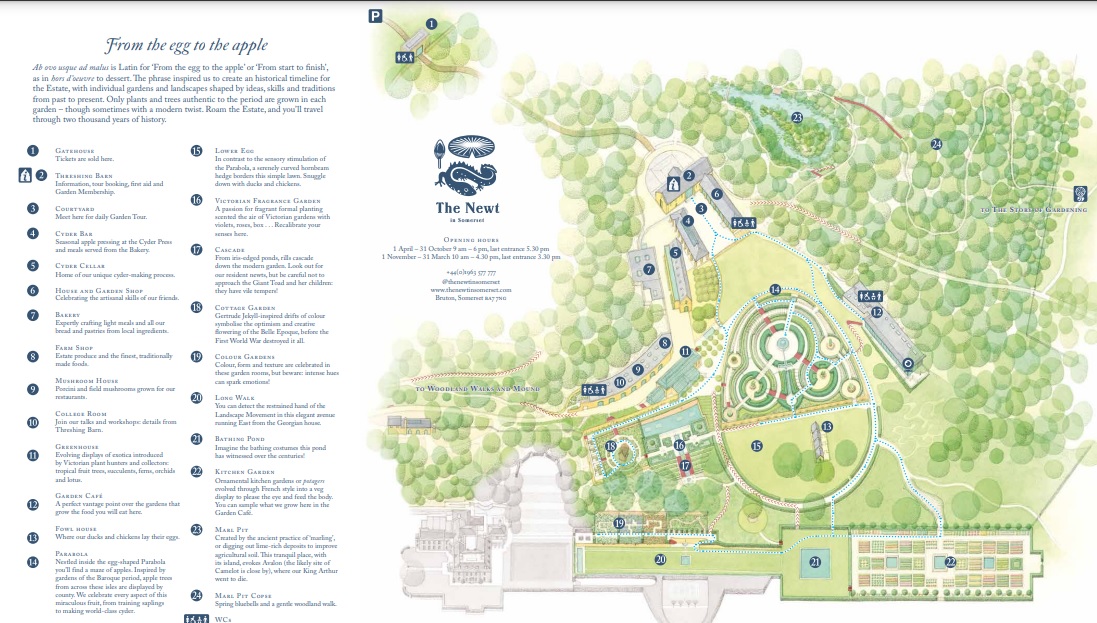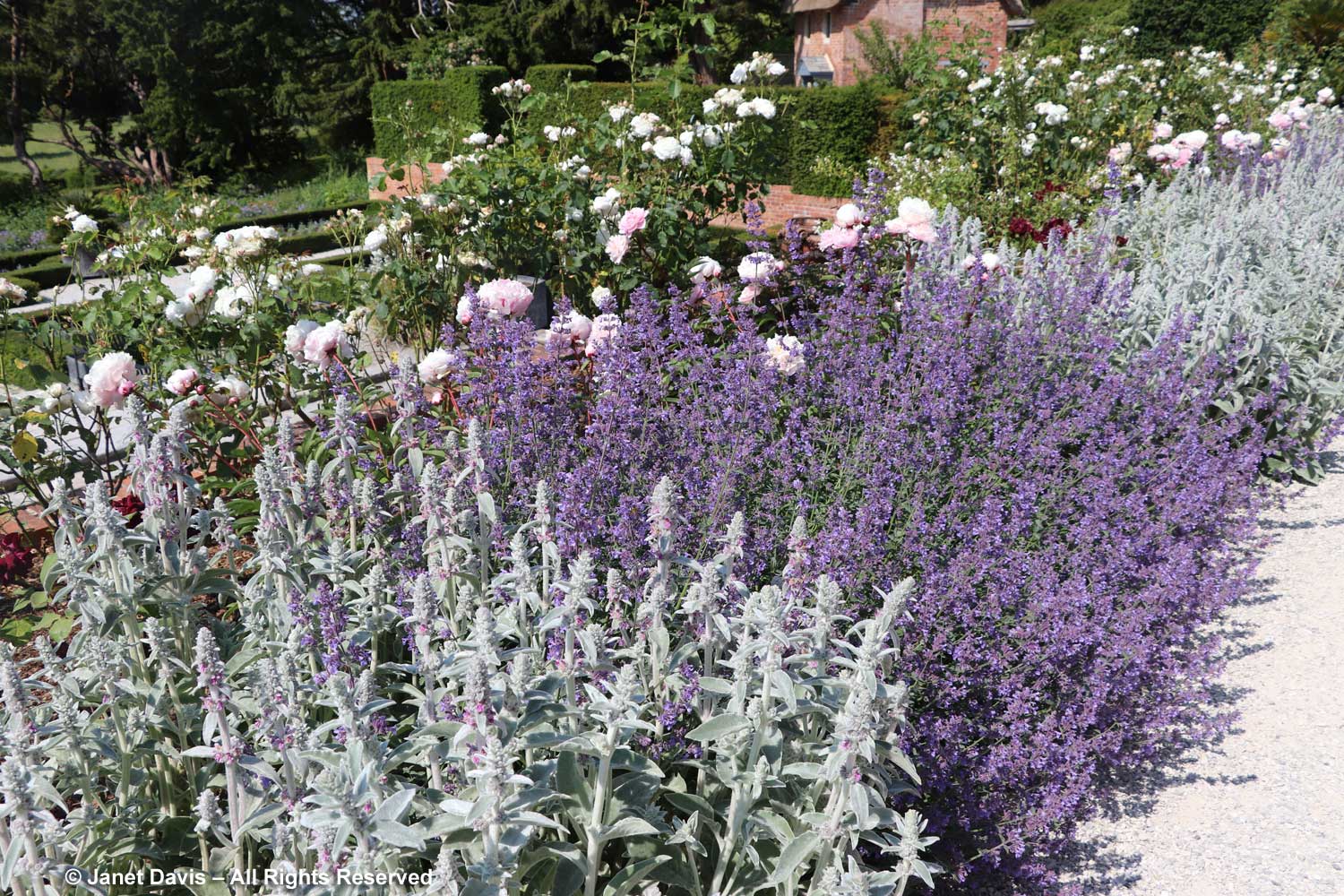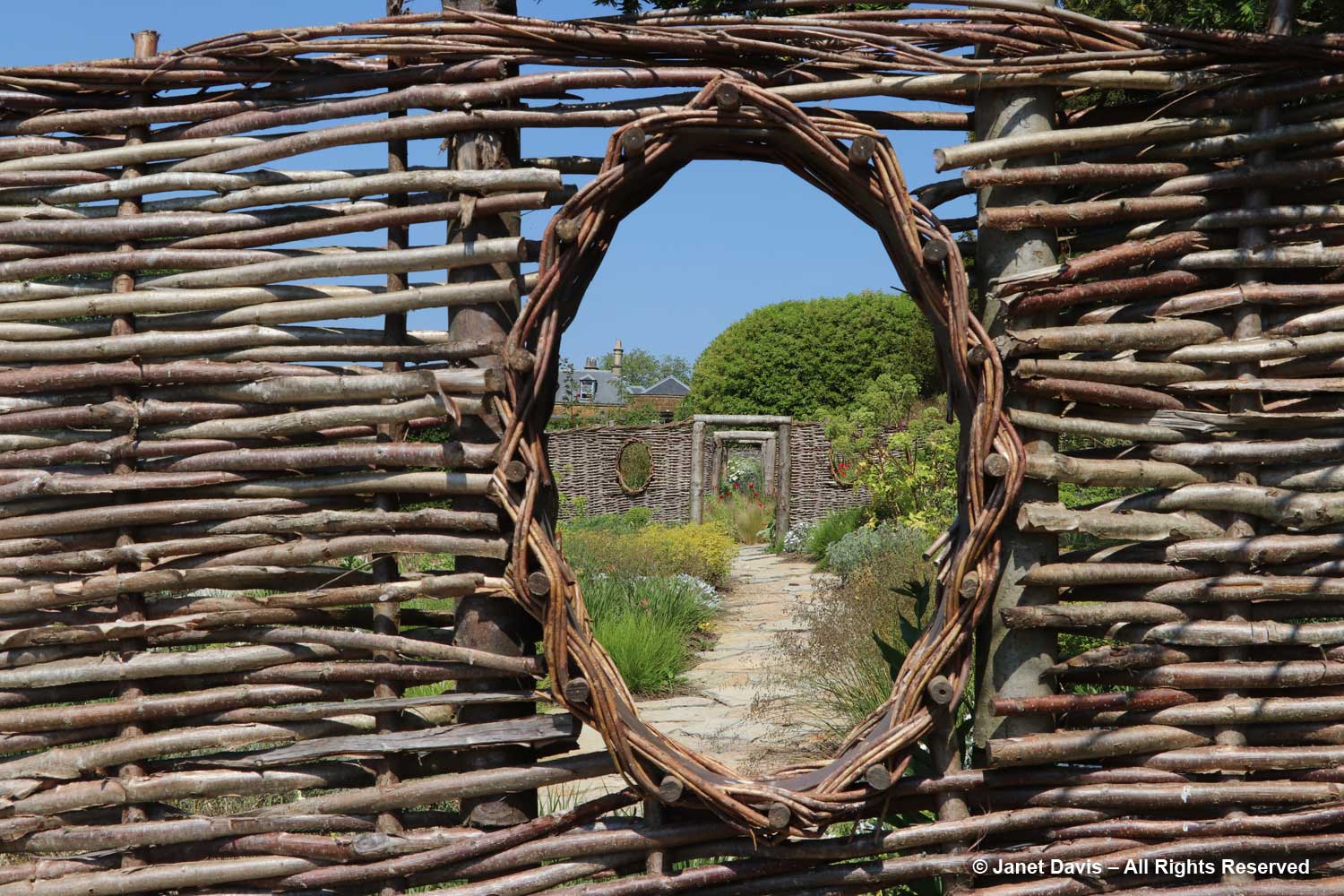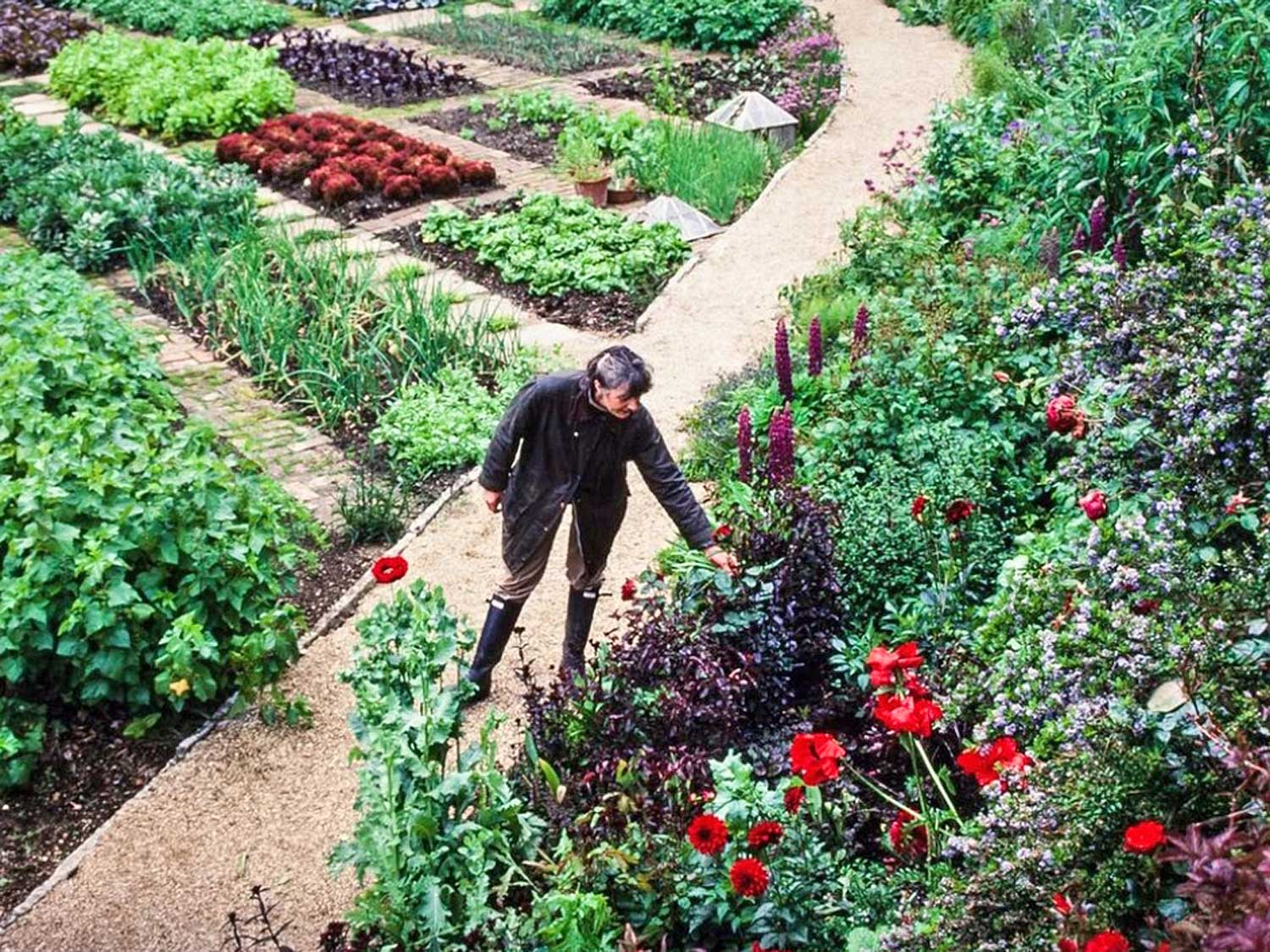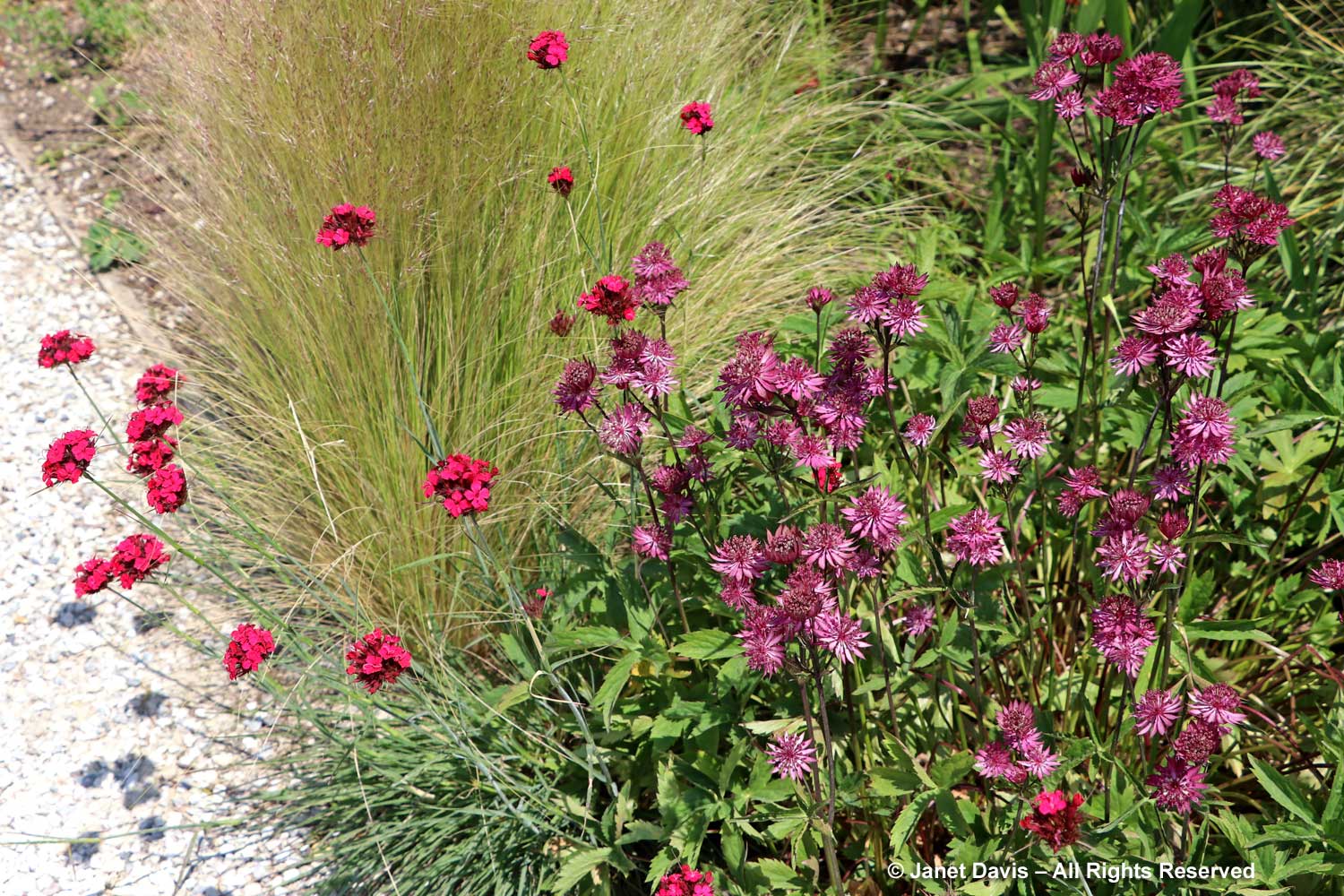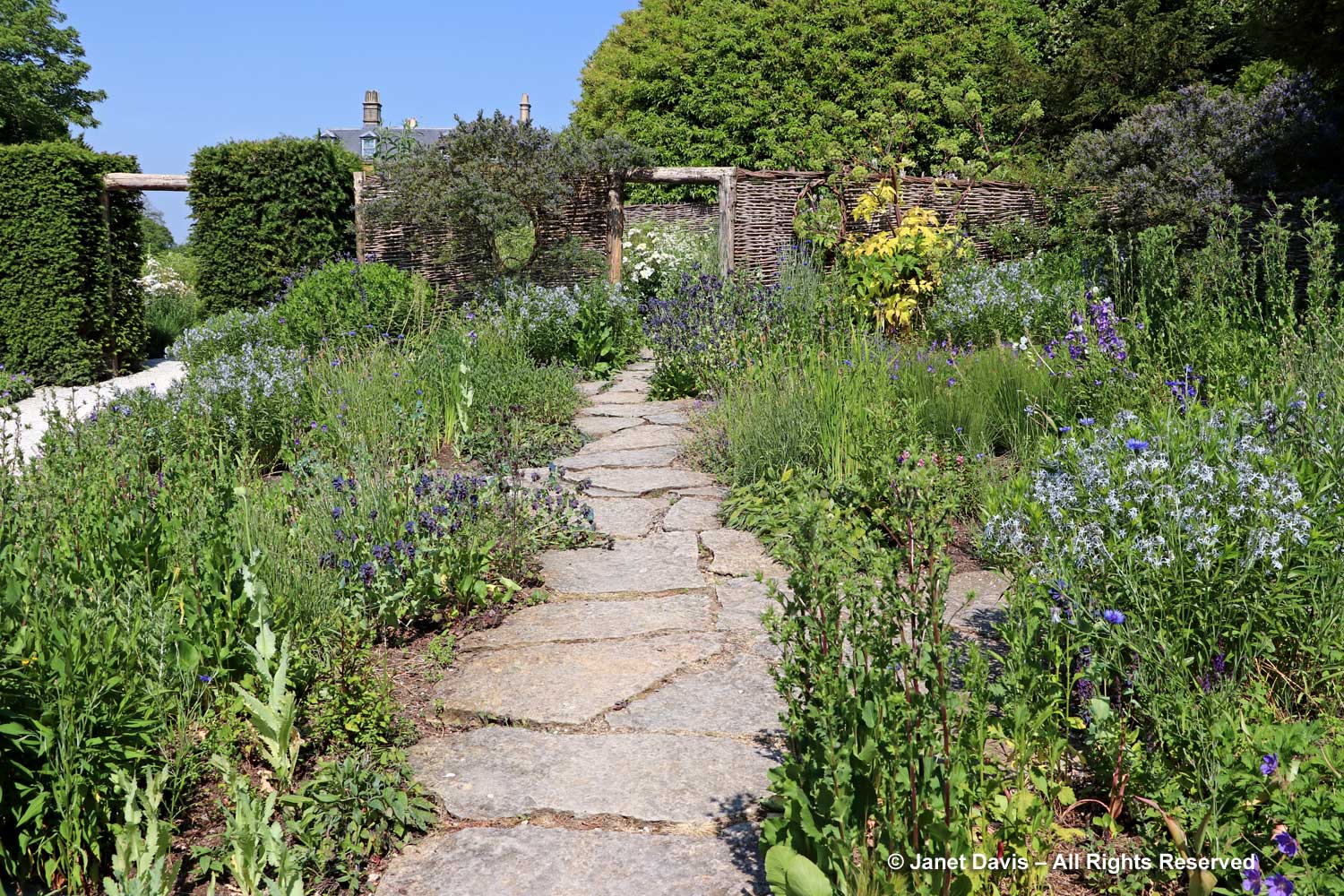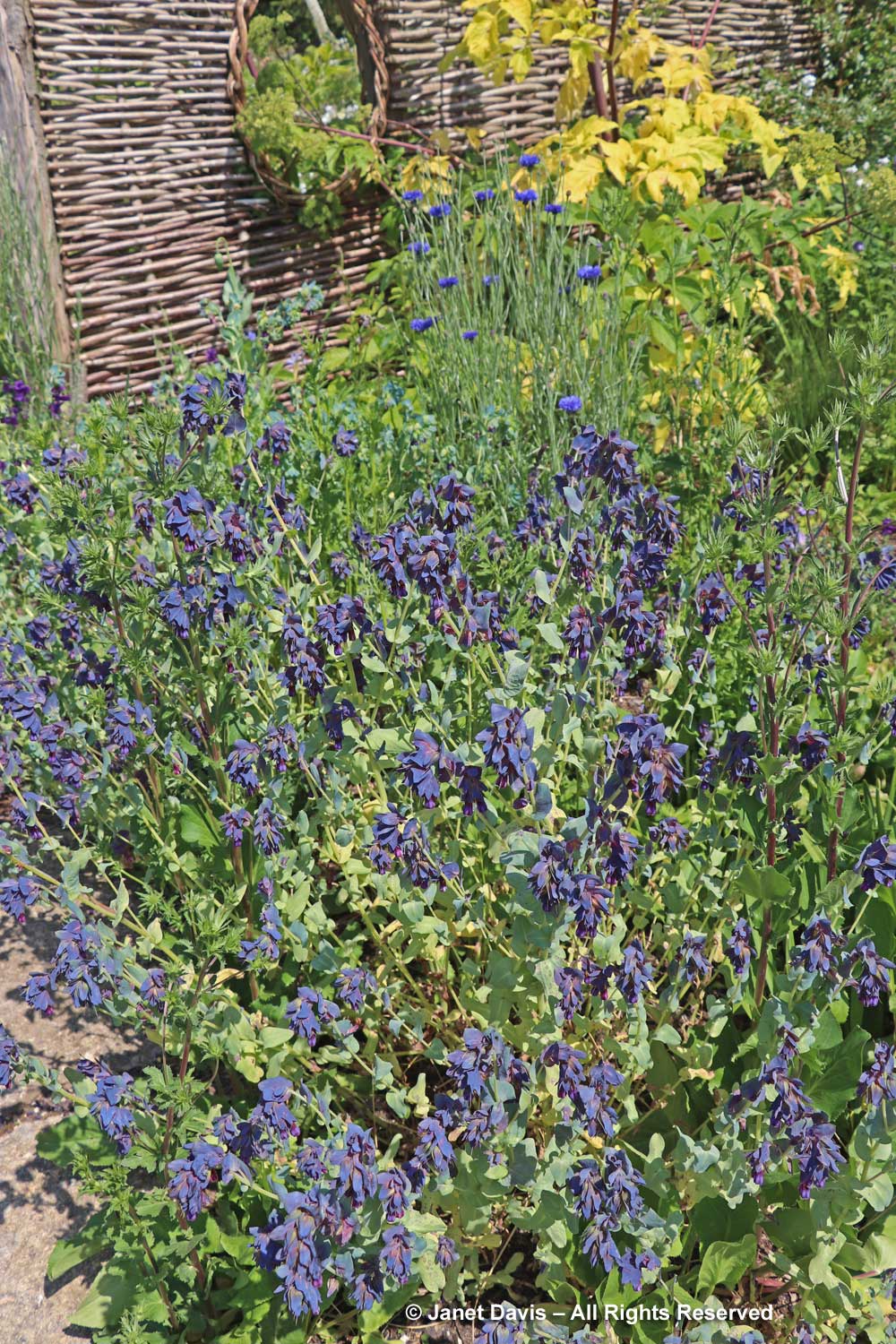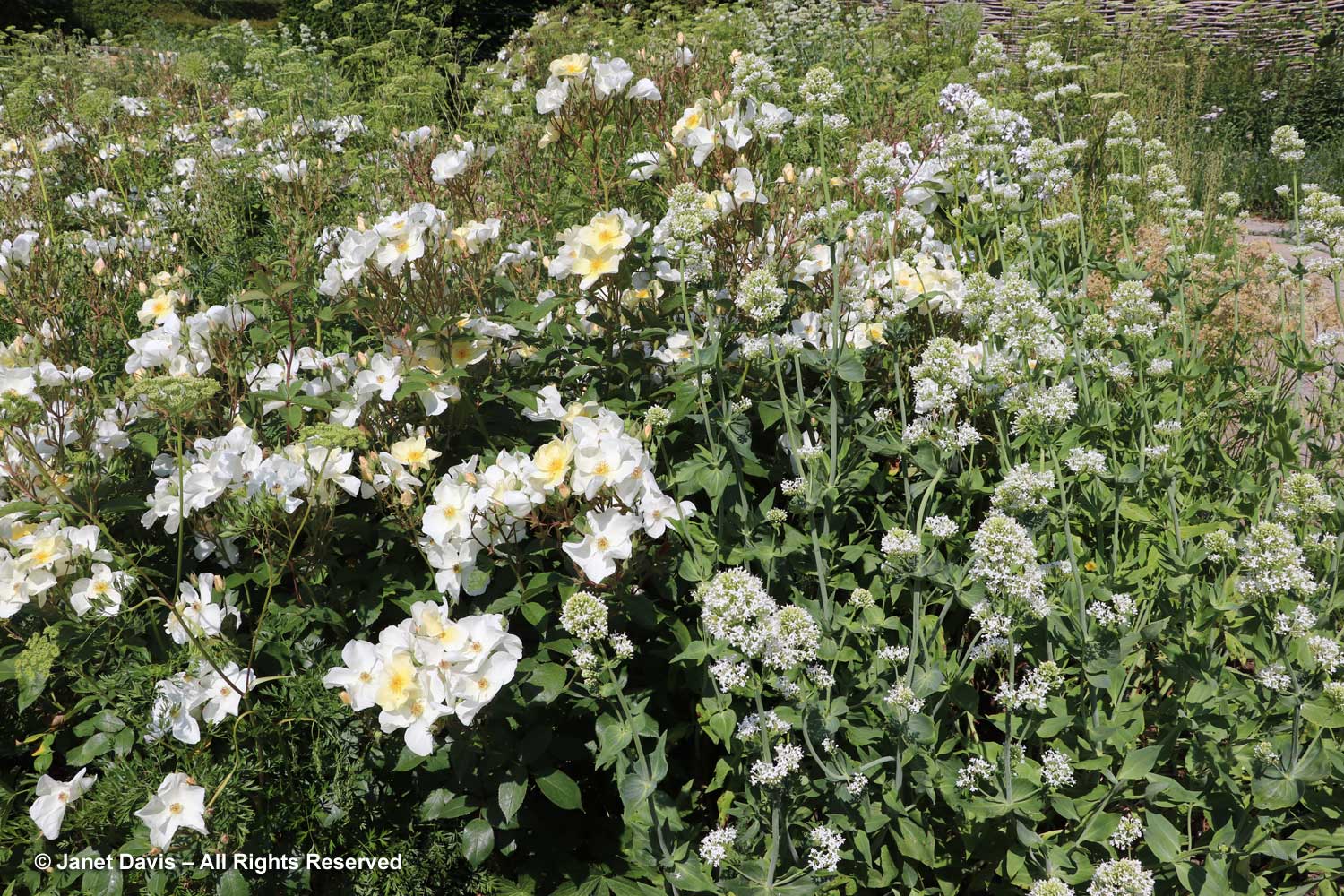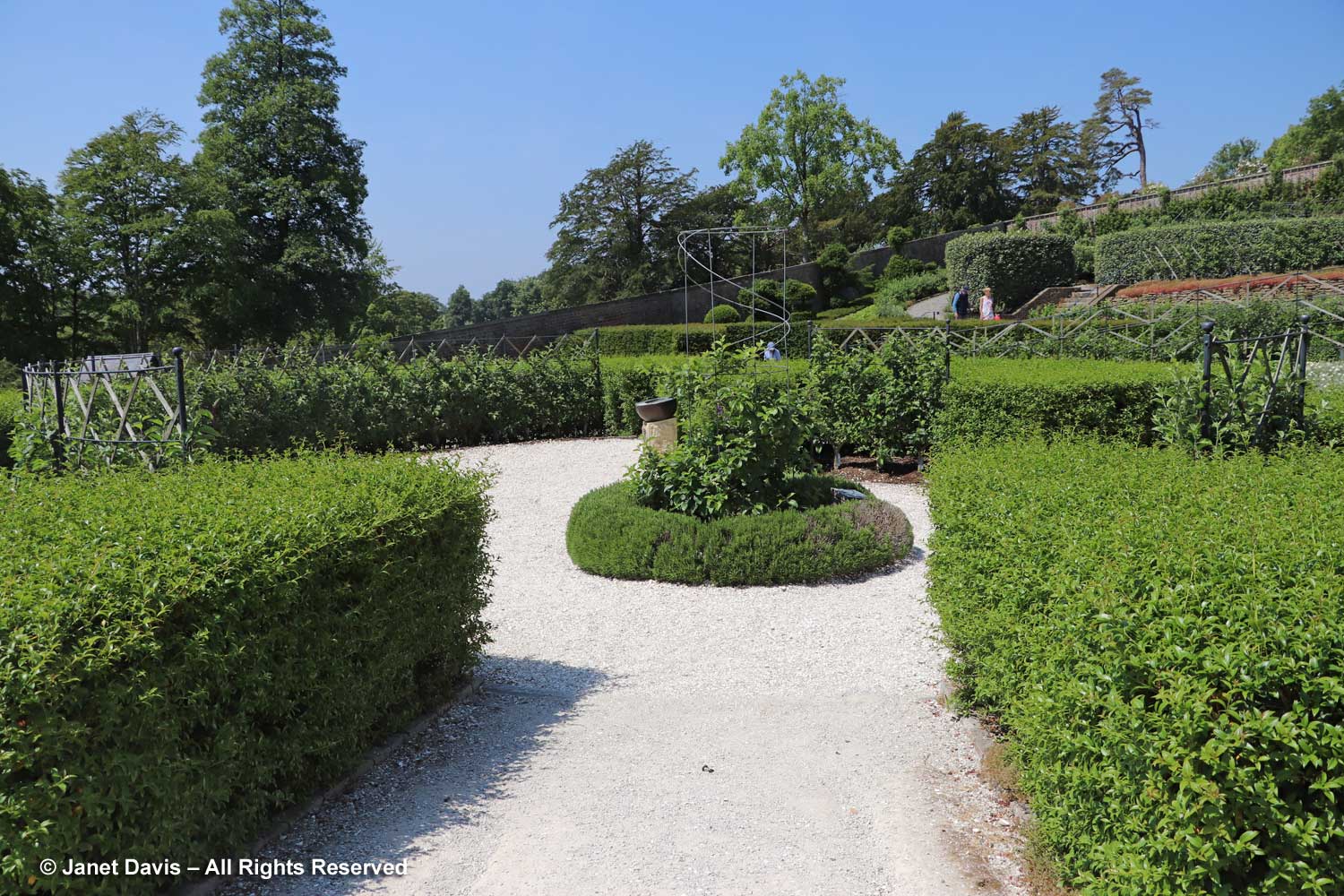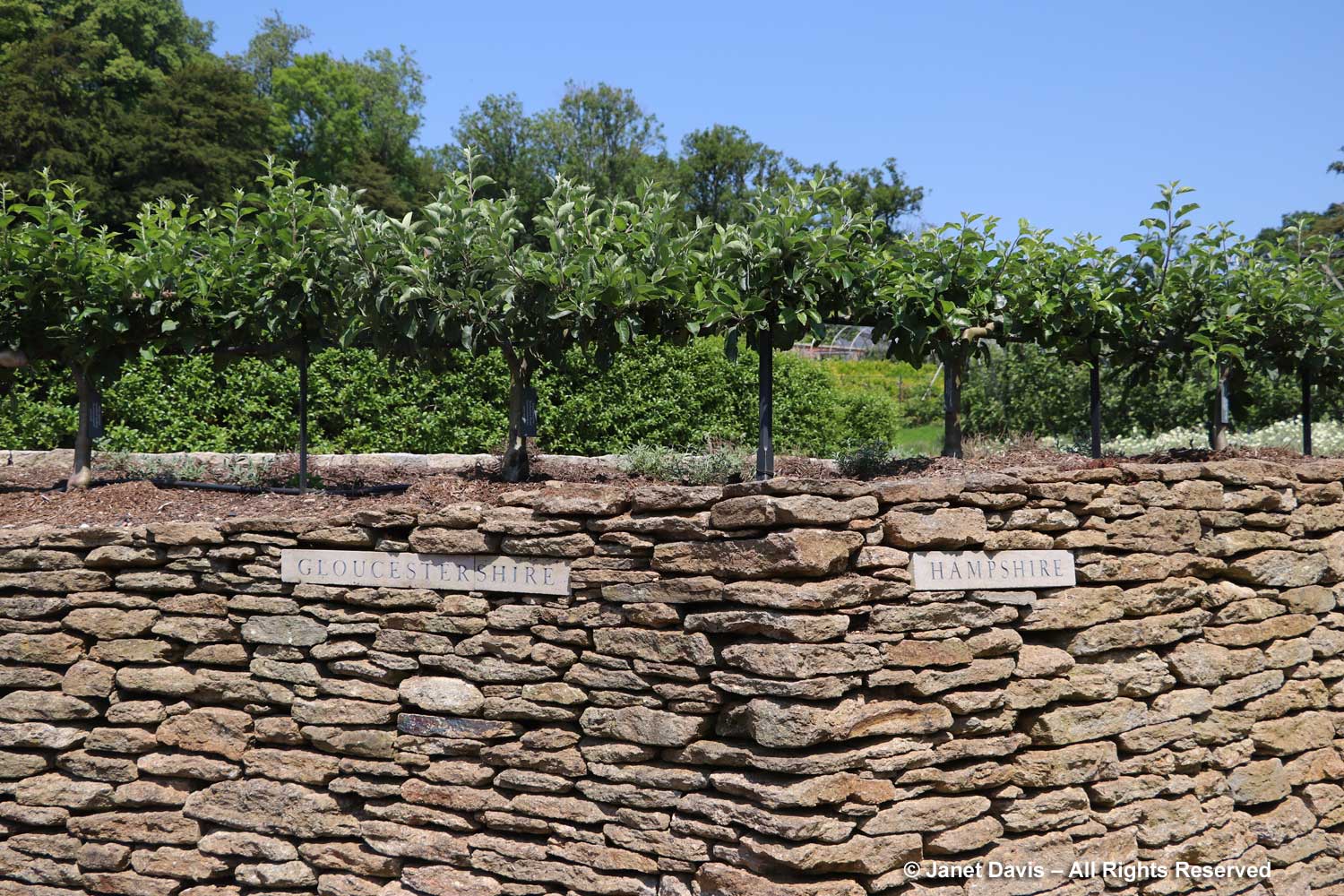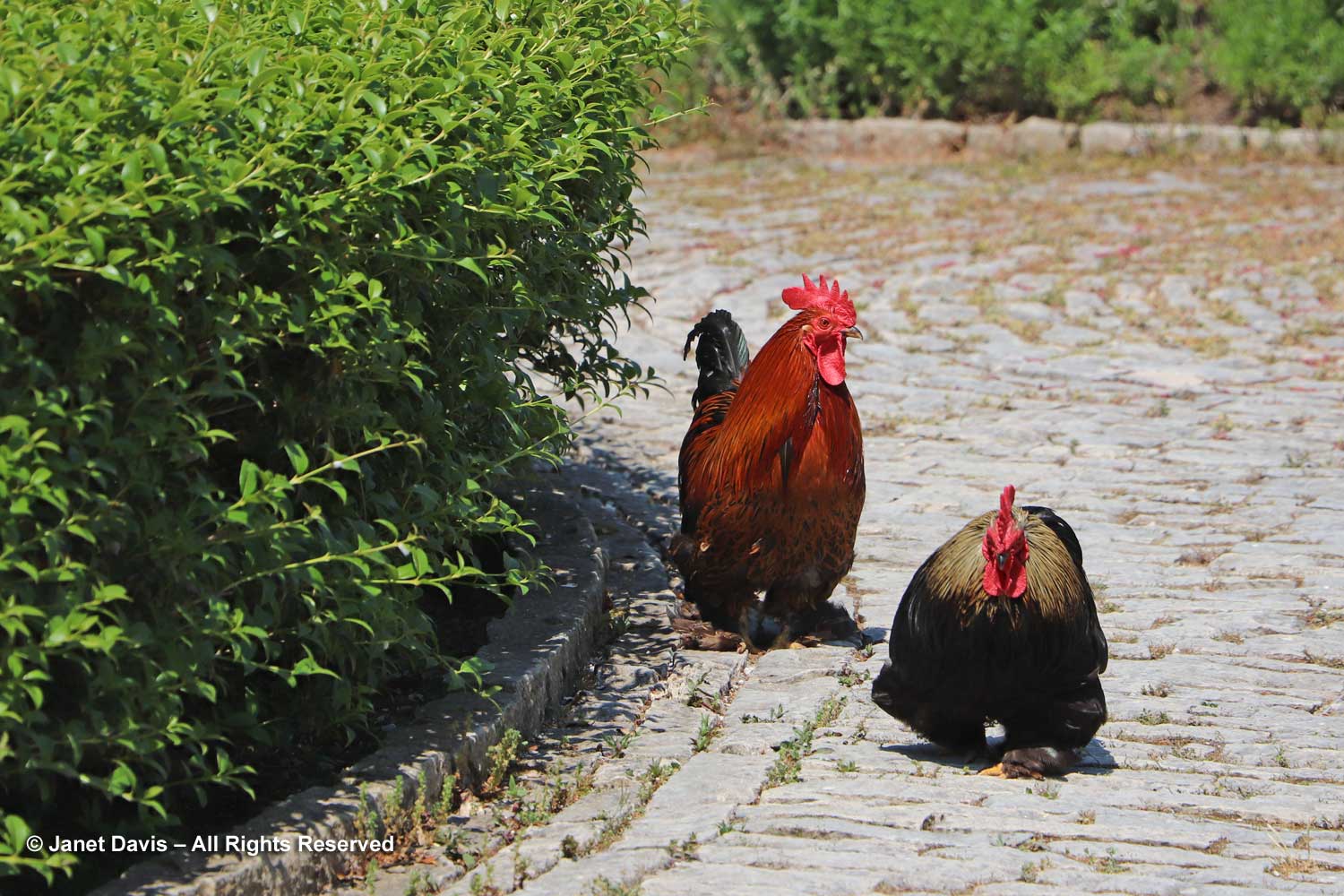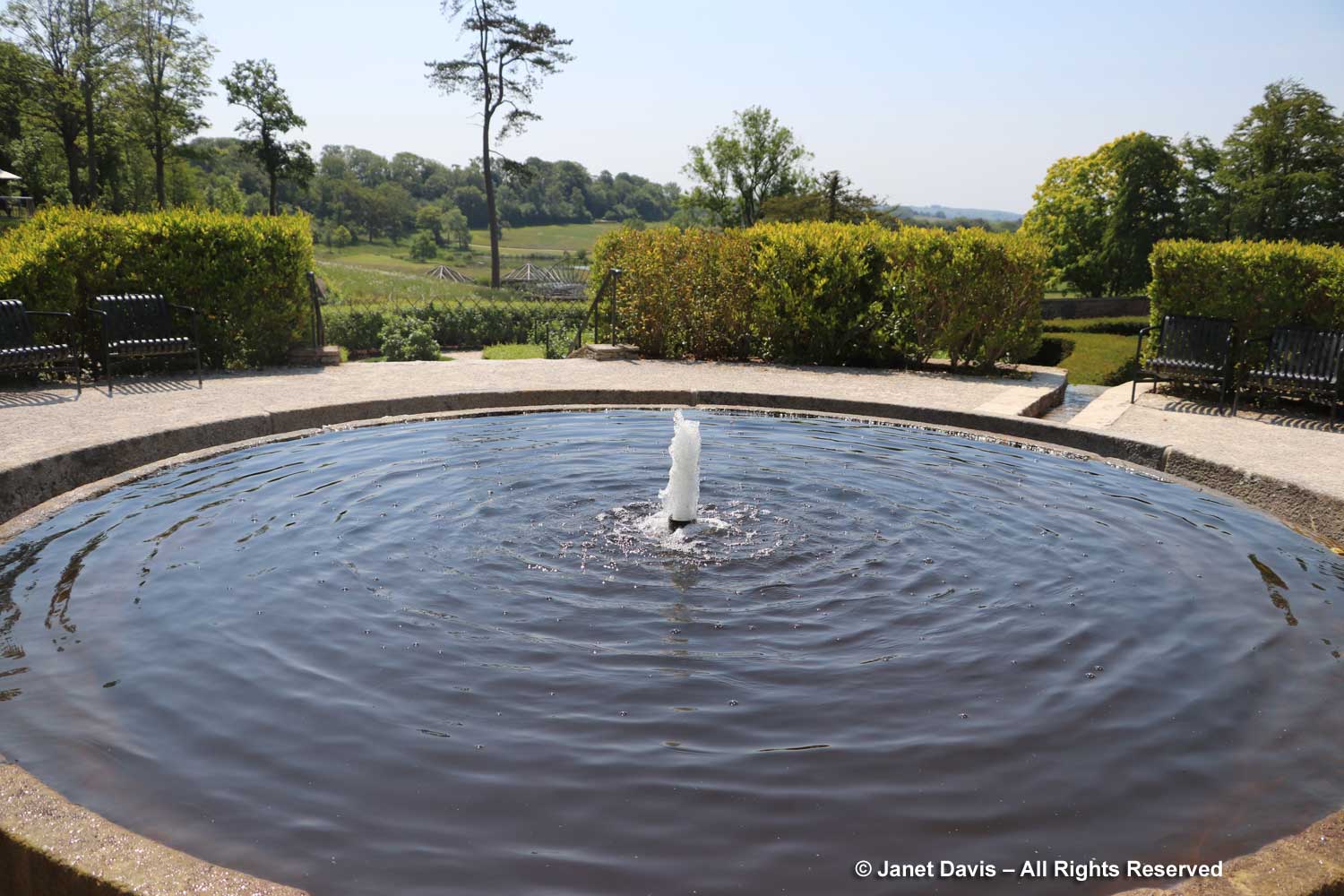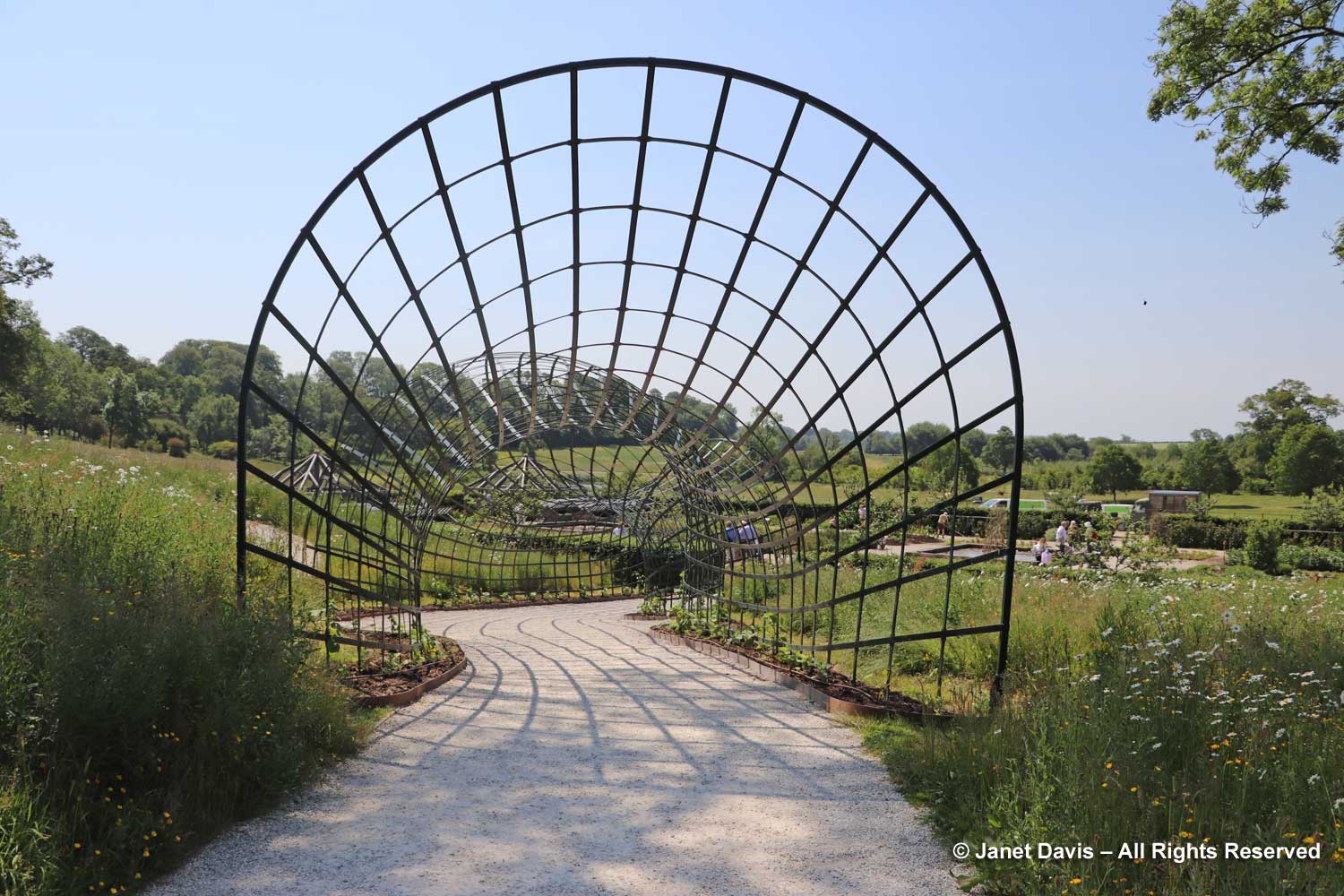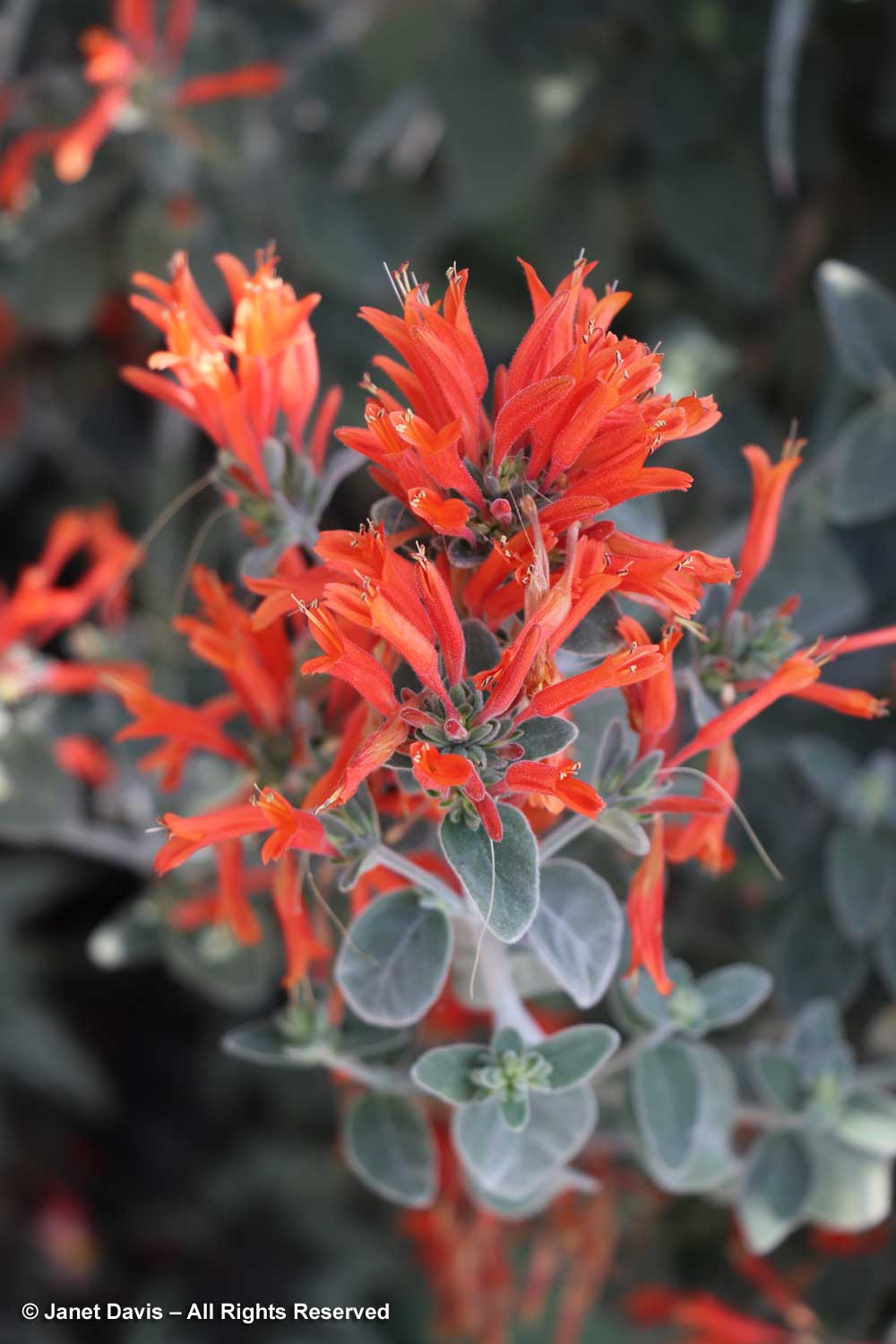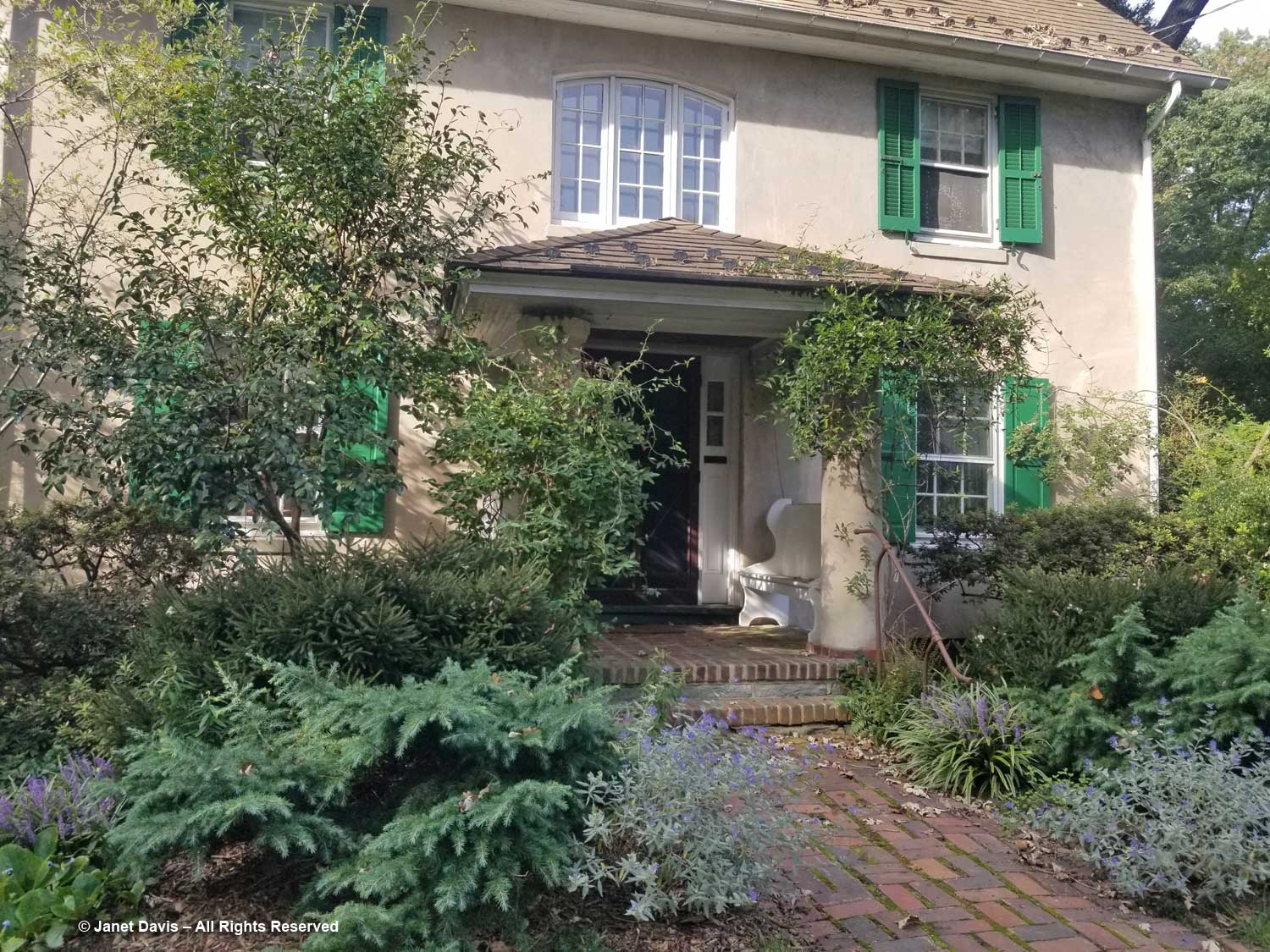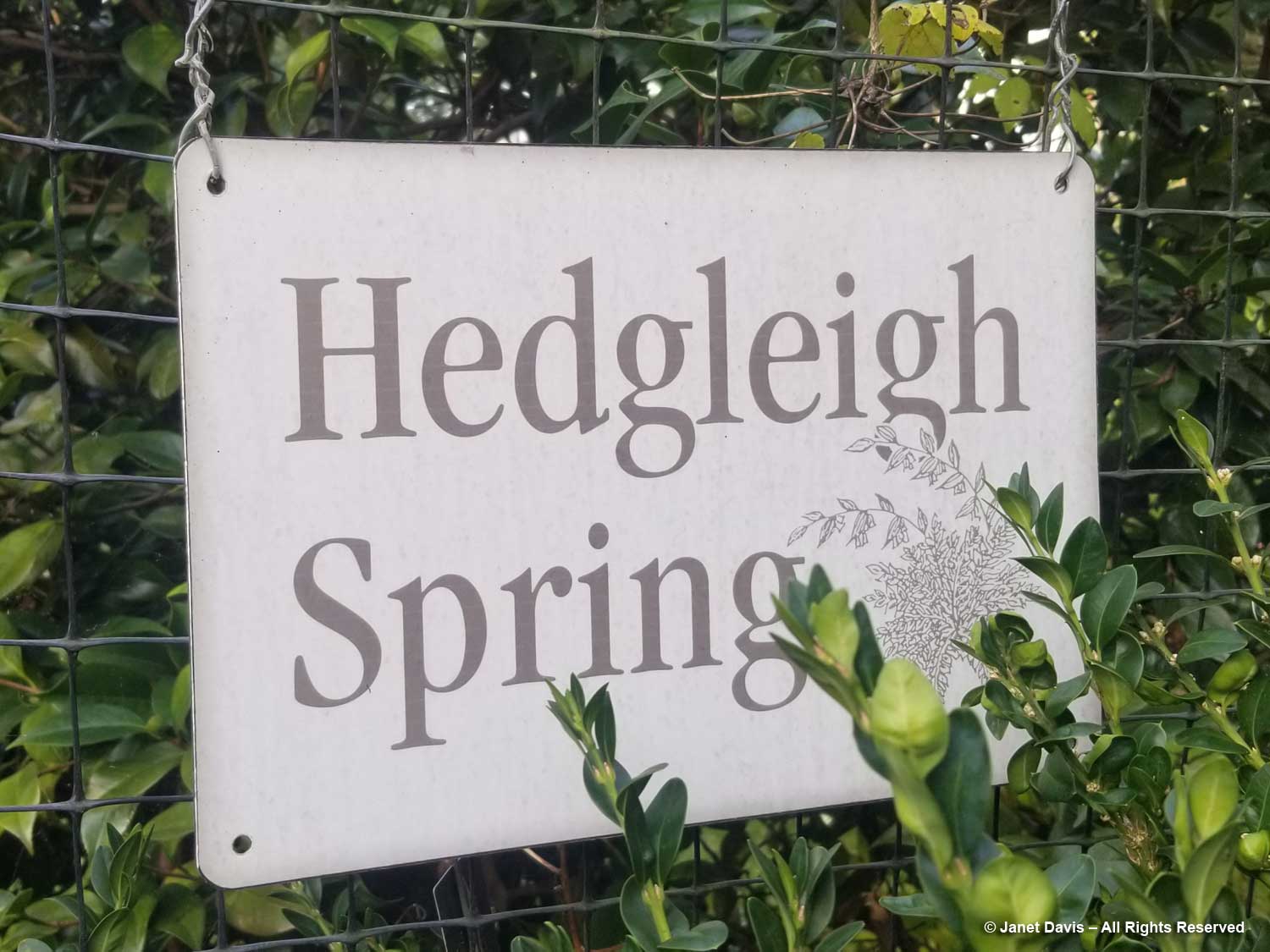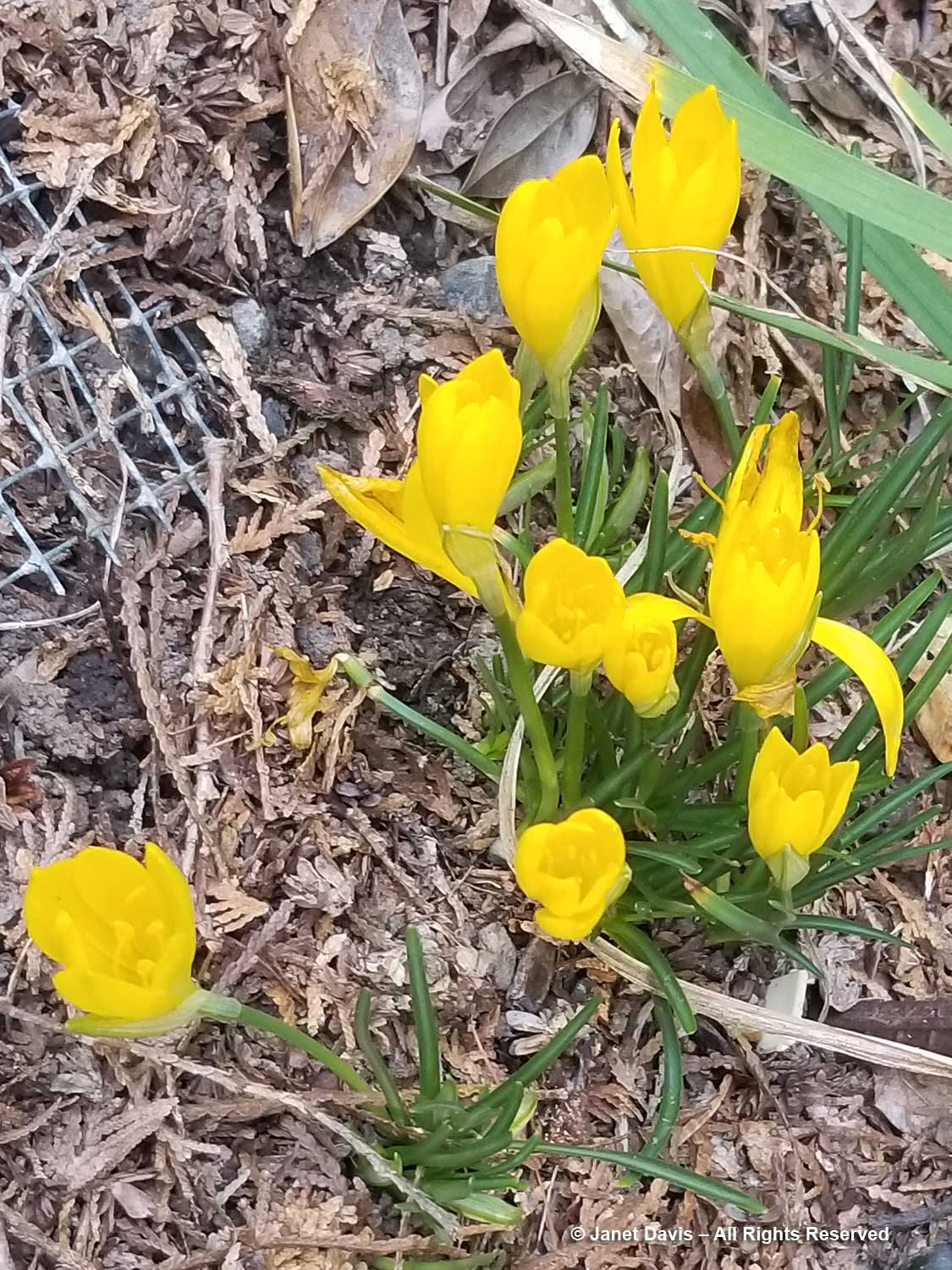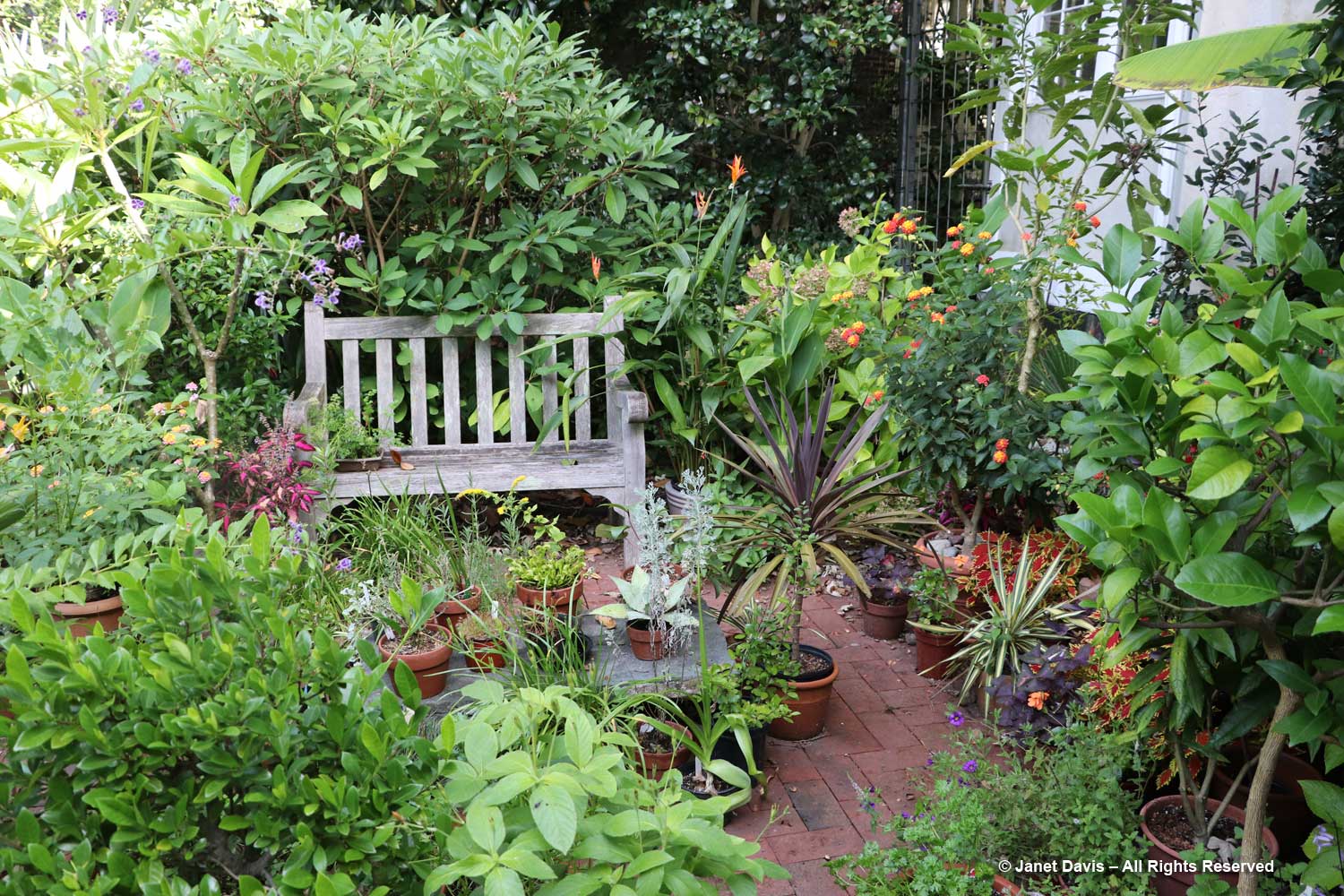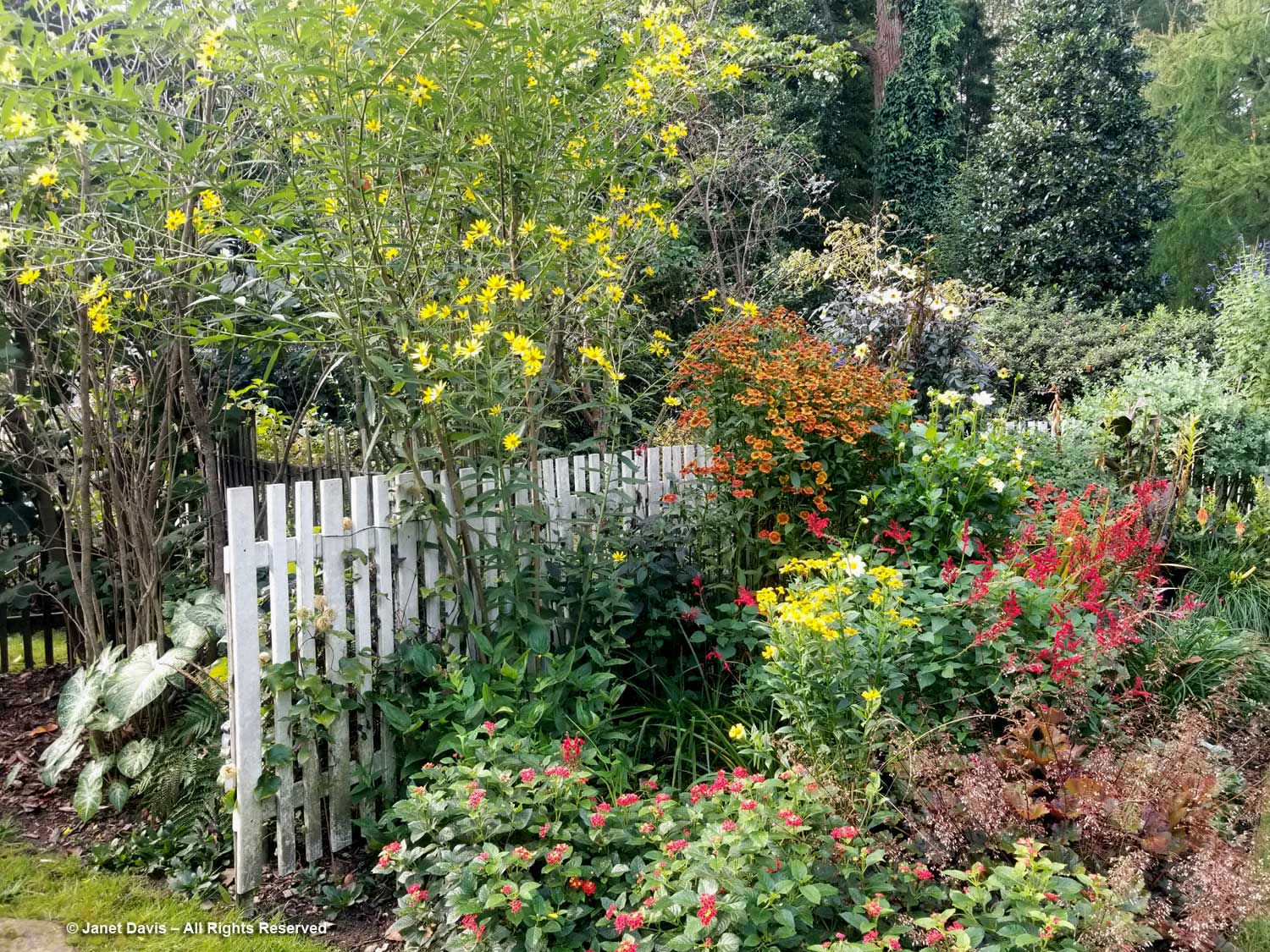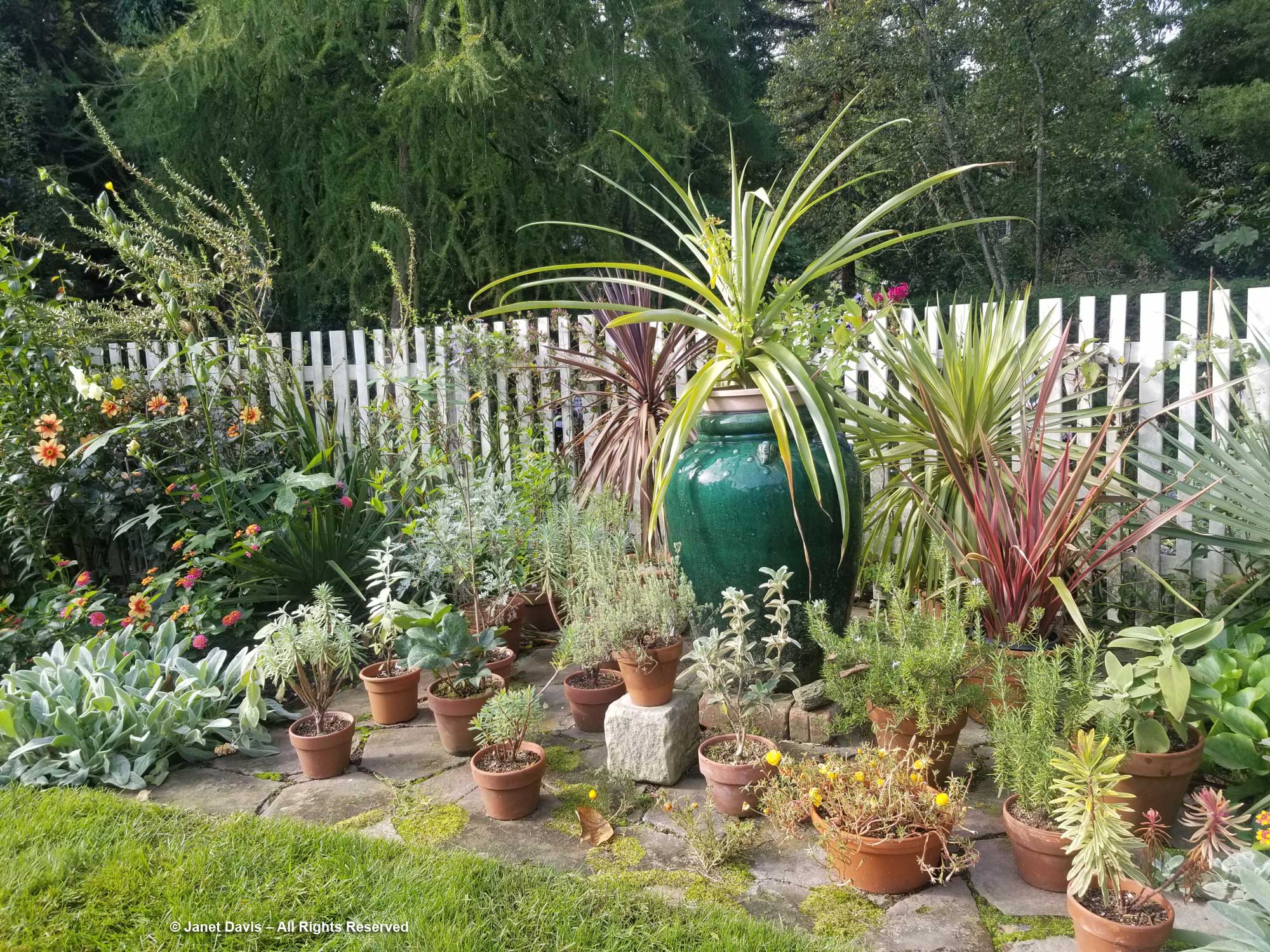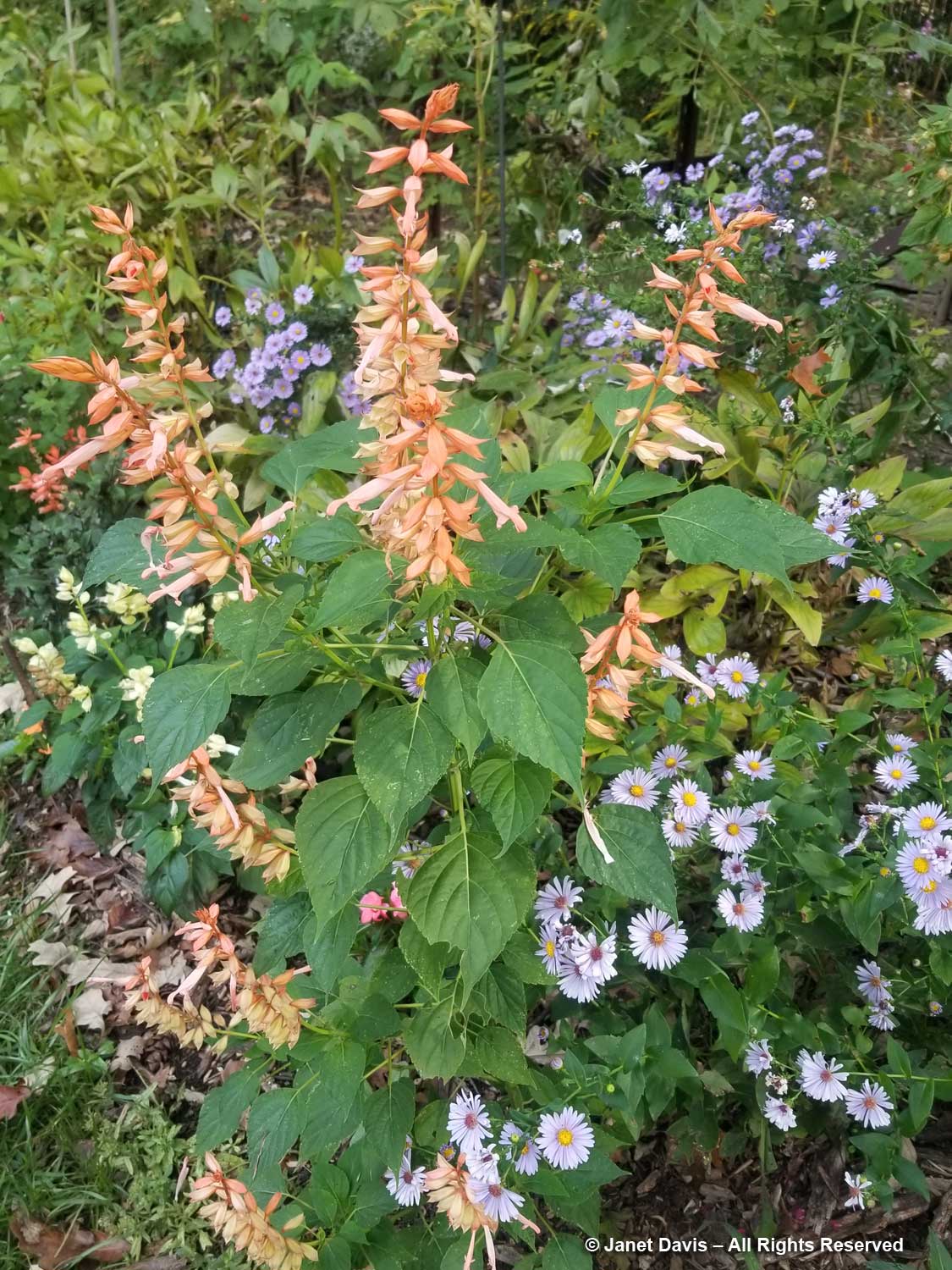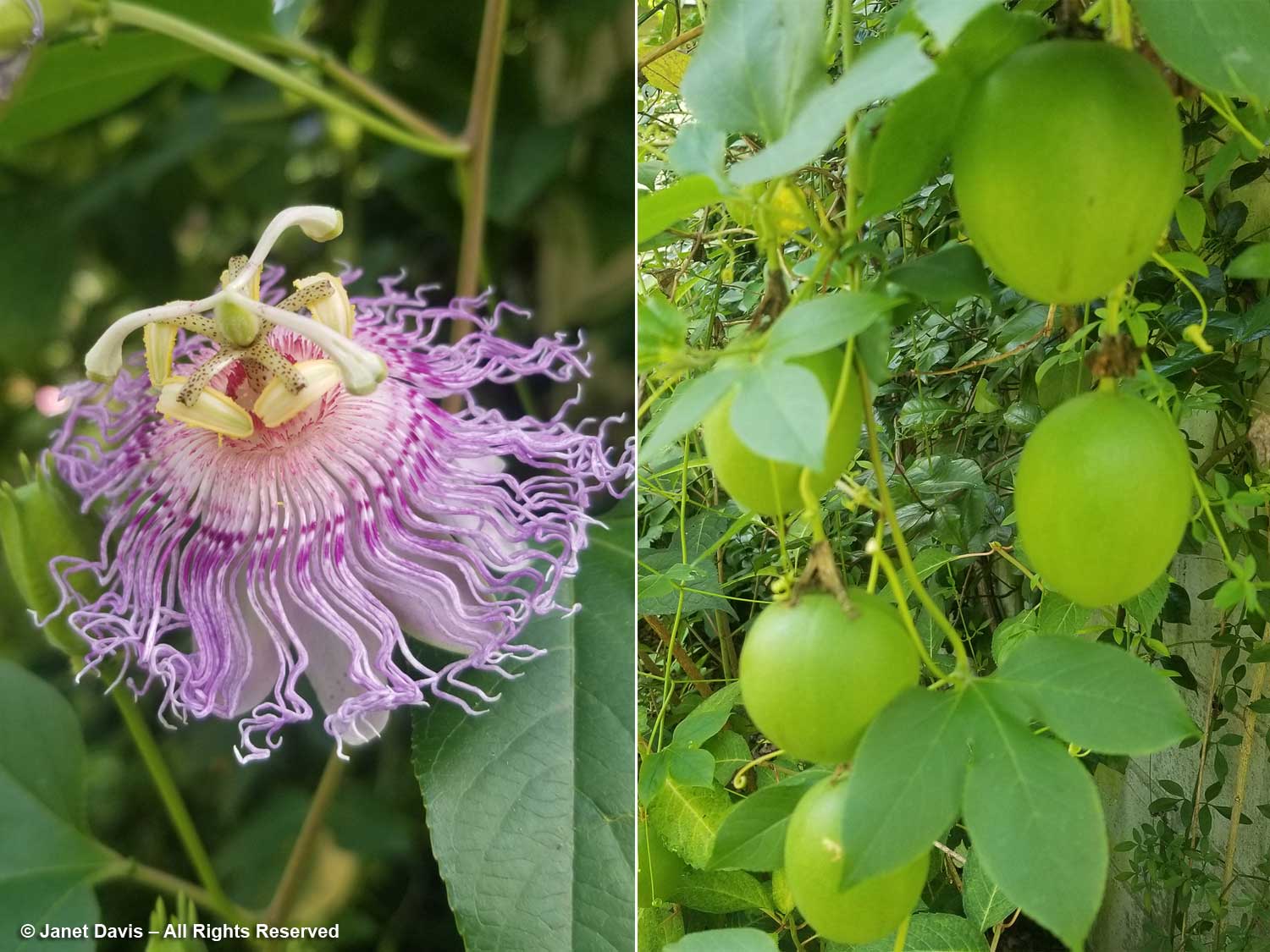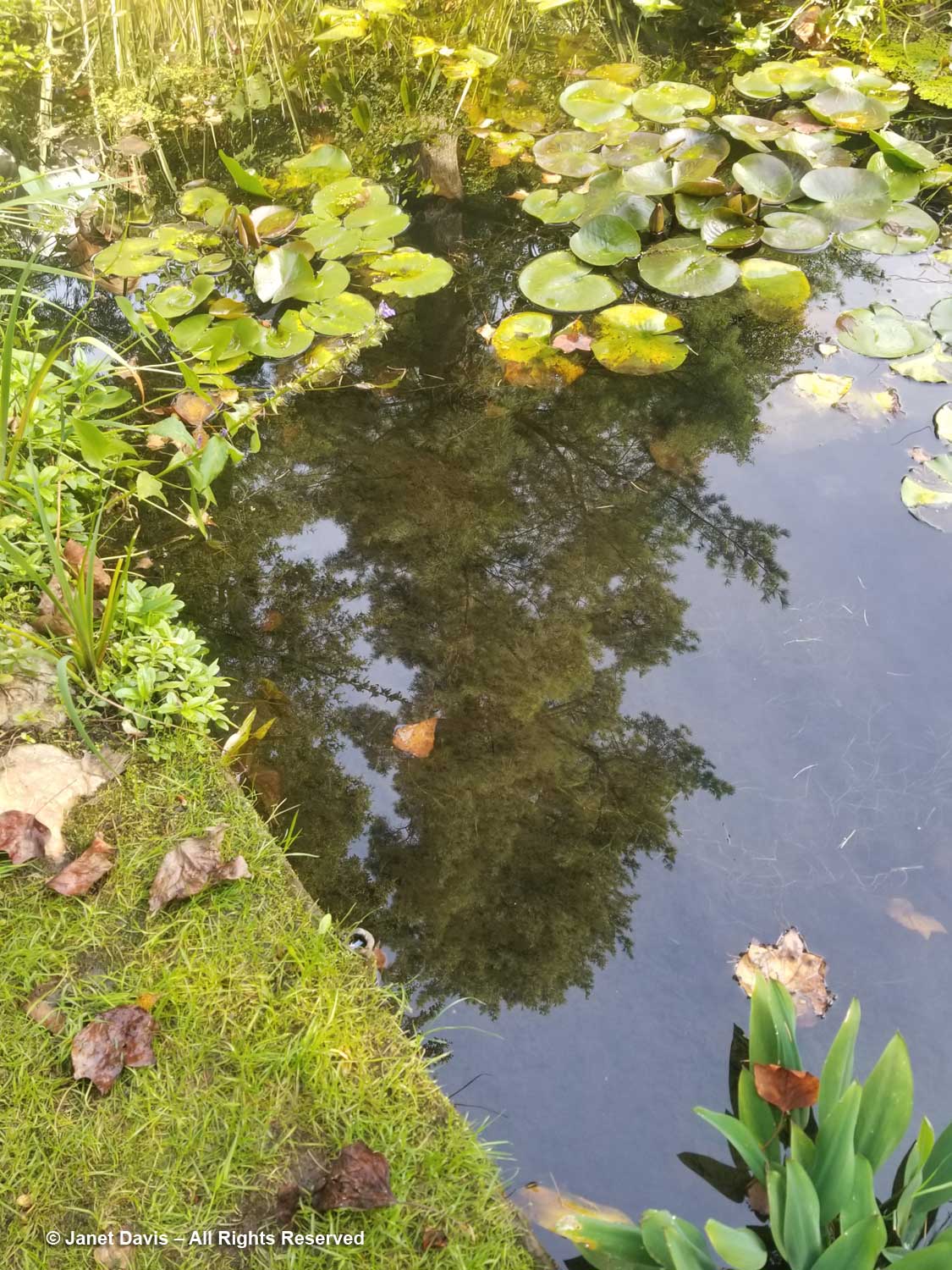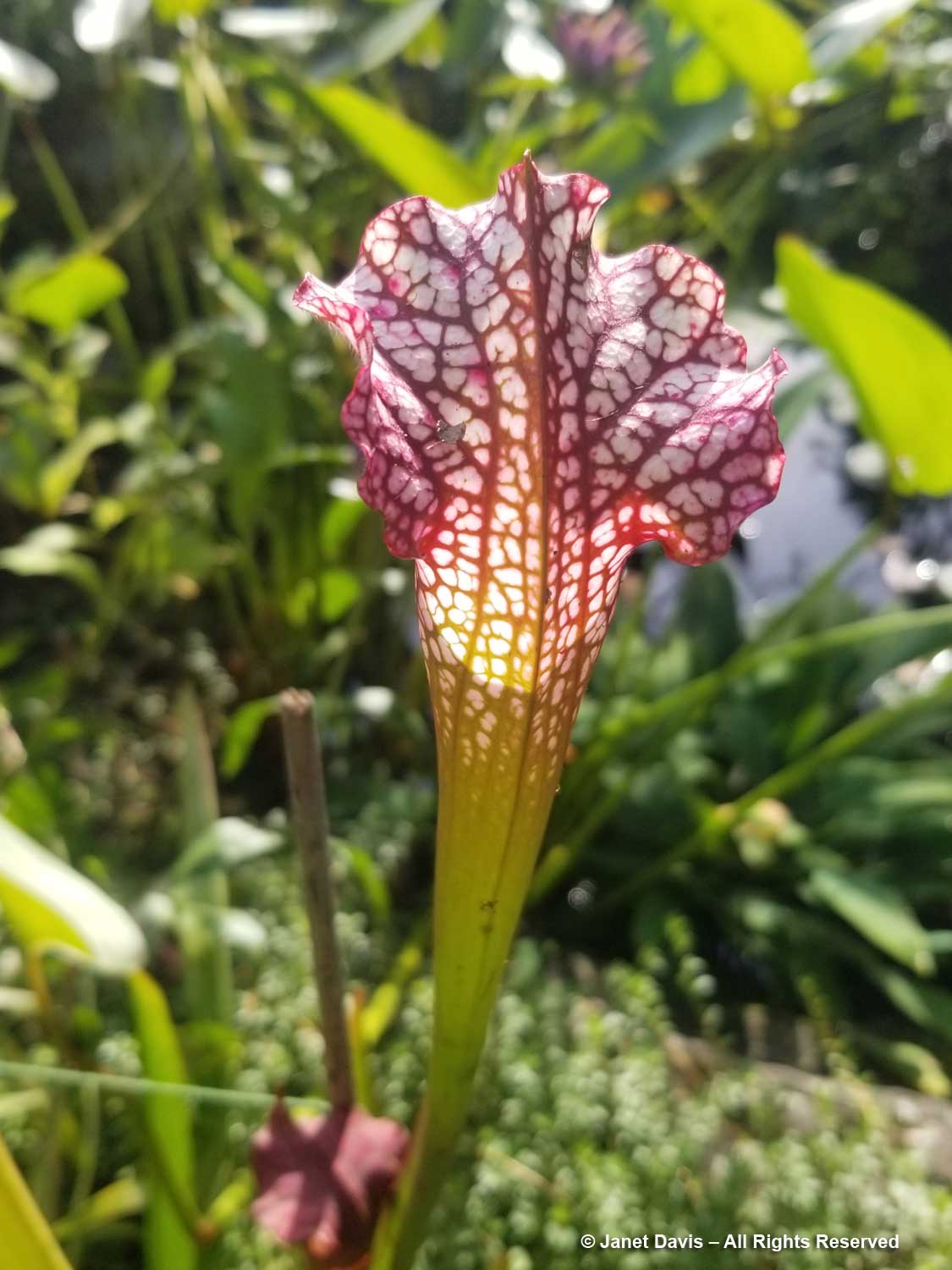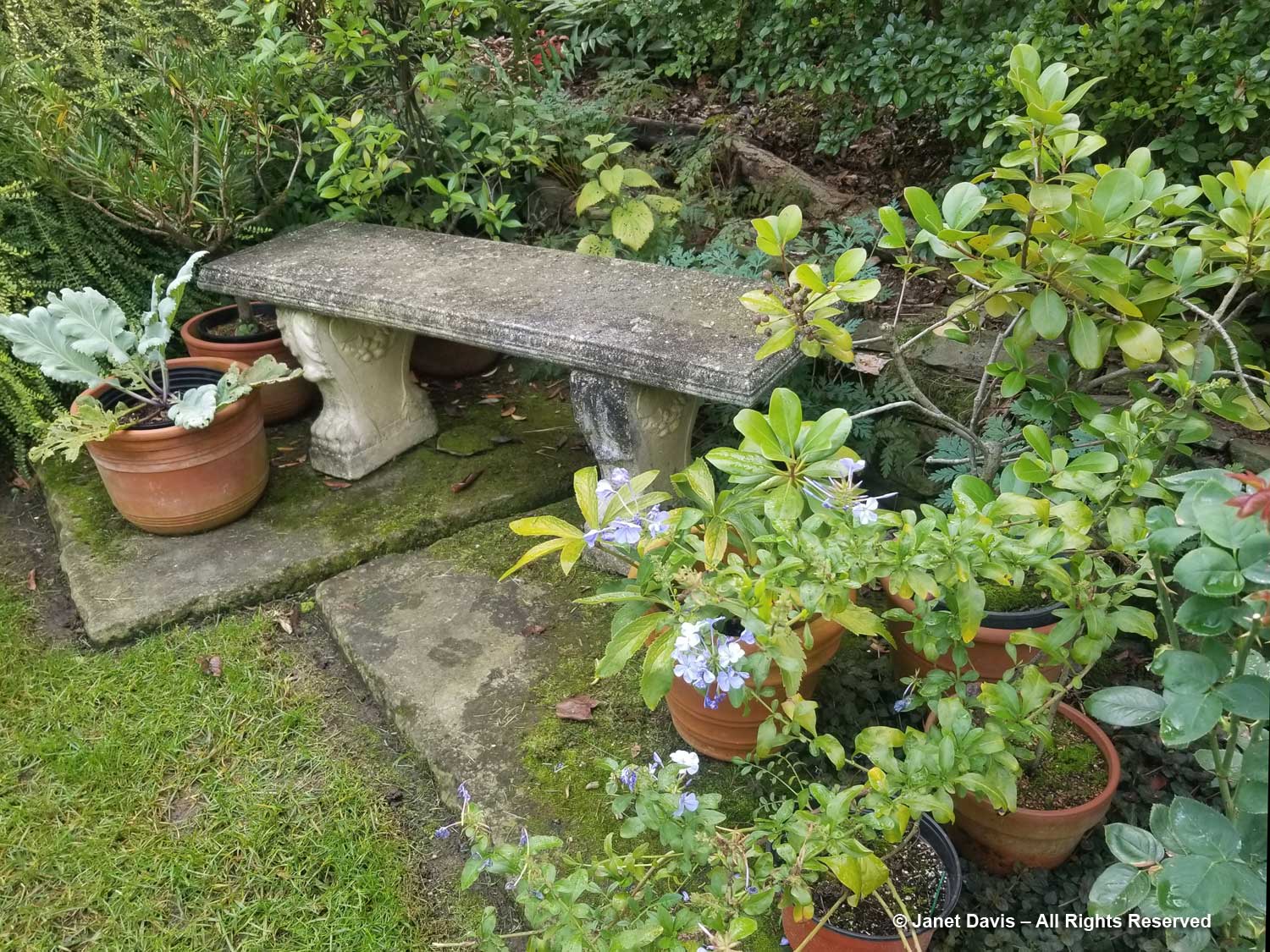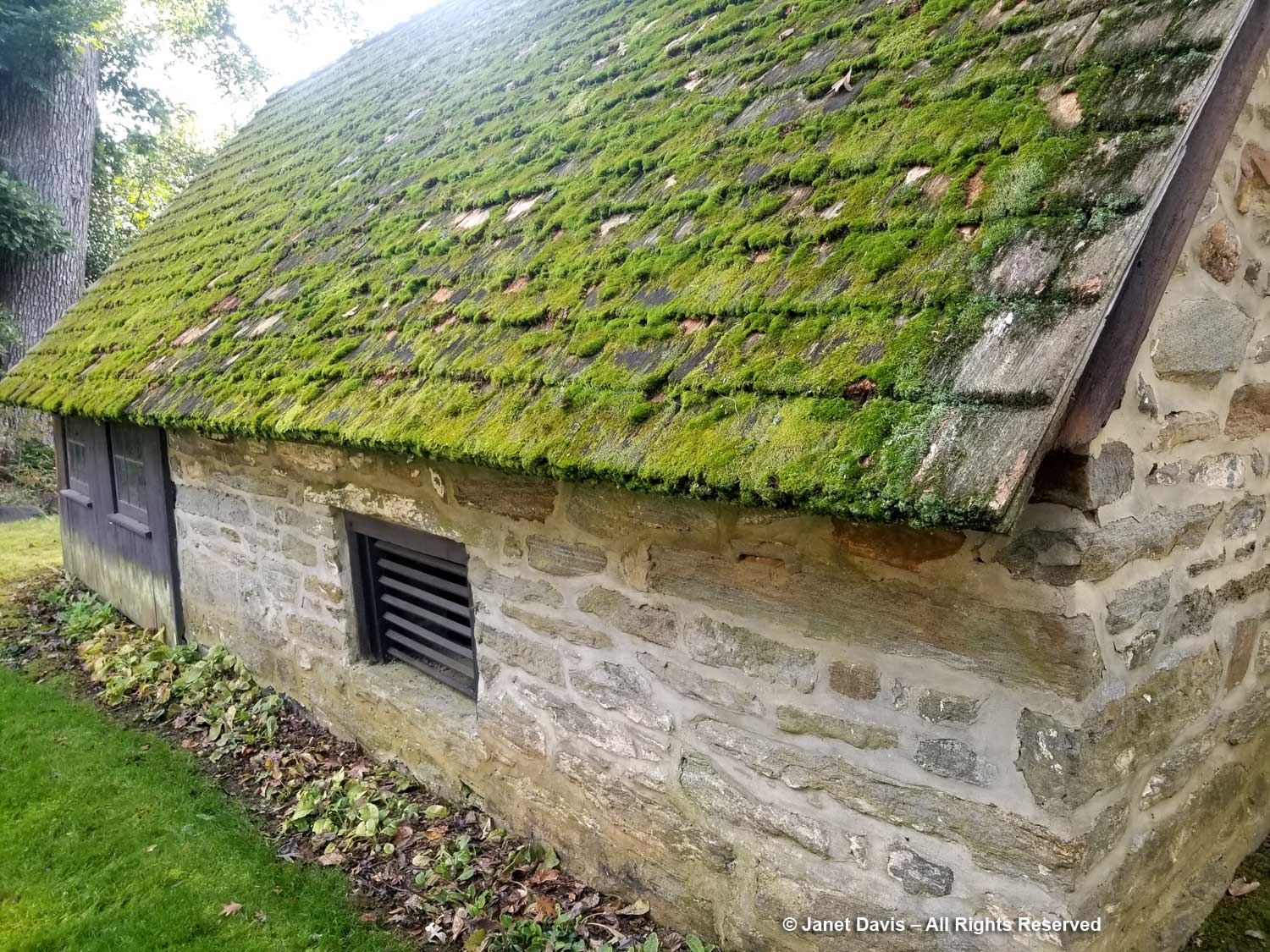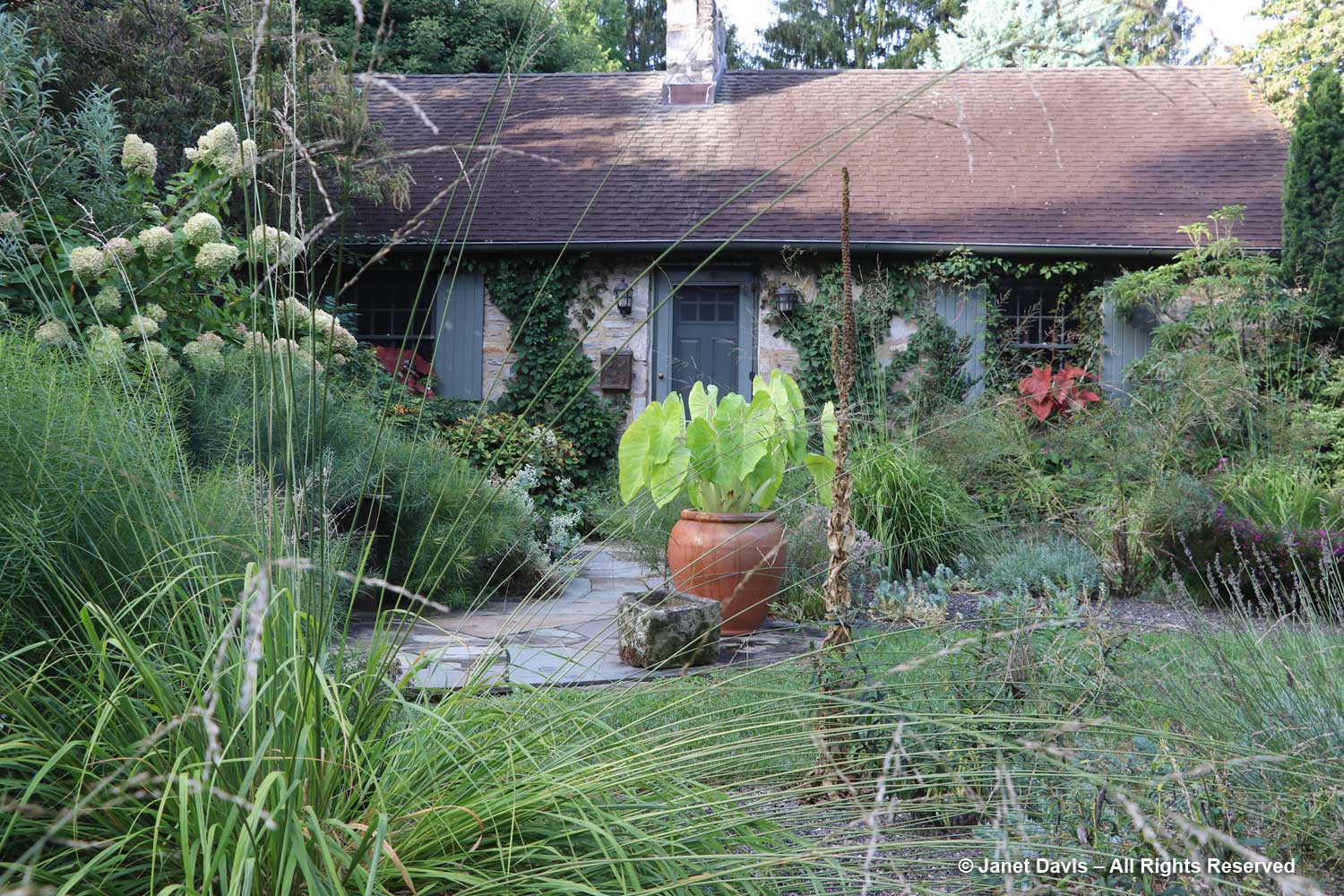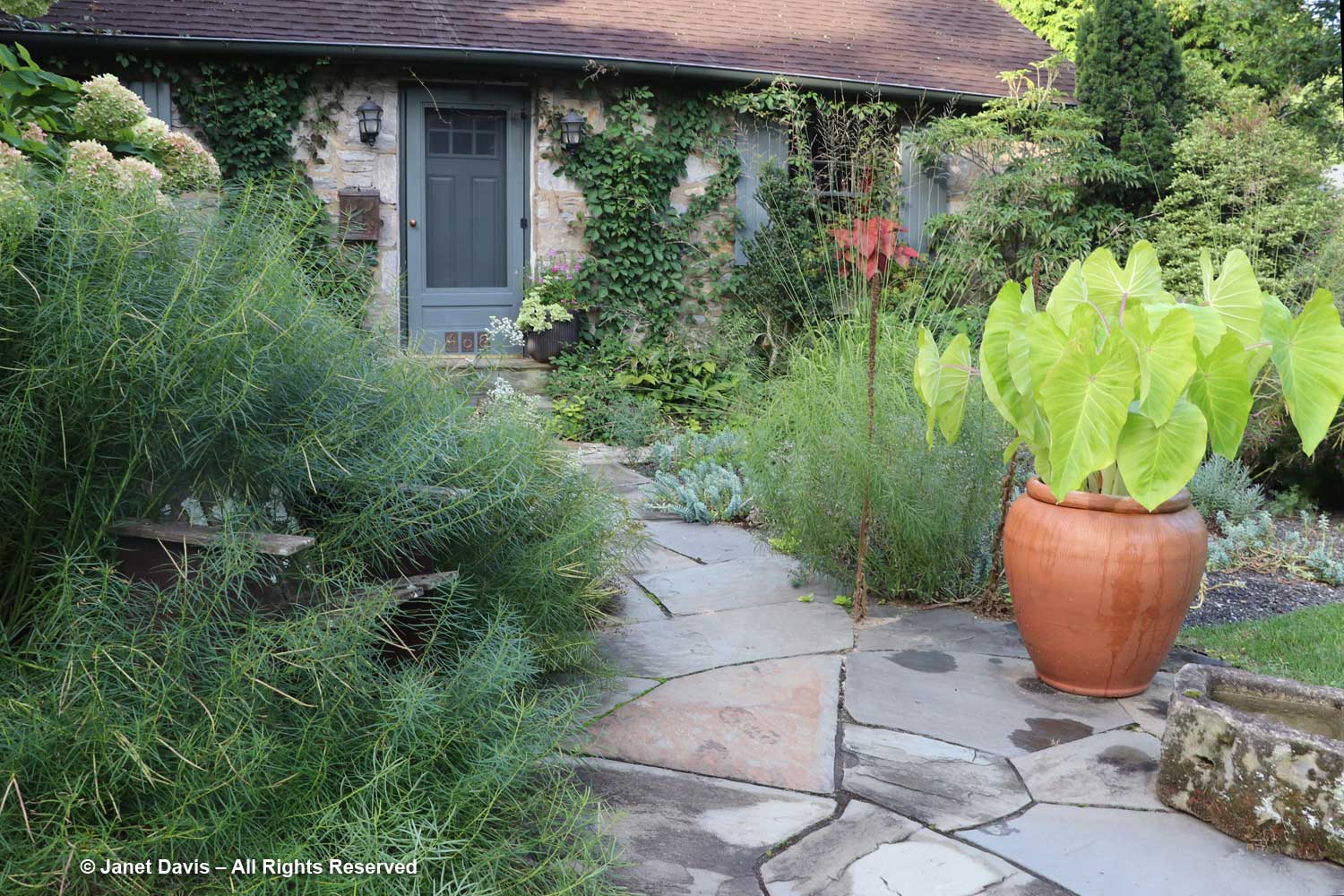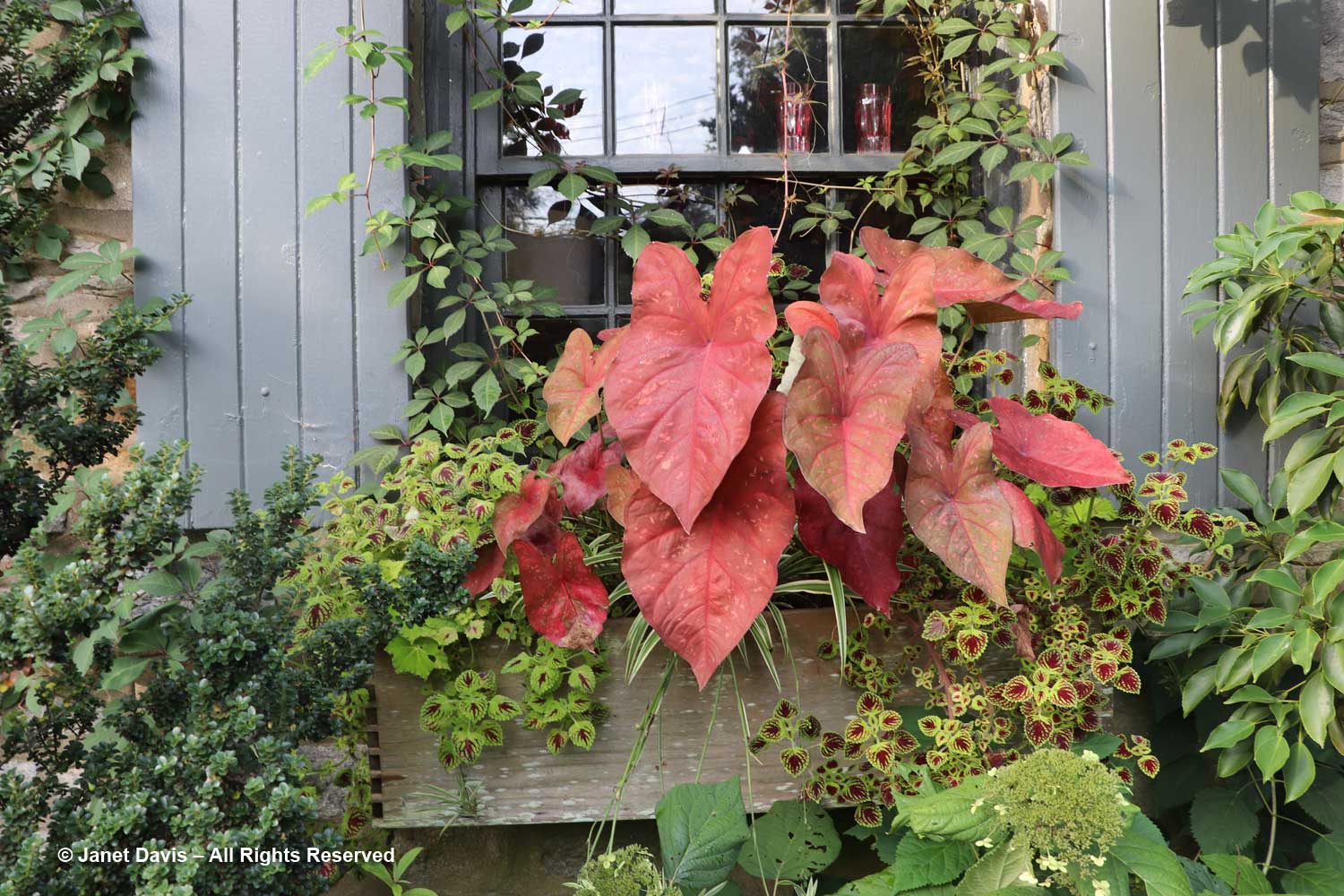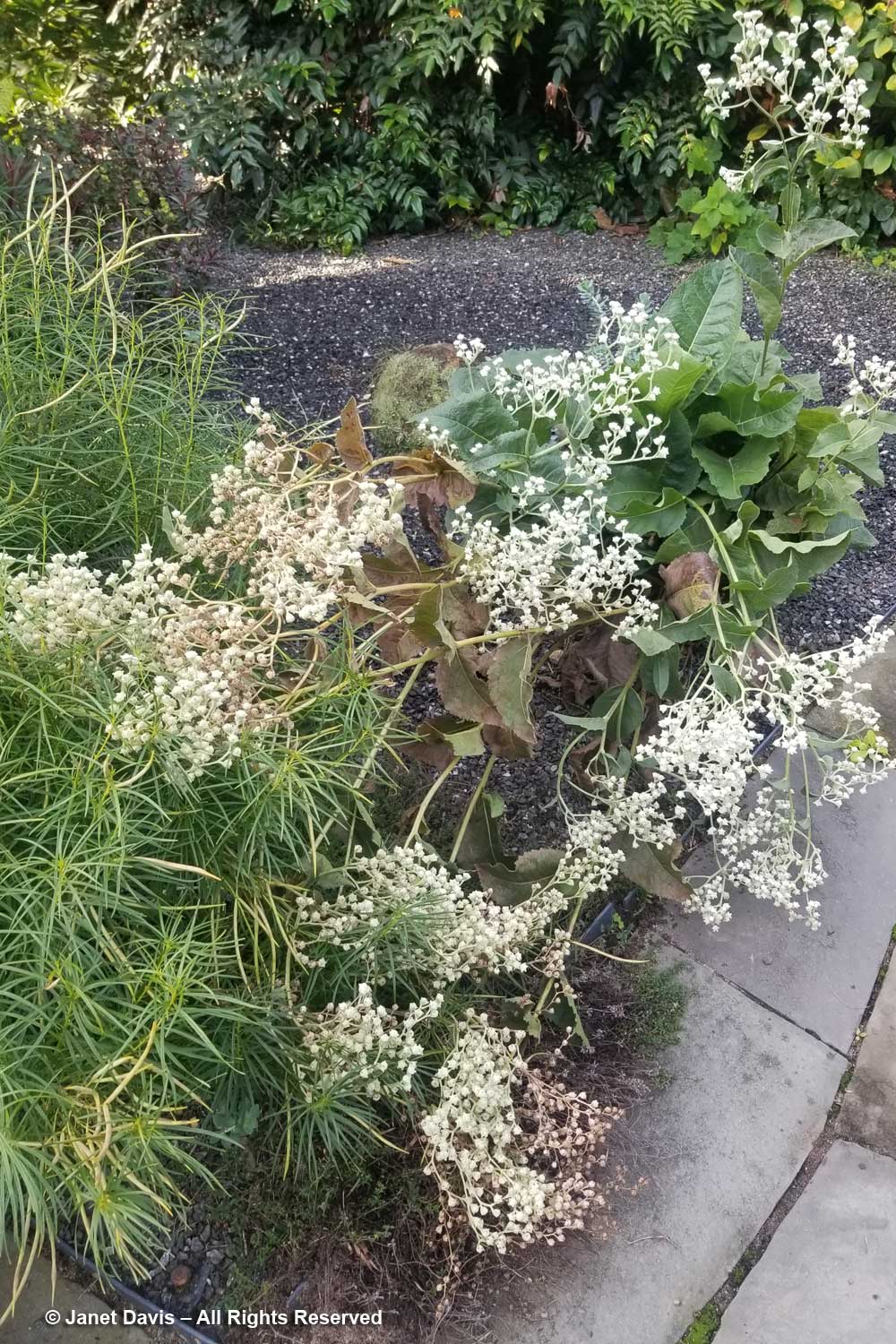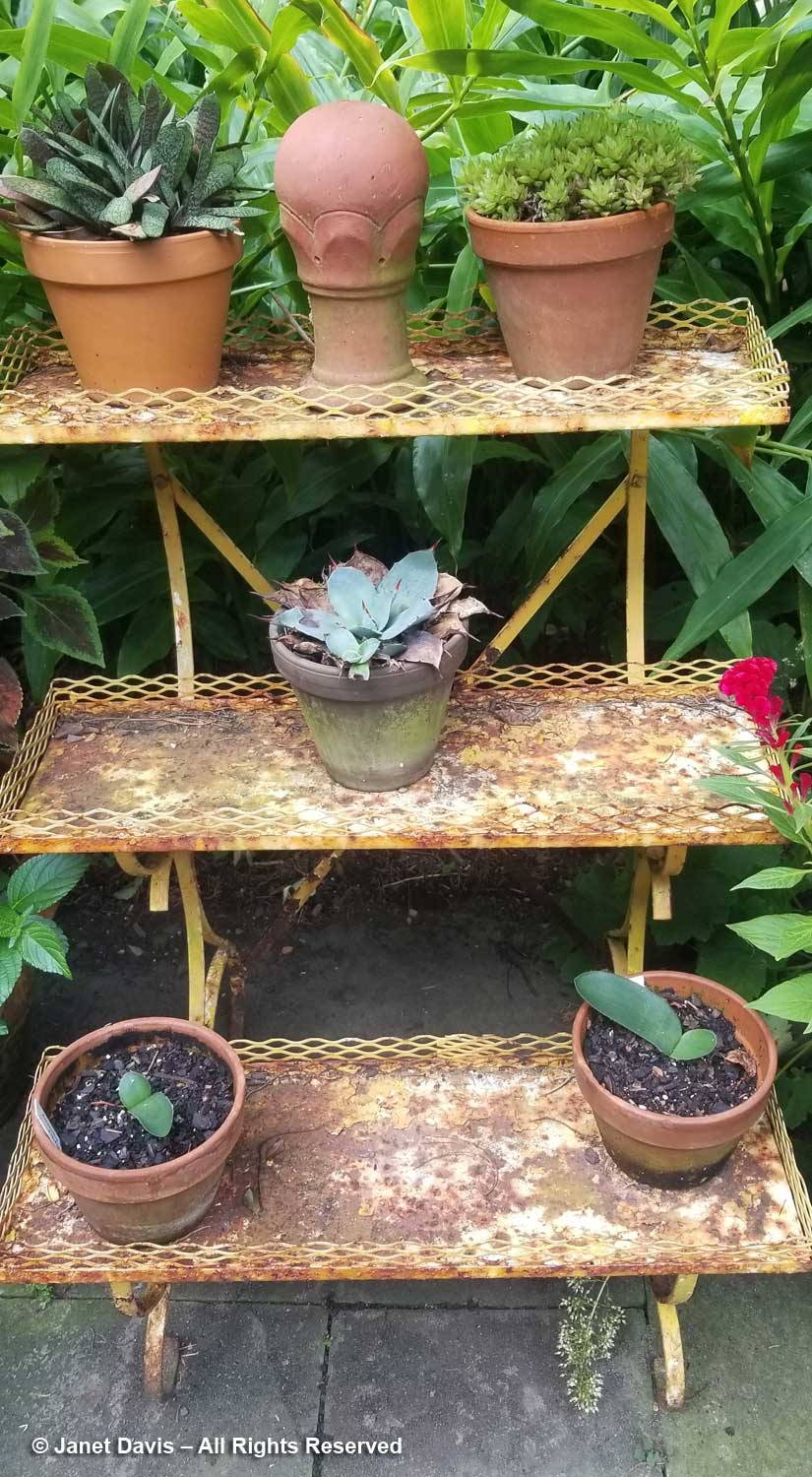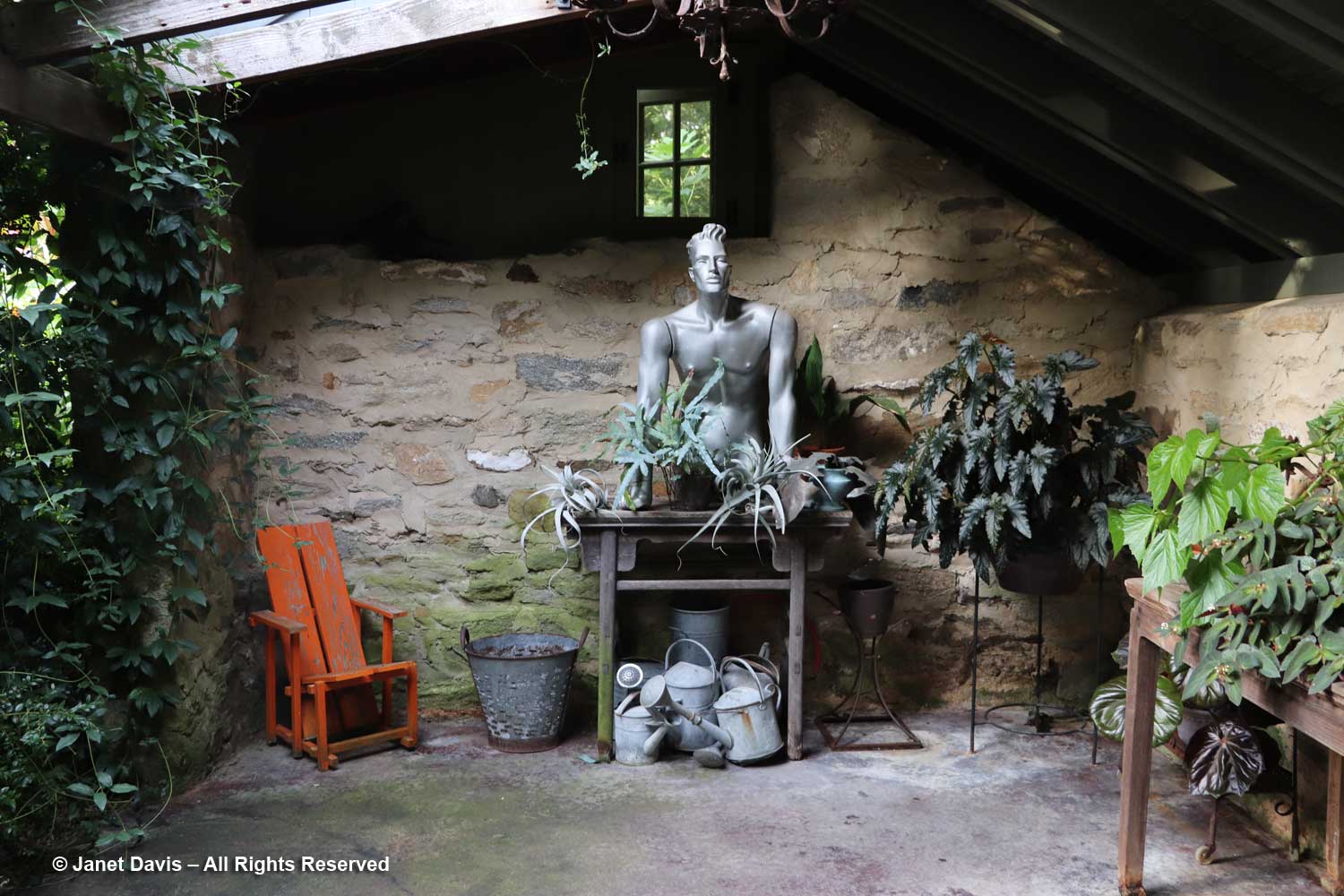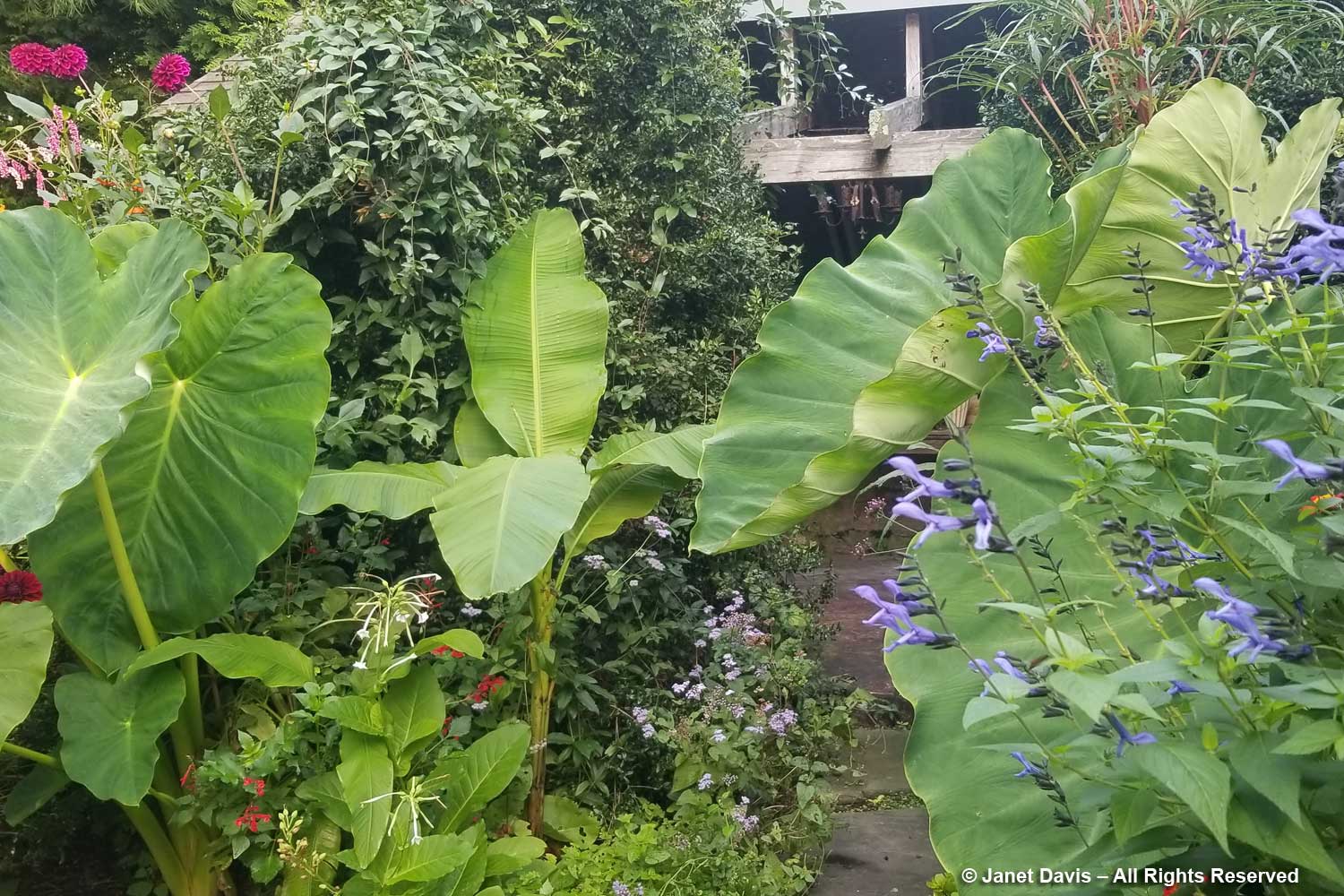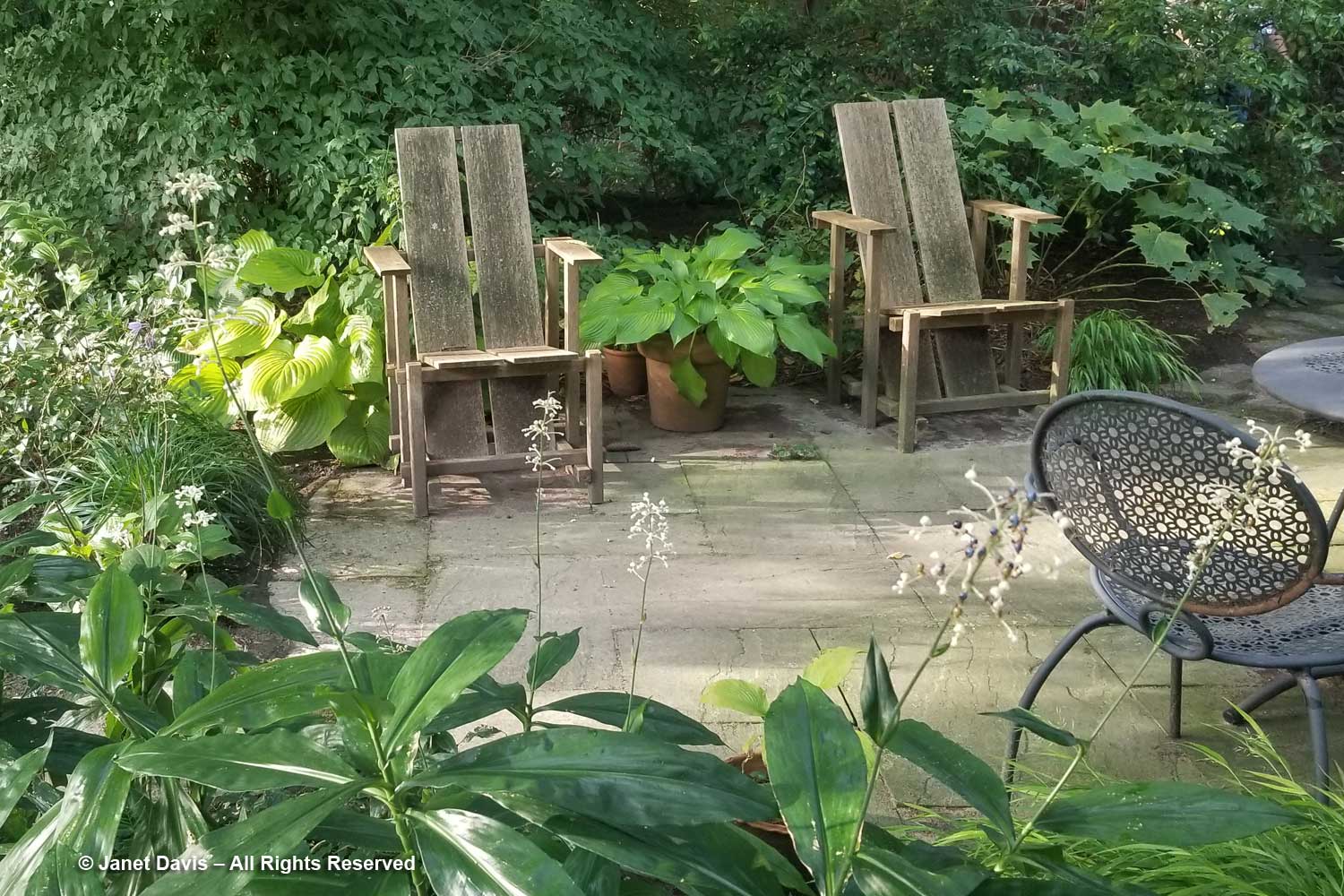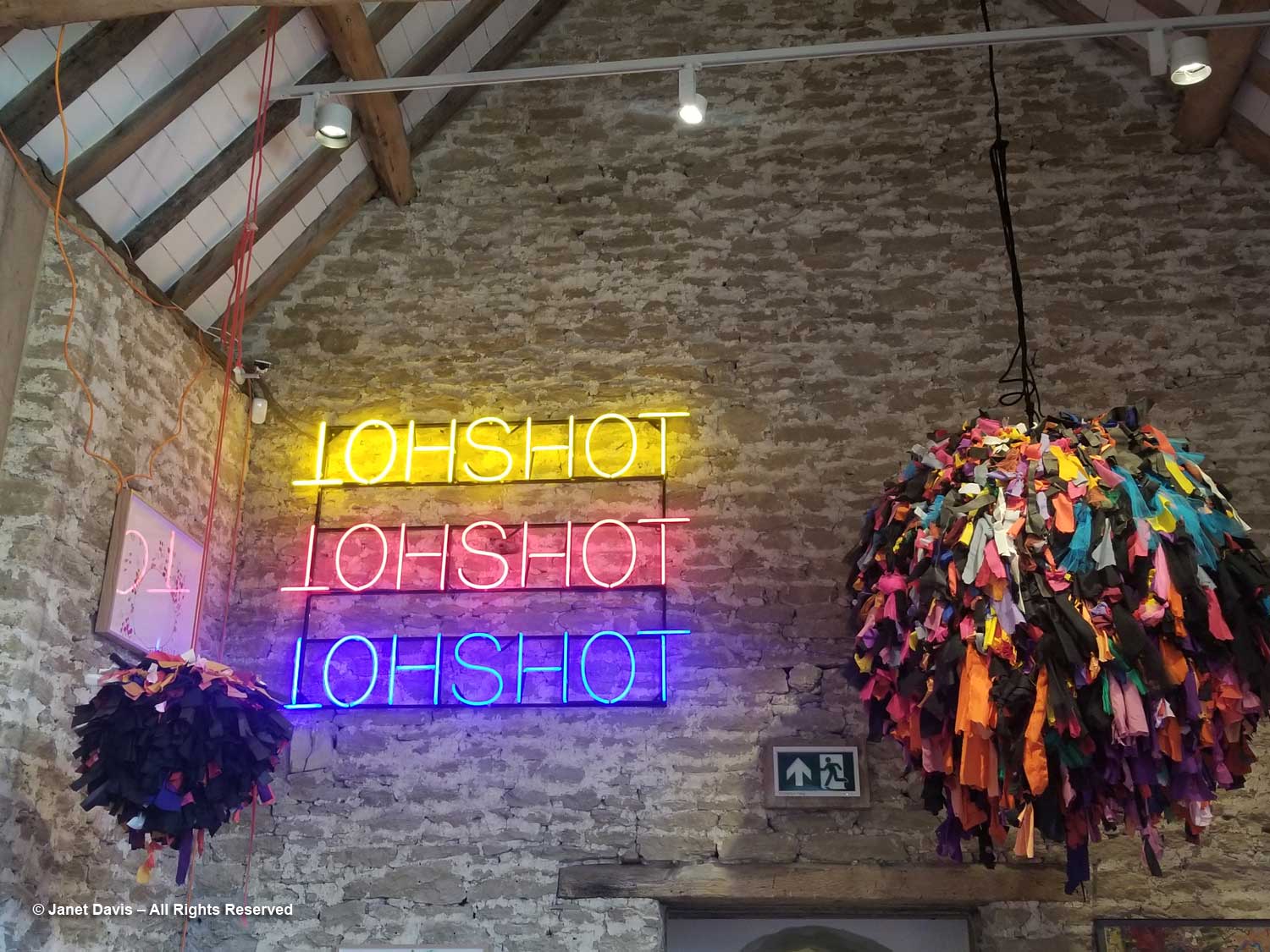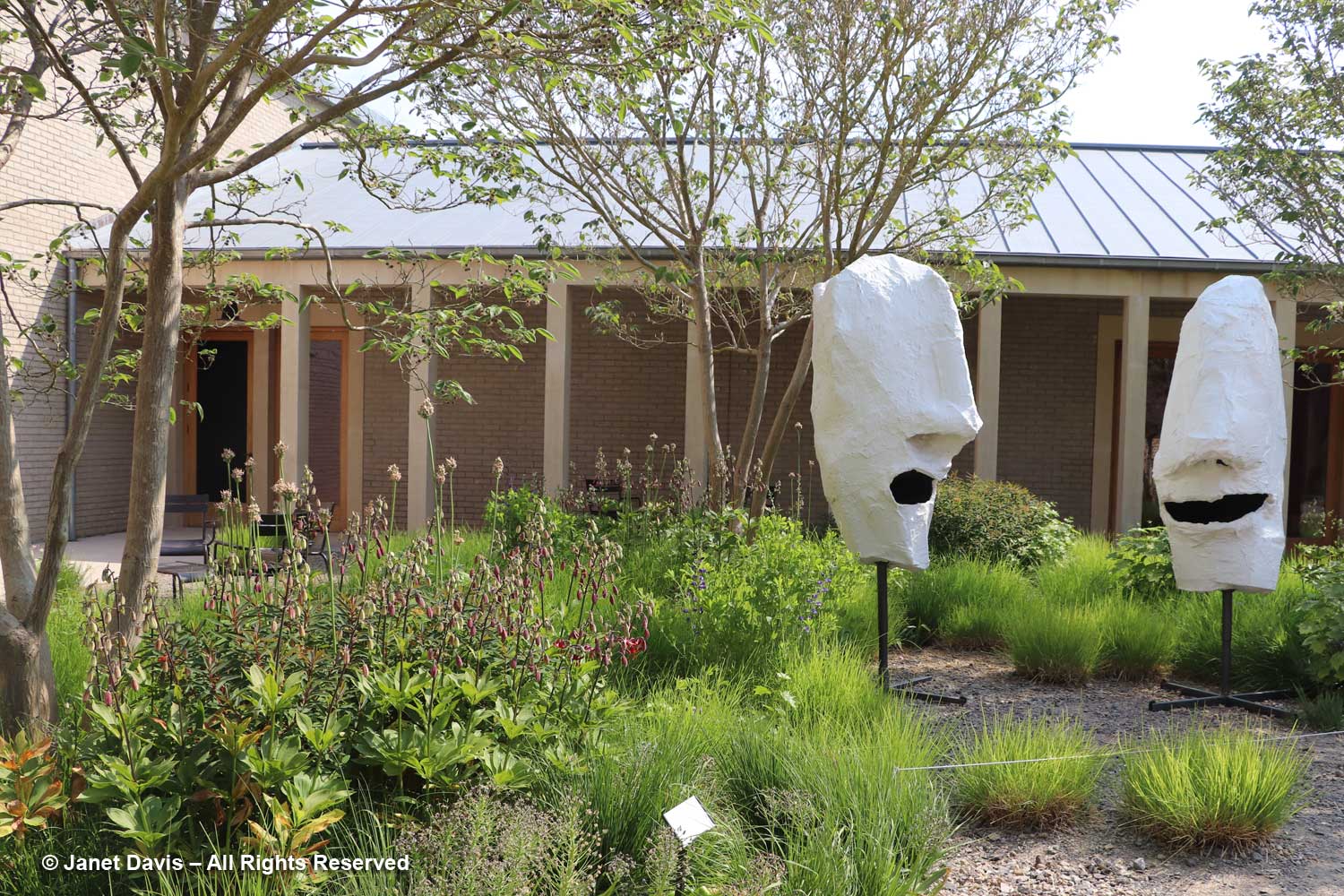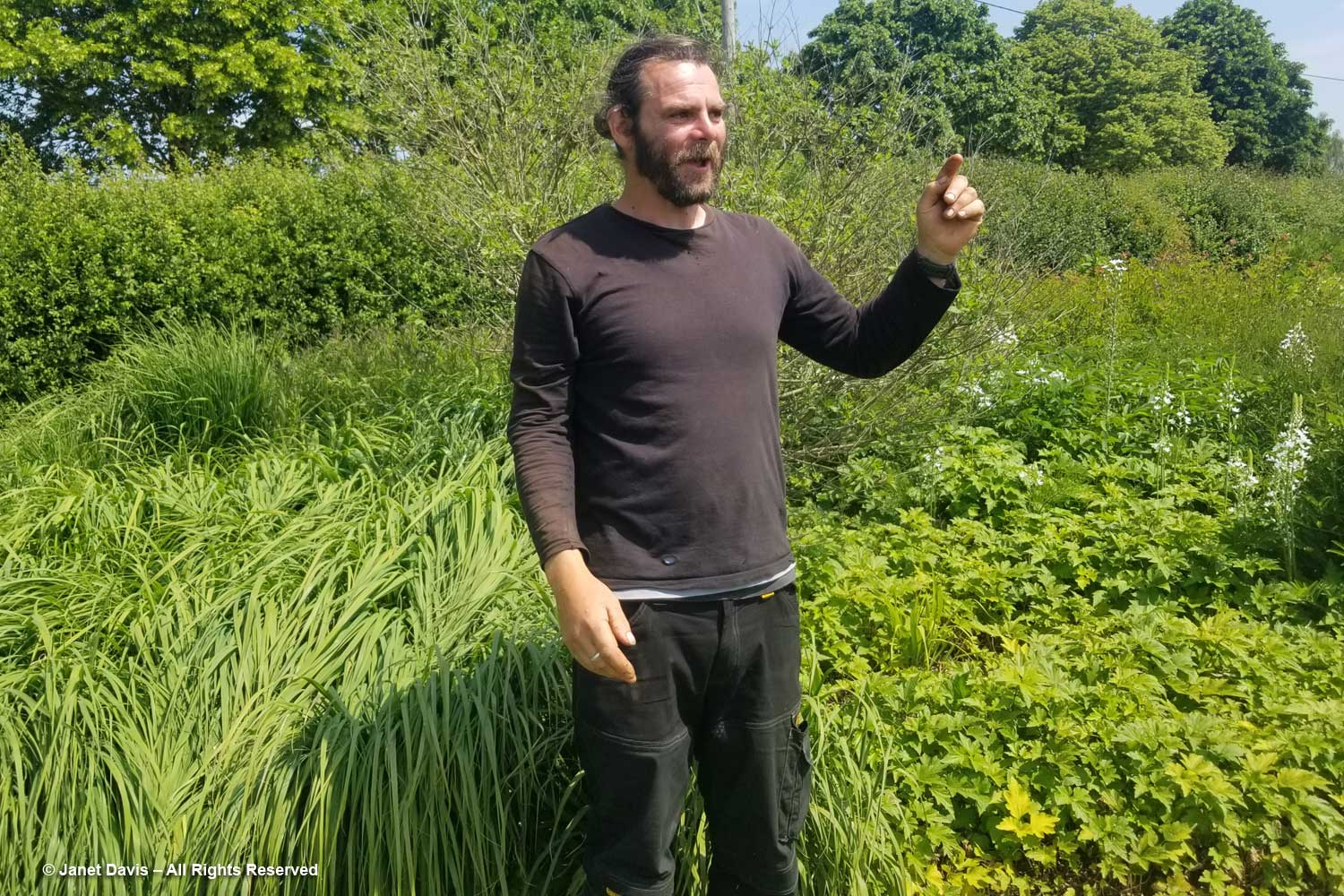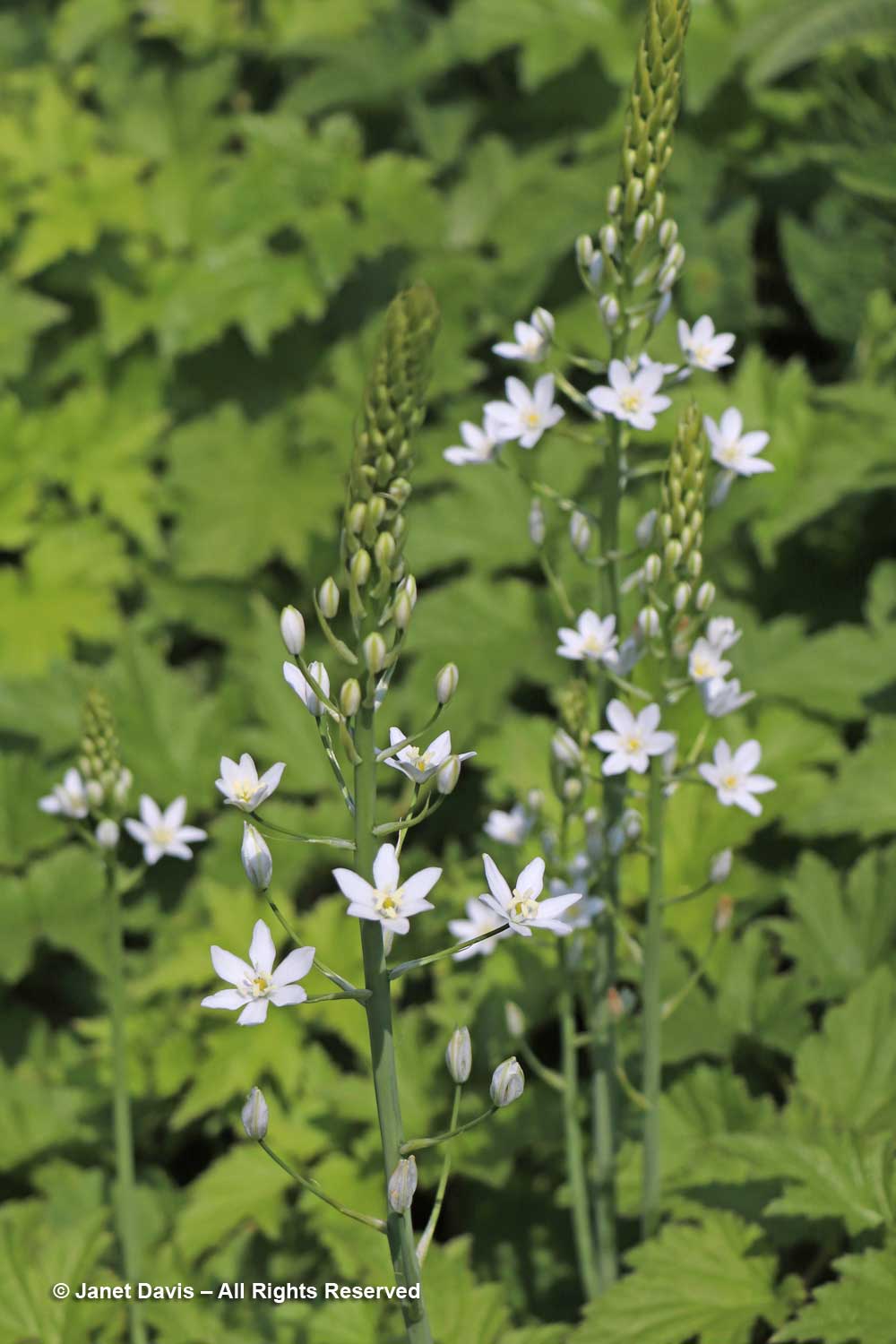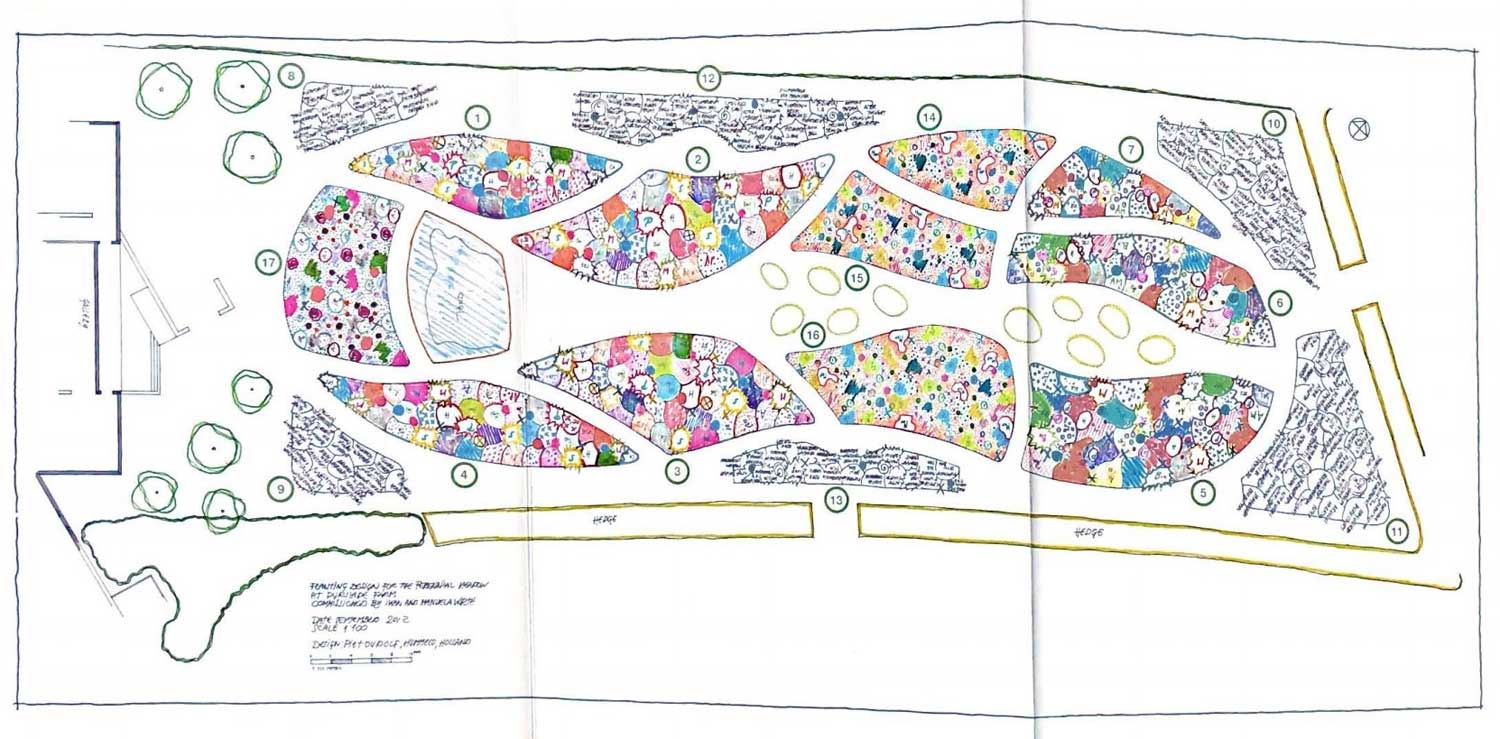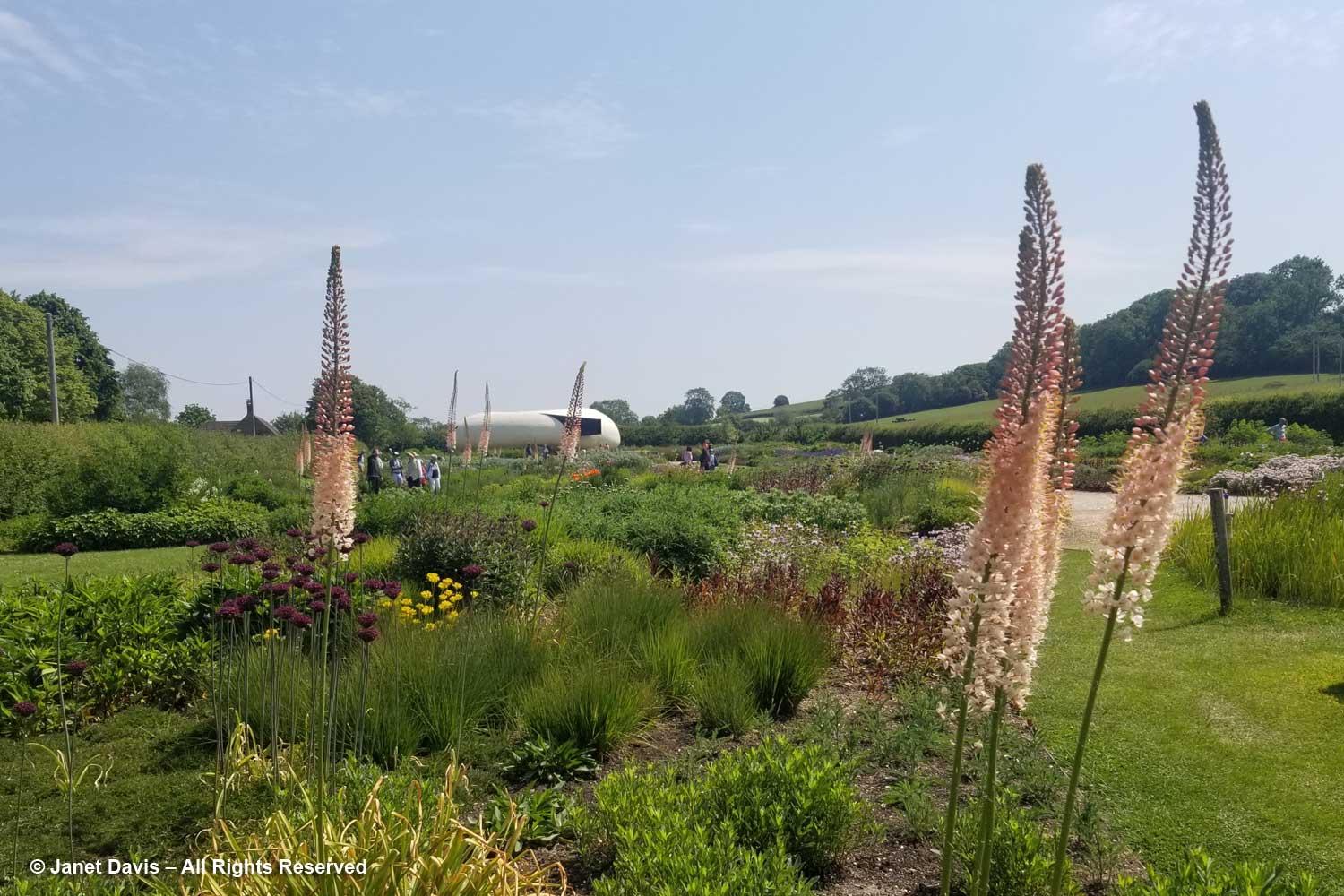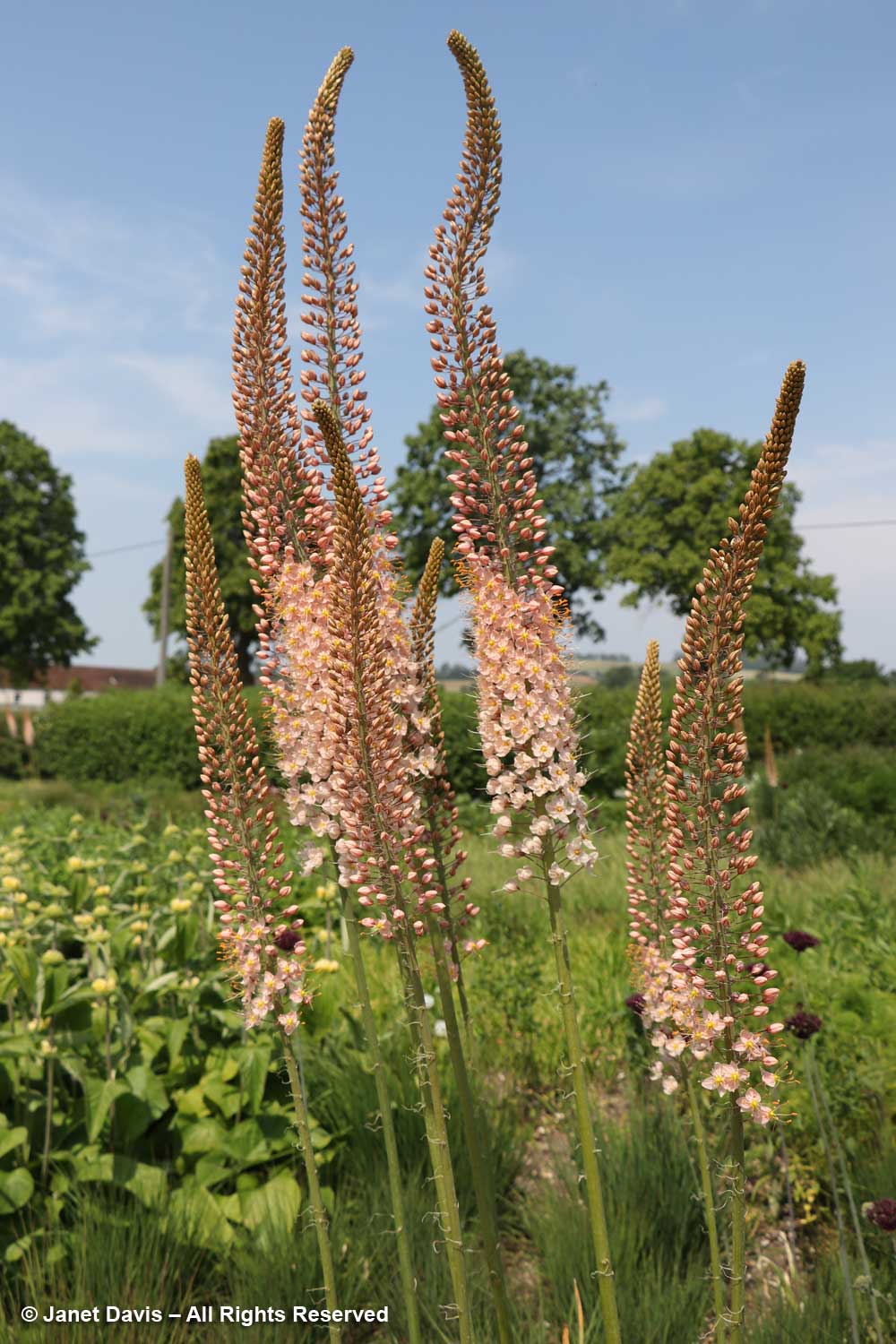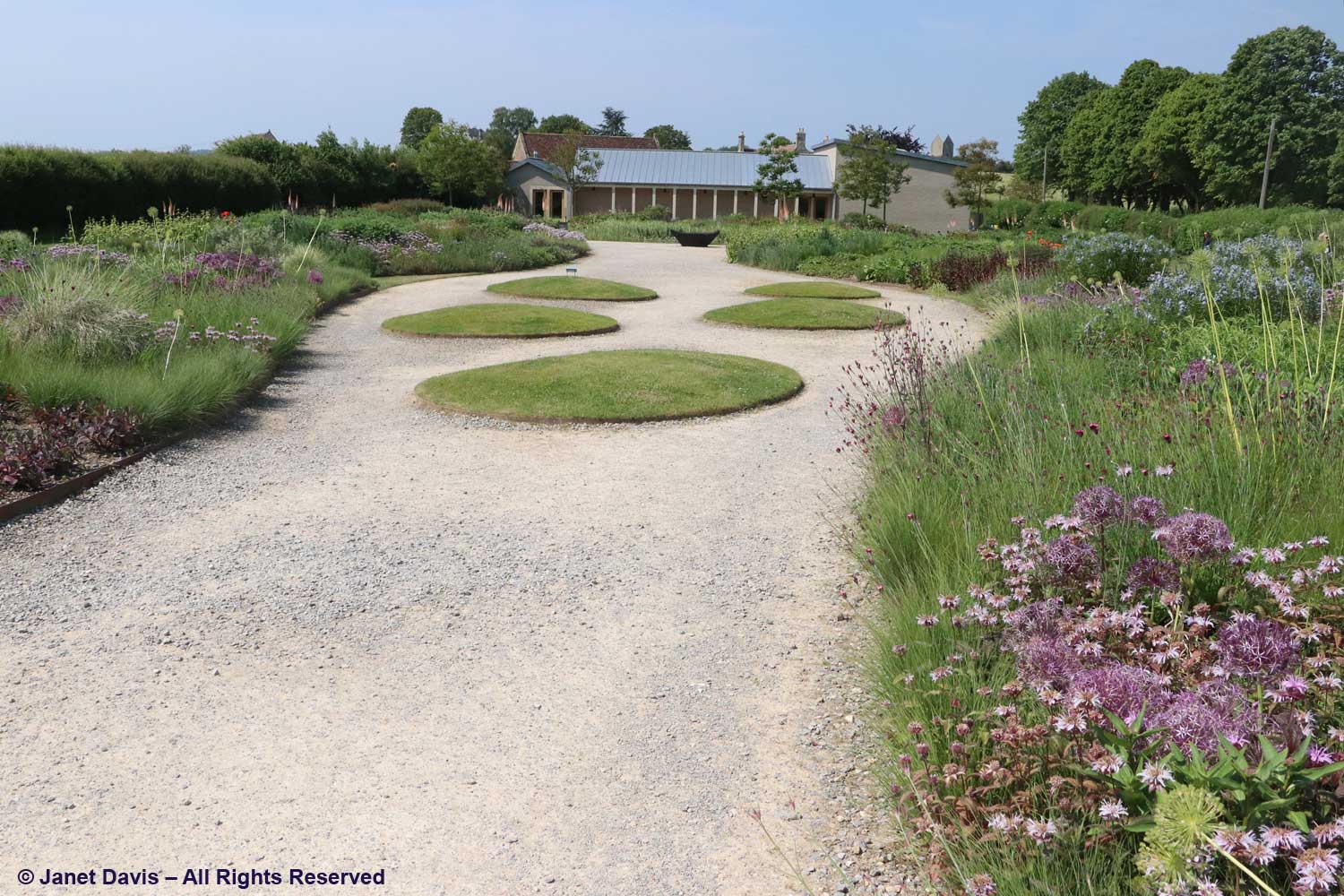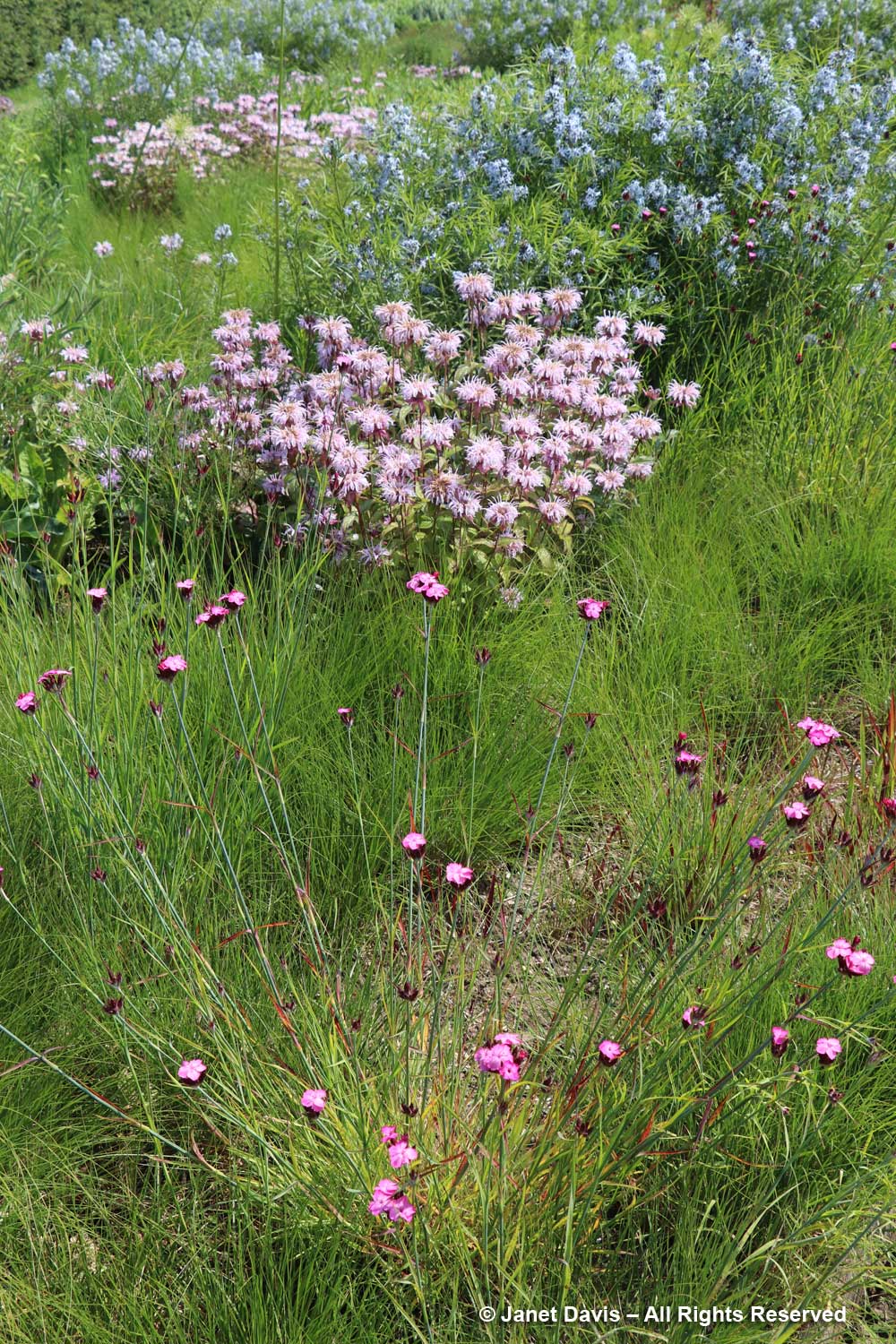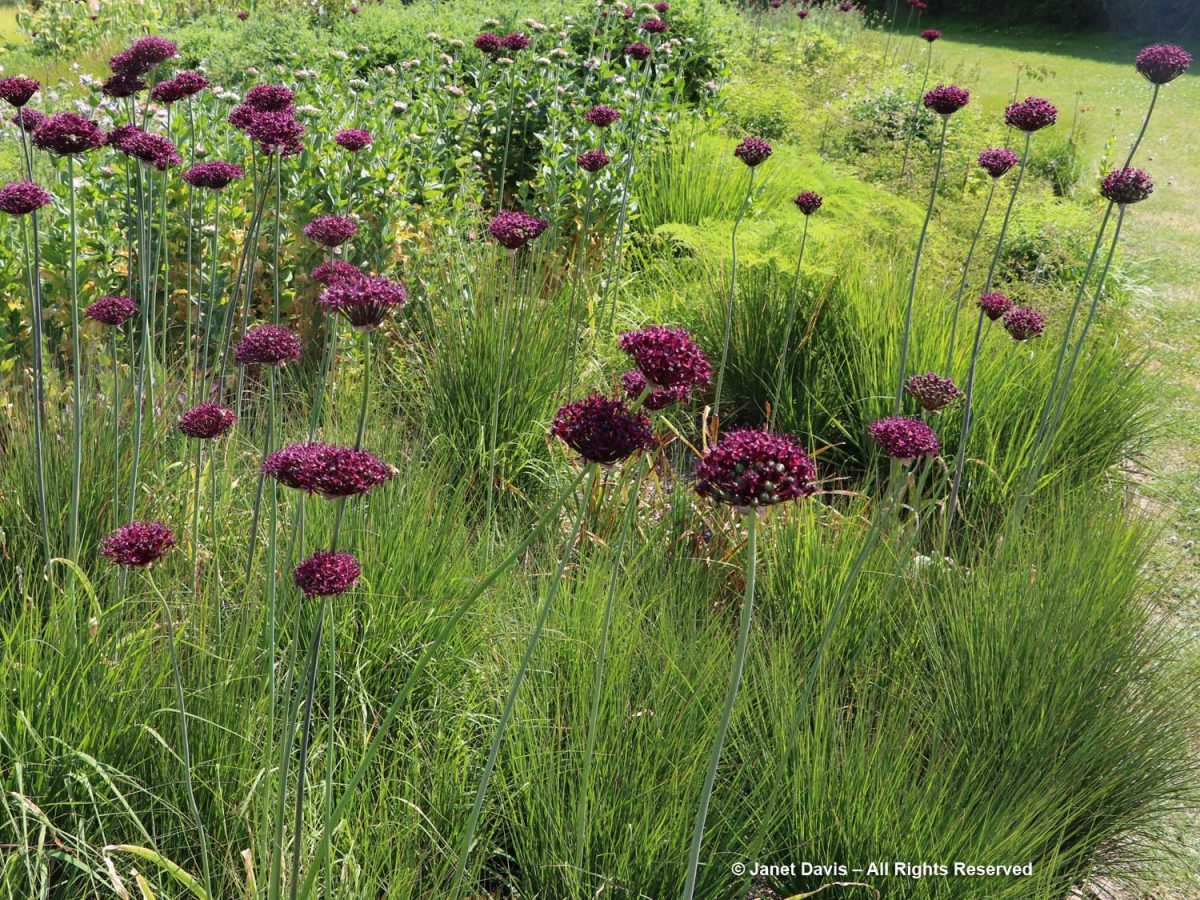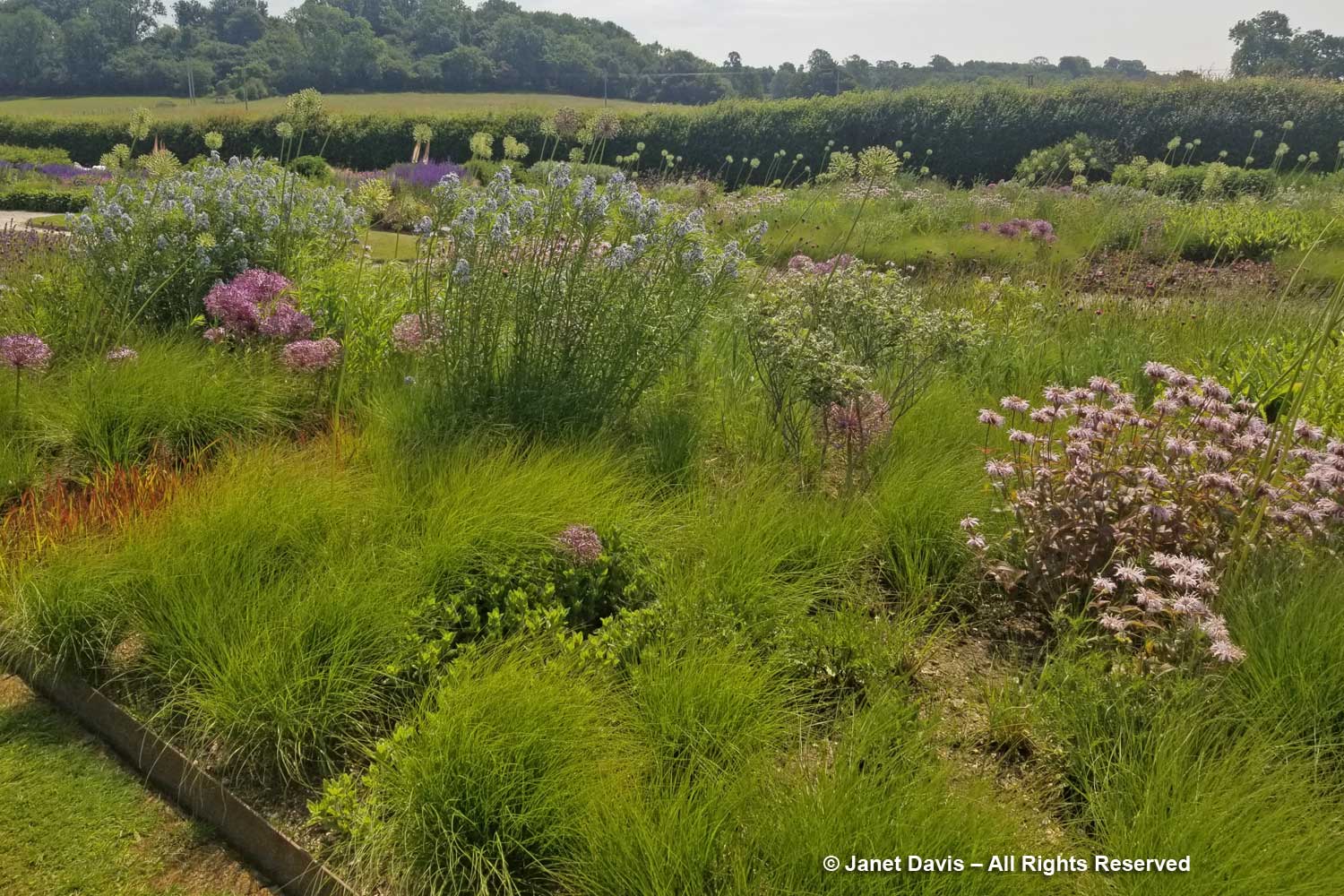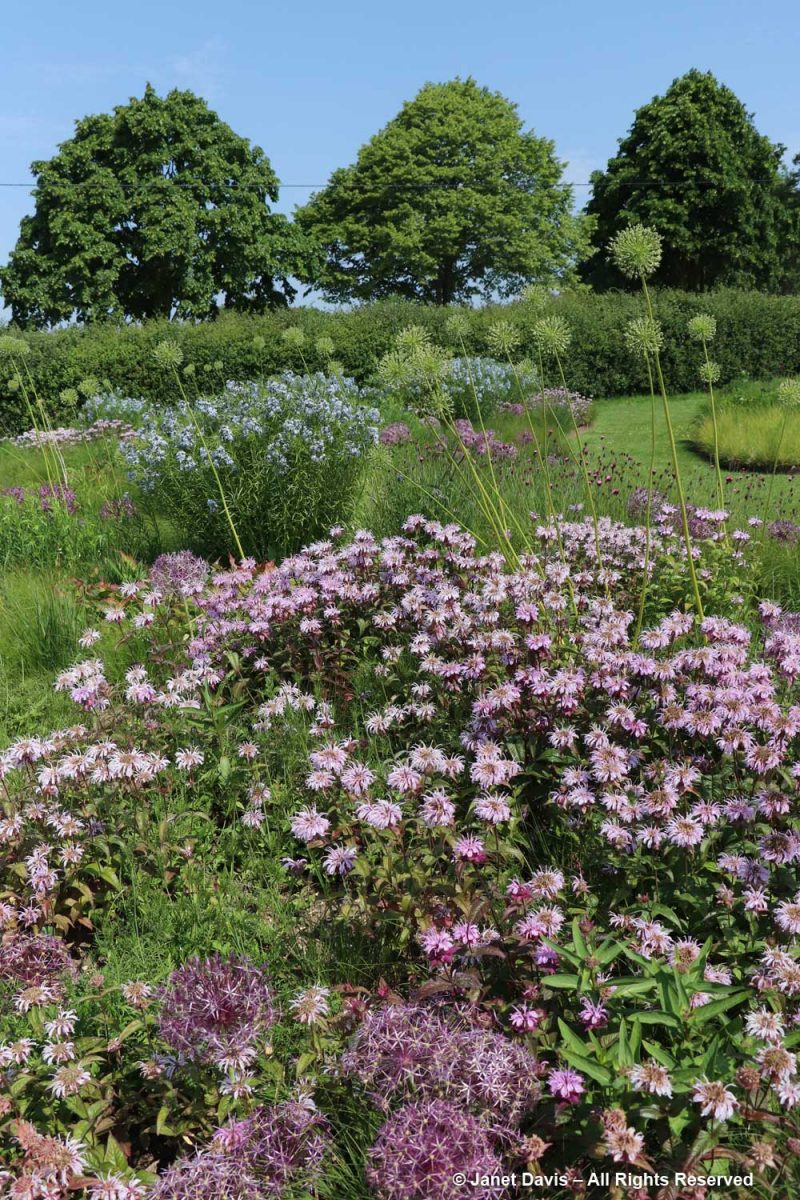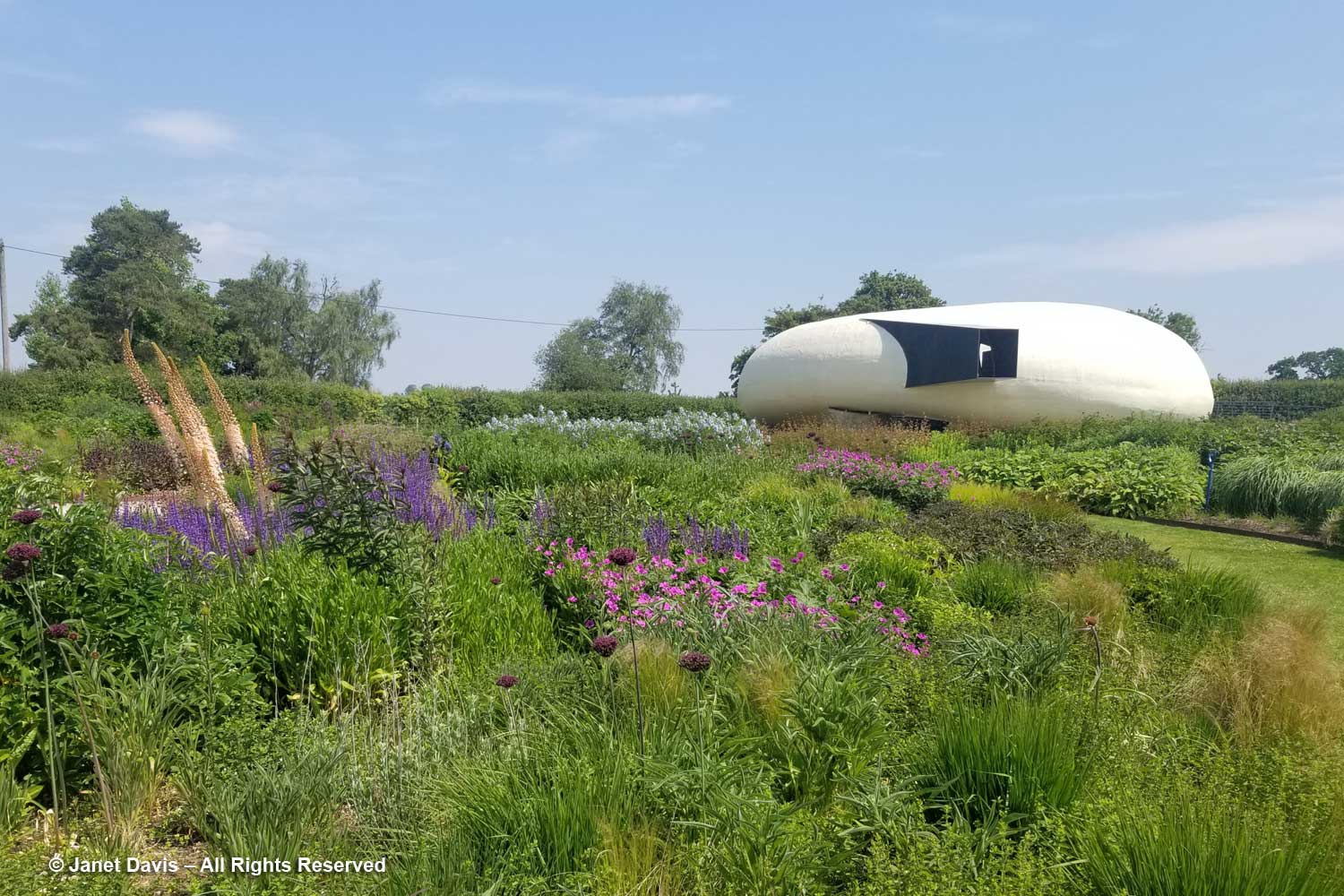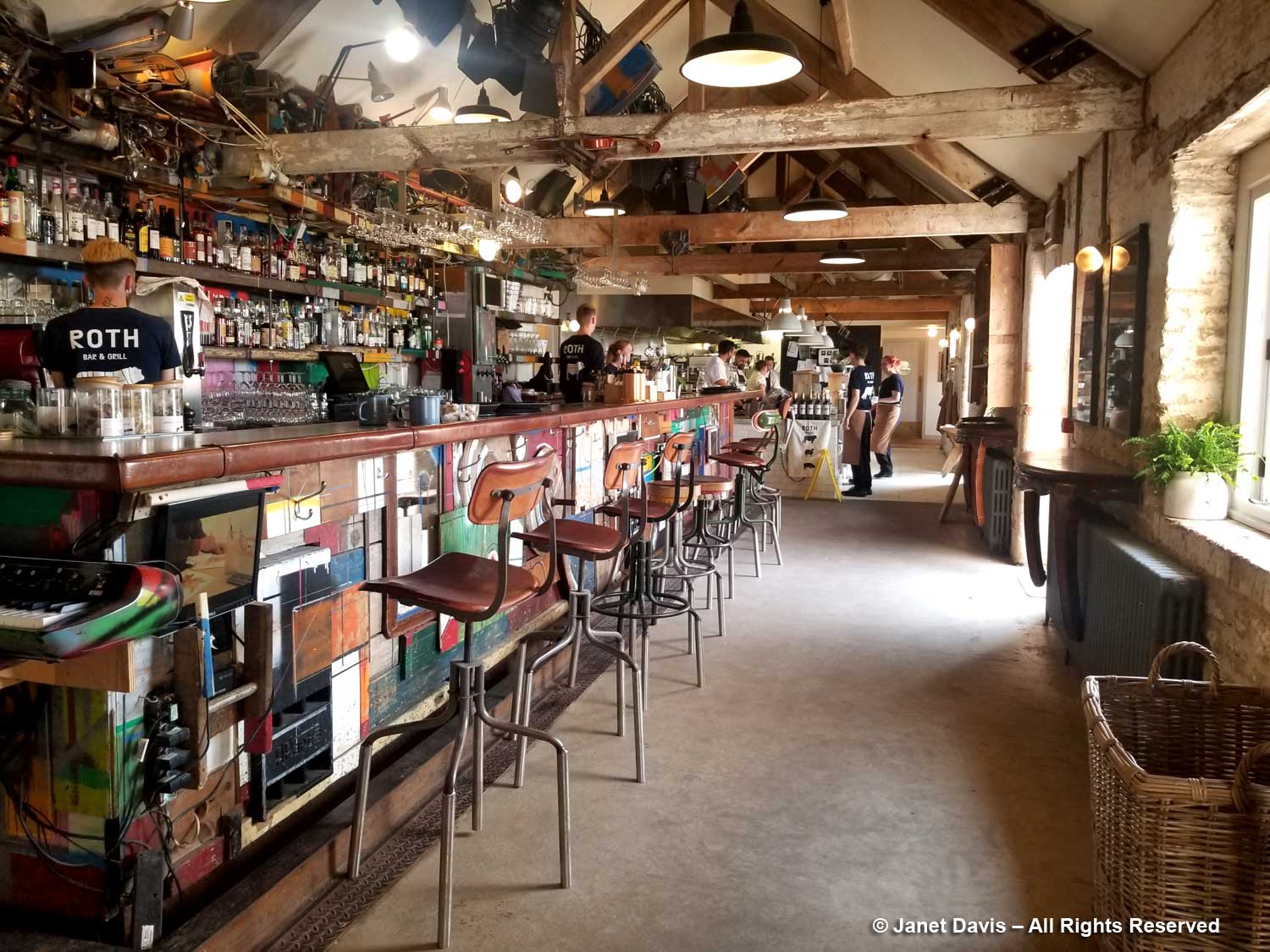When my husband said his college golf mates had picked Maine for the annual get-together in 2023, I was pretty excited. I do enjoy seeing these seven couples each year and like them all, but there’s also always an opportunity to add on some garden visits. In Santa Barbara in 2014, it was Seaside Gardens in Carpinteria and Santa Barbara Botanical Garden, plus San Francisco Botanical Garden and UC Berkeley Botanical Garden. In 2016 when we met in Sun Valley, I visited both Sawtooth Botanical Garden in Ketchum and Idaho Botanical Garden in Boise. A 2017 visit to Sarasota, Florida meant I got to see wonderful Marie Selby Botanical Garden. In 2018 the site was Portland and Bend and we drove down from Vancouver, so I stopped at Seattle’s Bellevue Botanic Garden and the Soest Garden at the Urban Center for Horticulture at the University of Washington, as well as the Japanese Garden and the Lan Su Chinese Garden in Portland. This is us – the “golf widows” at the Japanese Garden.

In 2019, the golfers gathered in Marin County CA, so I got to Ruth Bancroft Garden in Walnut Creek and Filoli in Woodside. Following the Covid years, May 2022 saw us visiting Stone Harbor, NJ – and I managed stops at Garden in the Woods in Framingham MA and New England Botanical Garden in Boylston MA on the way there, and my favourite Chanticleer Garden in Wayne PA on the way home. Our wonderful October 2023 hosts live in Kennebunk, Maine, so I planned our driving trip from Toronto via Quebec so I could visit the Montreal Botanical Garden enroute. Then we drove south to Boston so I could finally realize a dream to spend lots of time at the Arnold Arboretum. After our golf visit wound up in Kennebunkport, we bade farewell to the group and drove up the coast for an overnight stay in Boothbay Harbor so I could finally see the Coastal Maine Botanical Gardens. Here’s the map showing the center of the garden; at 295 acres it stretches well out beyond the main features, below.

Even before we paid to enter, I was in love with the ethos of the garden as shown below in the long parking lot border featuring native roses in fruit, asters, mountain mint (Pycnanthemum muticum) and little bluestem (Schizachyrium scoparium)!

Islands featuring more formal designs with winter interest plants greet visitors in front of The Lyn And Daniel Lerner Visitor Center.

Look at this! Can you say “chartreuse love”? I see Salvia mexicana, a chartreuse taro, purple angelonia, lime-green nicotiana and dwarf papyrus.
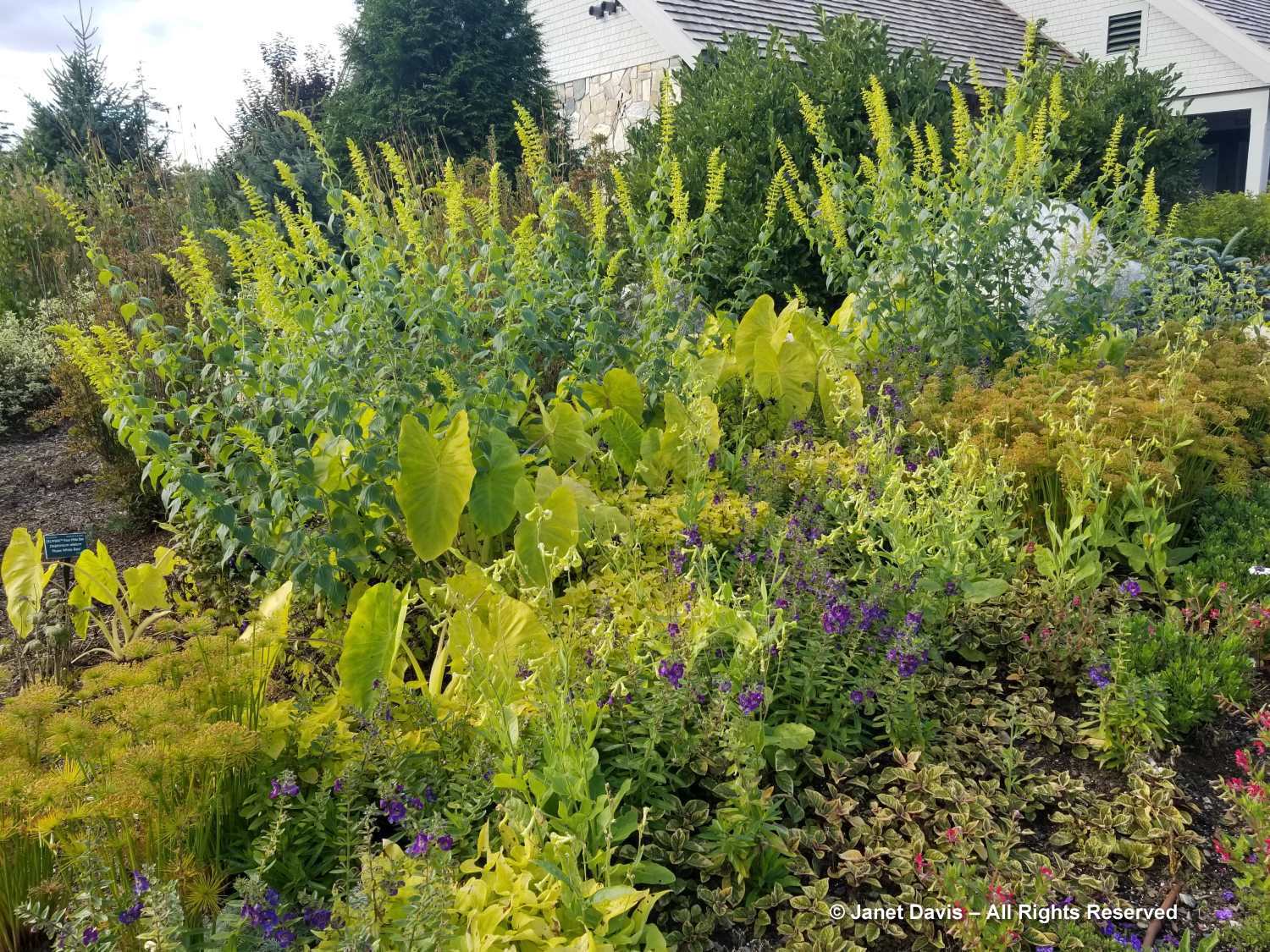
The Heafitz Wetland Bridge near the entrance takes visitors over a piece of natural Maine forest with vernal pools and marshy ground.

Interpretive signage teaches visitors that the habitat below supports native species like the spotted salamander.

Earlier in the week, I had seen a yellow bird in the marshy growth at the Rachel Carson National Wildlife Refuge in Kennebunk, so I was delighted to learn its name – common yellowthroat – here.
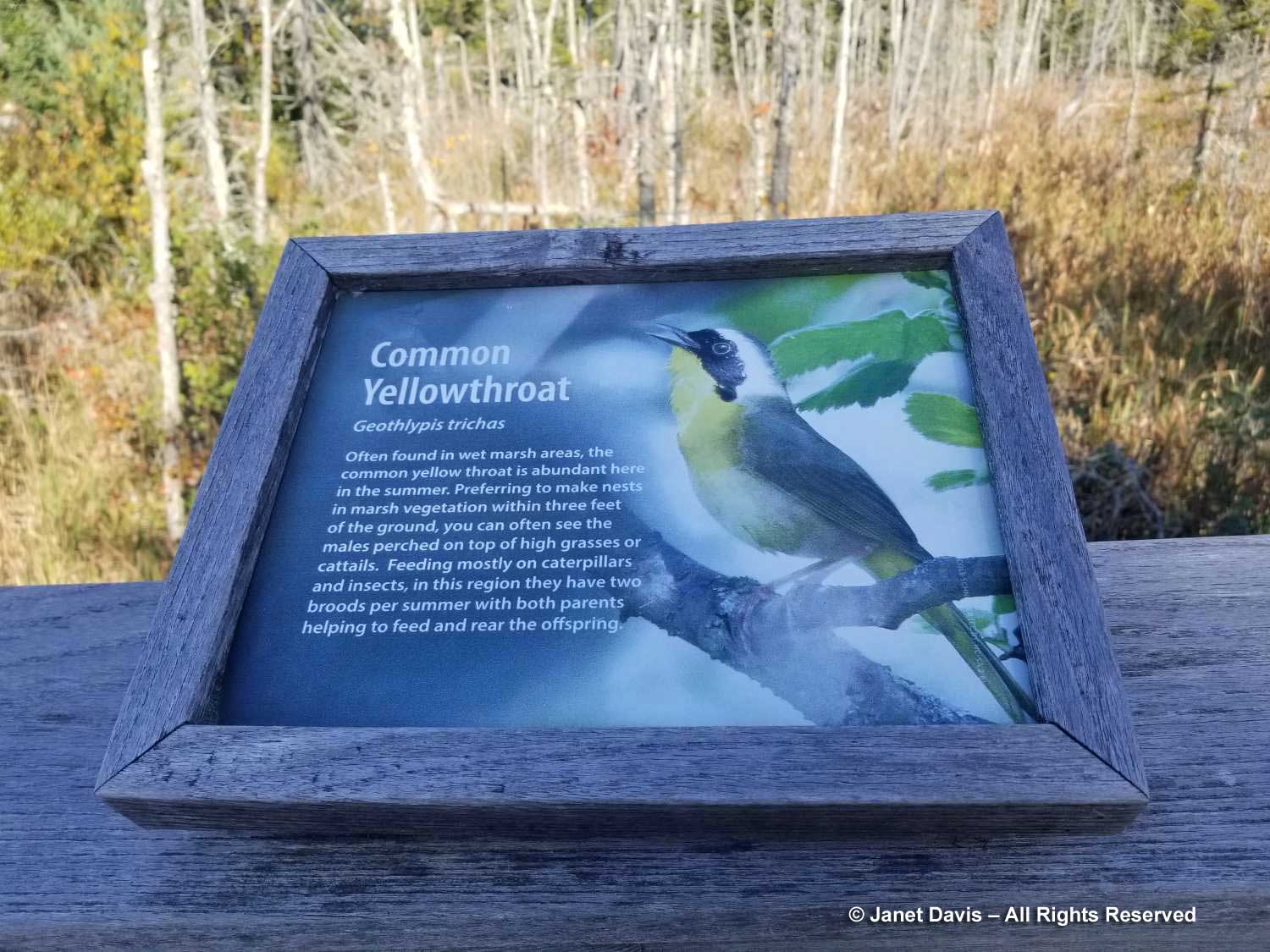
Though the Butterfly Garden greenhouse was closed for the year, the flowerbeds outside still had lots of bloom.
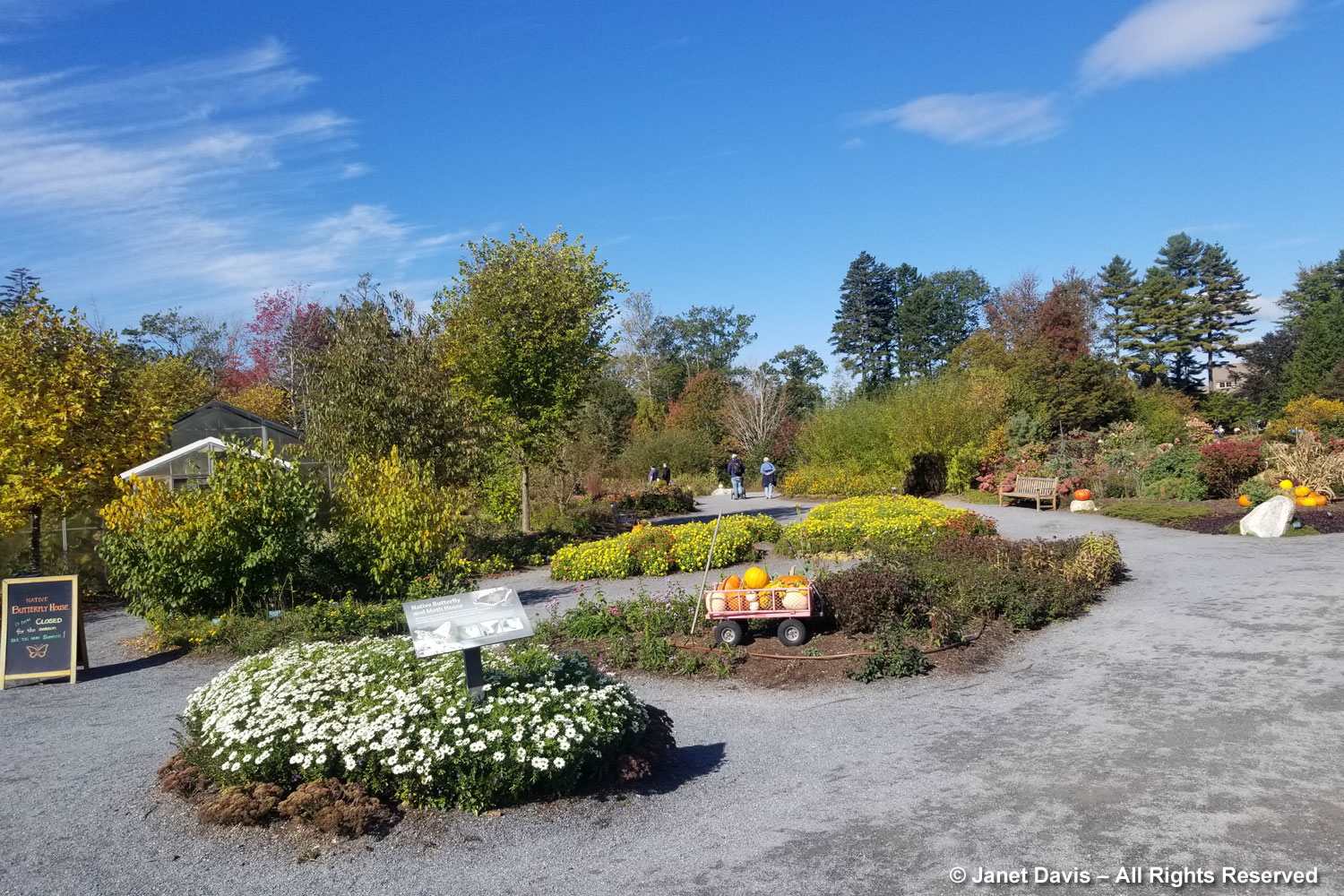
With no early frost, the Dahlia Garden was still looking fabulous.
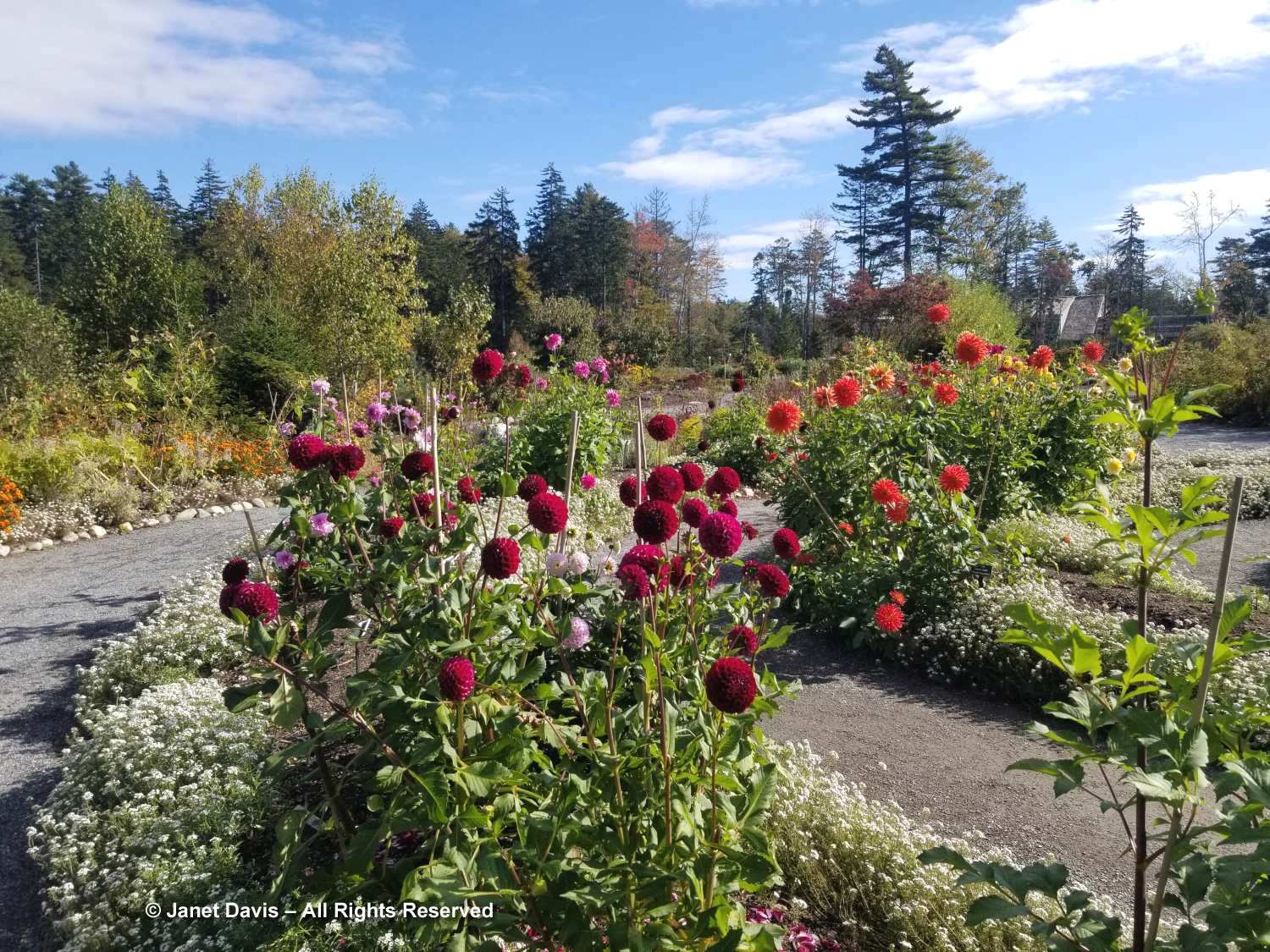
This is Dahlia ‘Hollyhill Black Beauty’.
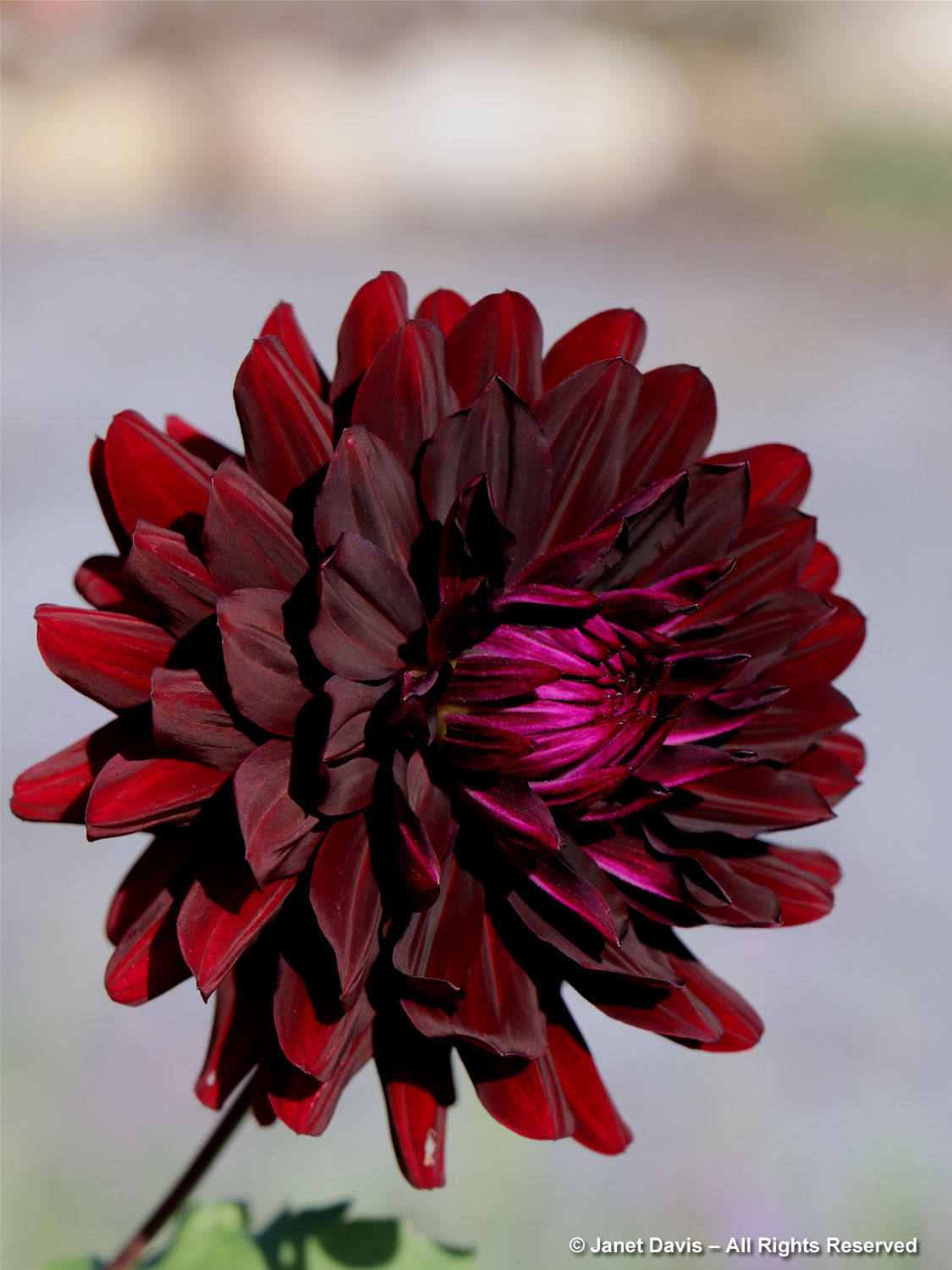
Children were running through the Willow Tunnel, the first of many features that illustrate the attention CMBG designers paid to creating family-friendly gardens and niches, a strategy that attracts younger demographics and family memberships.

Ecological education is a primary objective here as well.

Water features like this beautiful pond with its mirrored edge play a big role in the garden, including….
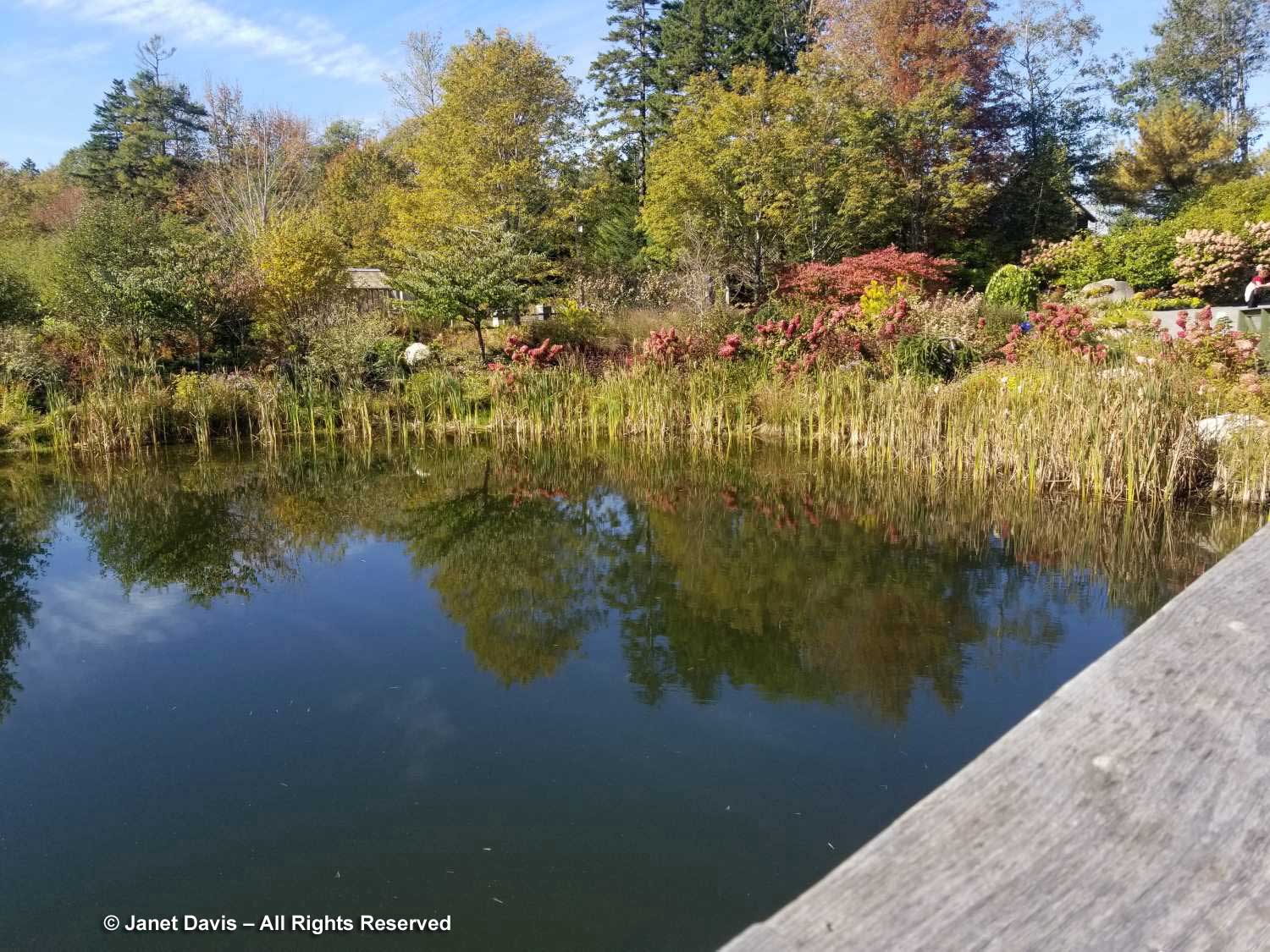
….educating visitors about native aquatic species like the Eastern pondhawk dragonfly.

Panicle hydrangeas (H. paniculata) have a long season of interest, including turning colour in autumn, as these shrubs are doing in the pond border

I was impressed with the diversity of plants in mid-October, like Vernonia lettermannii ‘Iron Lady’. Like all ironweeds, it’s very attractive to butterflies such as the painted lady, below.

Winterberry (Ilex verticillata) is showy in autumn, with fruit that persists into winter until it finally becomes a meal for birds.
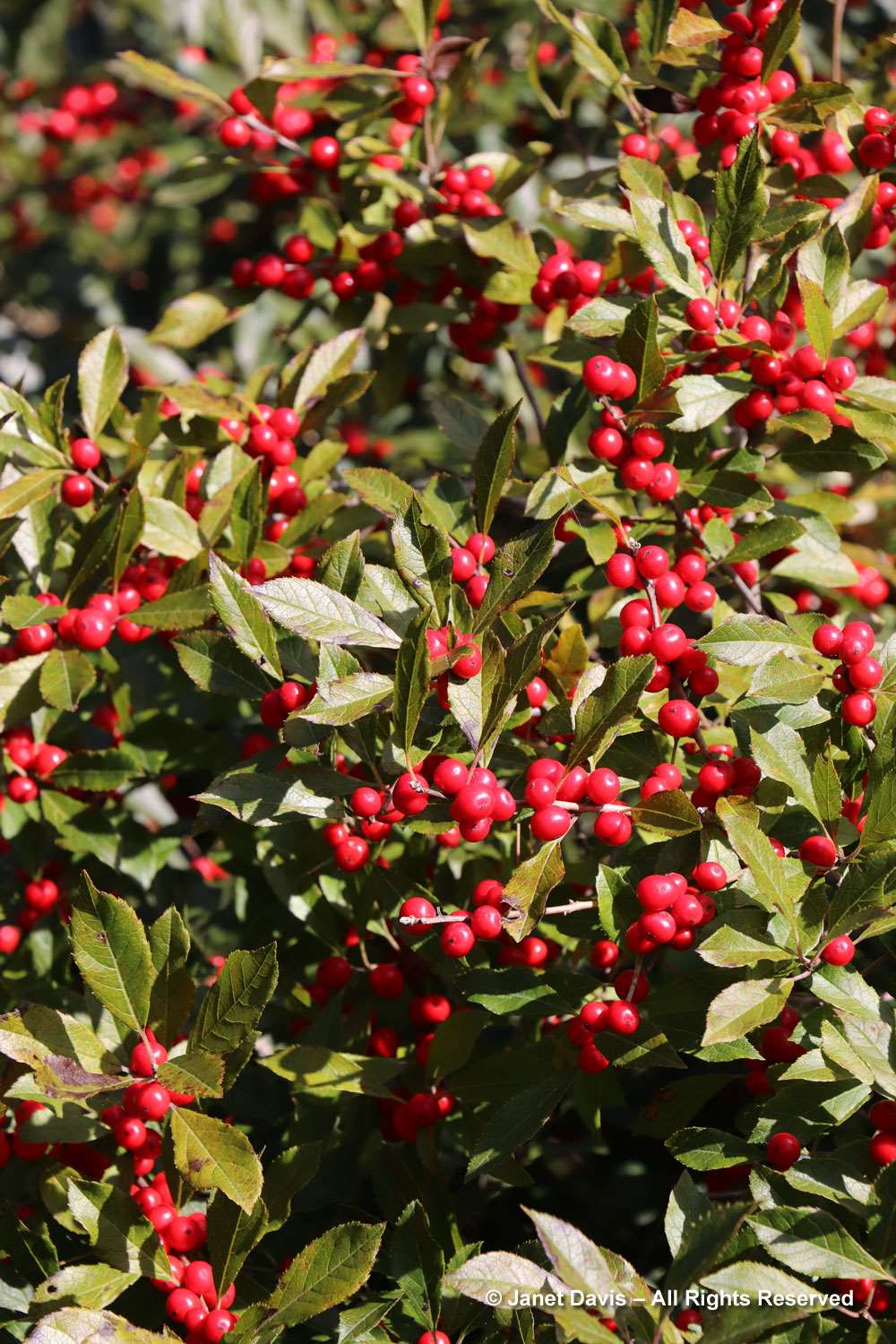
Across the large pond stood one of the garden’s five popular trolls or “Guardians of the Seeds”, created by Danish scultor/recycler Thomas Dambo. This one is named RØSKVA, which means “trunks”. As the garden notes: “she is the heaviest, hardest, and strongest of the trolls. Every day, Røskva climbs towards the sky, and every year she grows taller and wider. If a troll forgets something, they can always ask Røskva—she counts the seasons and remembers everything that happens around her.” The other trolls Lilja, Berk, Søren and Gro are in the forest surrounding the main gardens, and each has a role to play.
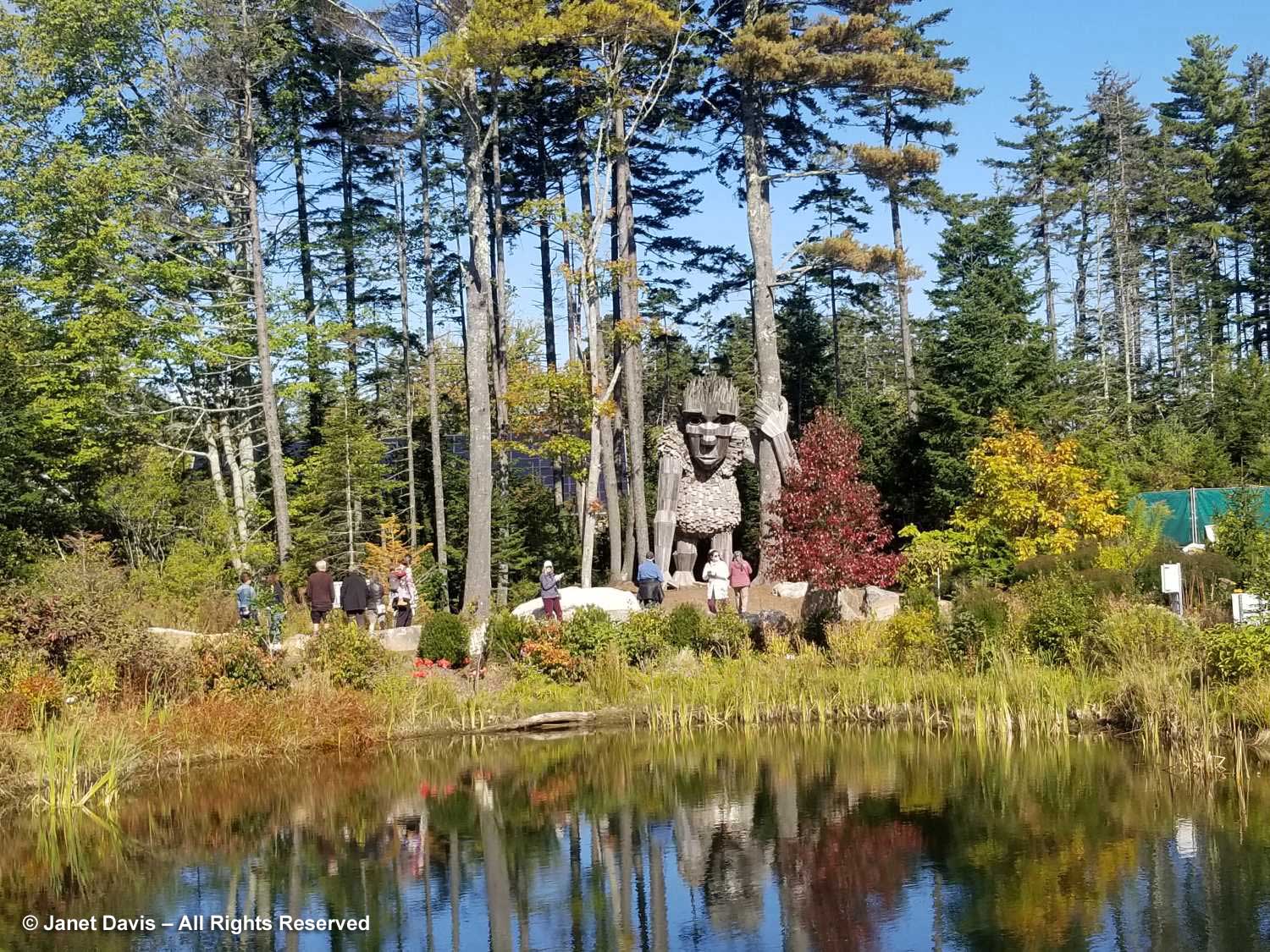
I loved this little girl engaging with Røskva (and giving an idea of scale).

Little touches, like these bumble bee topiaries incorporating diverse sedum species, add interest to a visitor’s journey through the garden.
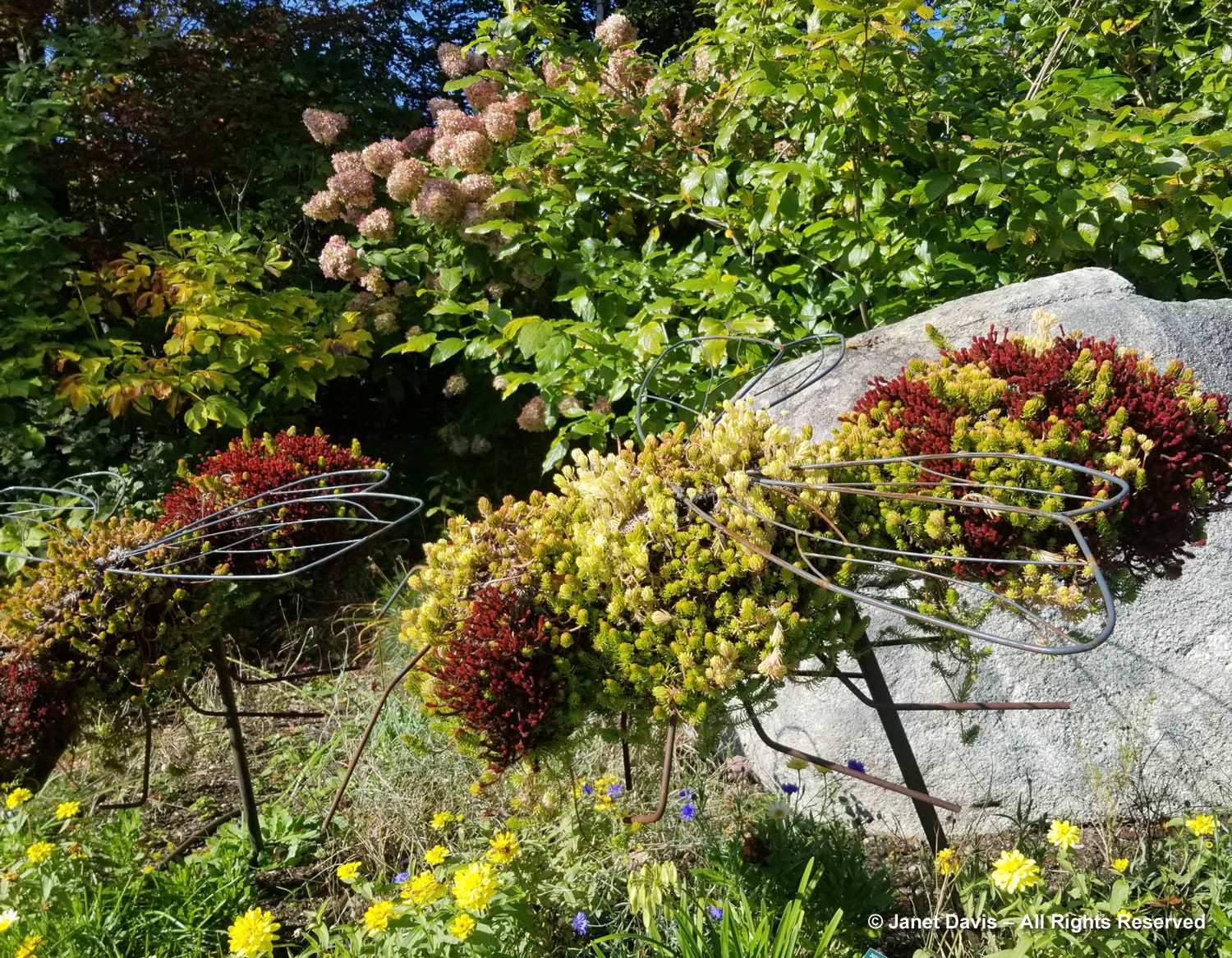
Since we had driven up from Kennebunkport that morning, we were more than ready for lunch and found a table on the Great Lawn.
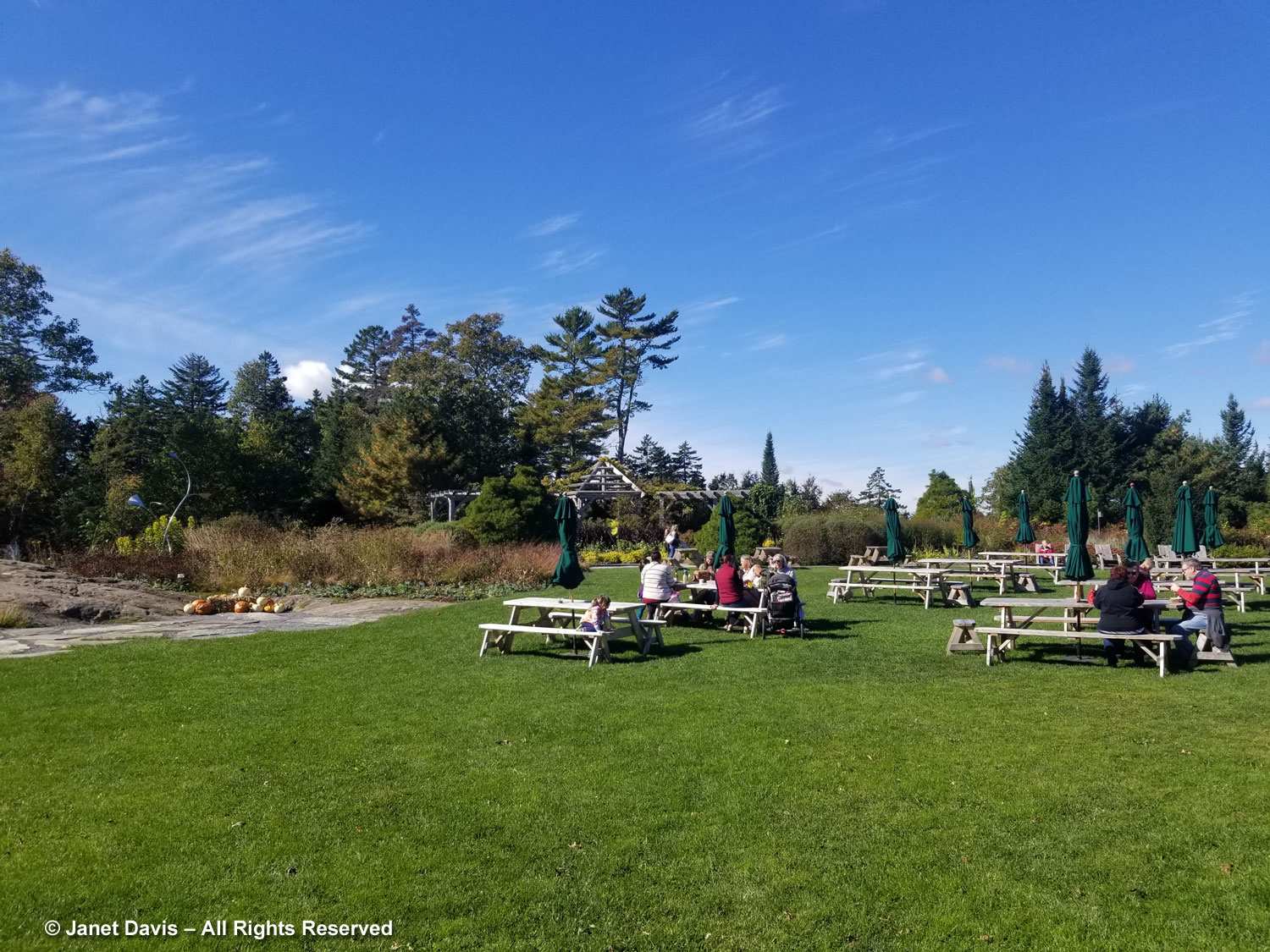
Then it was off to the Lerner Garden of the Five Senses.

Tasting, touching, smelling, looking and listening… everything a good garden needs to engage the senses.

I was enchanted by these vertical planters showing the possibilities for sun and shade in a restricted space! The silvery, sunny side, below, features Dichrondra ‘Silver Falls’, Helichrysum ‘Icicles’, Artemisia ‘Sea Salt’ and Lavandula ‘Elegance Purple’ (the lavender out of bloom in October.).
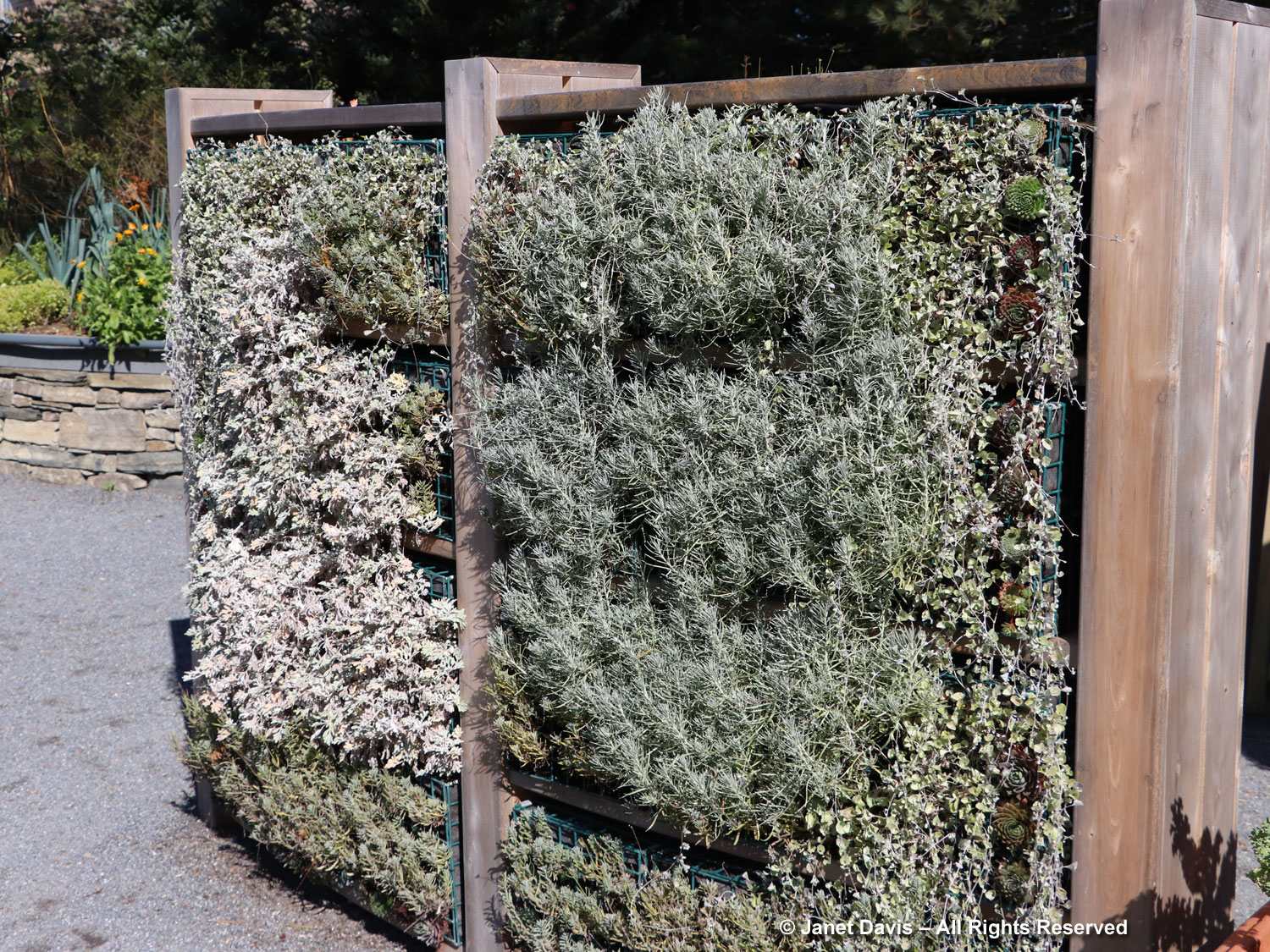
The shady side is no less beautiful. It features Australian sword fern (Nephrolepis exaltata) and its cultivar ‘Cotton Candy’, the Rex begonias ‘Escargot’, ‘Iron Cross’ and ‘Fireworks’, the Bolivian begonias ‘Angel Falls Soft Pink’ and the trailing begonia ‘Fragrant Falls’.

There were other possibilities for raised gardening, including these cool, galvanized planters with windowbox-style inserts.
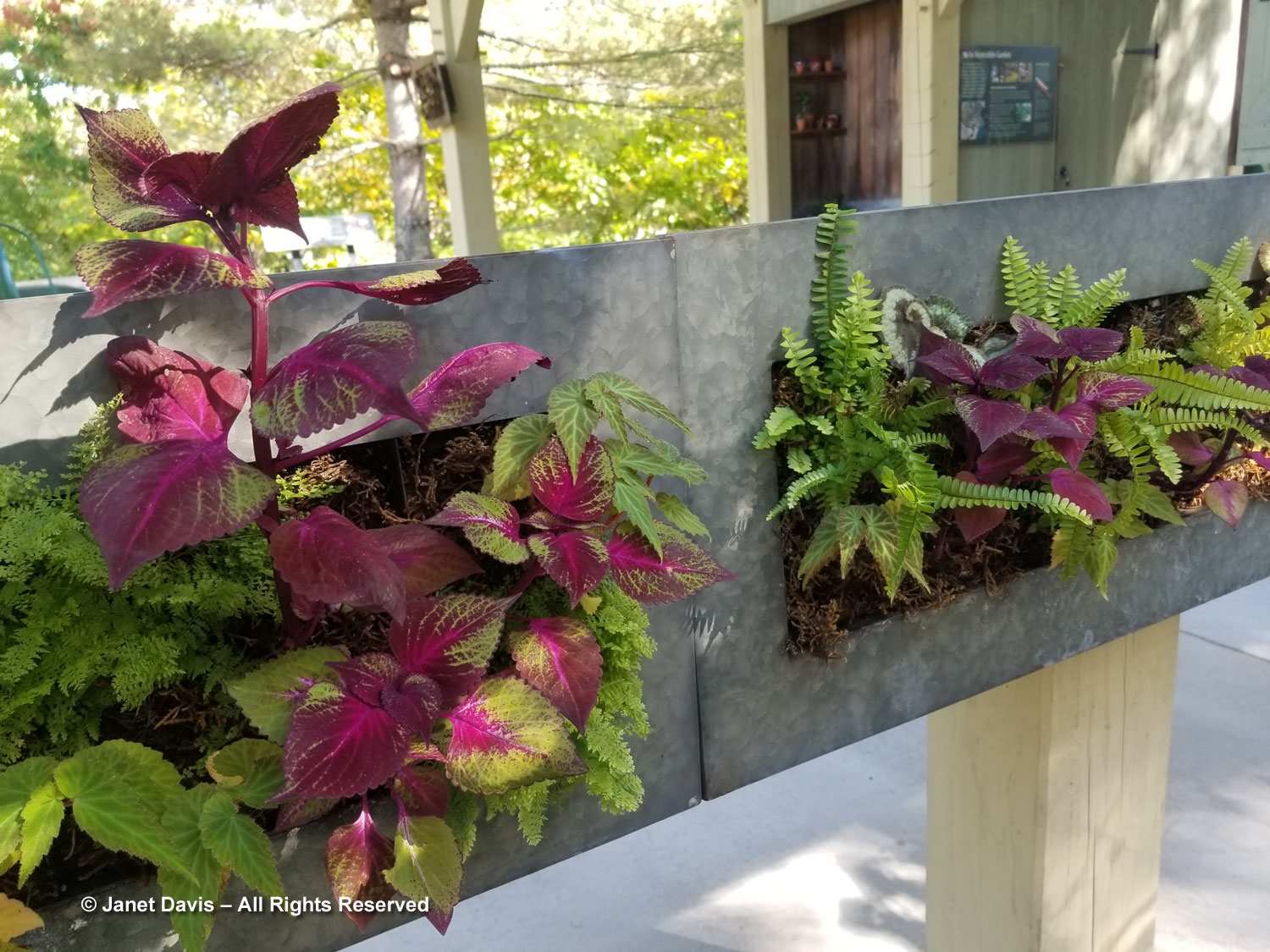
Of course, with good planning and construction there’s no need to bend over to grow vegetables, and the Lerner Garden shows the productive possibilities of raised beds.
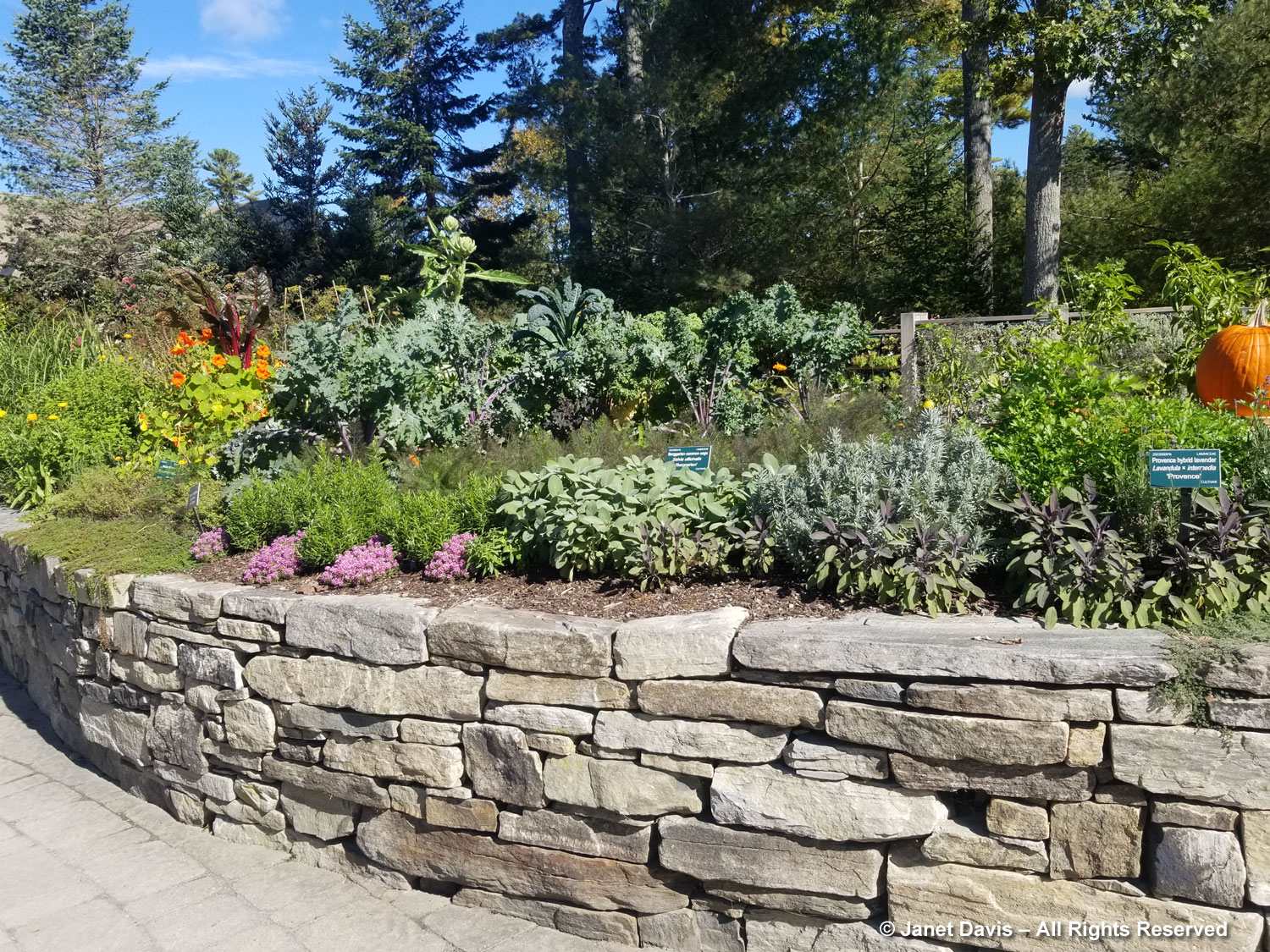
The sound of splashing water permeates the Lerner Garden, courtesy of the fountain in its handsome upper pond, whose water flows over the edge and recirculates to a lower pond.
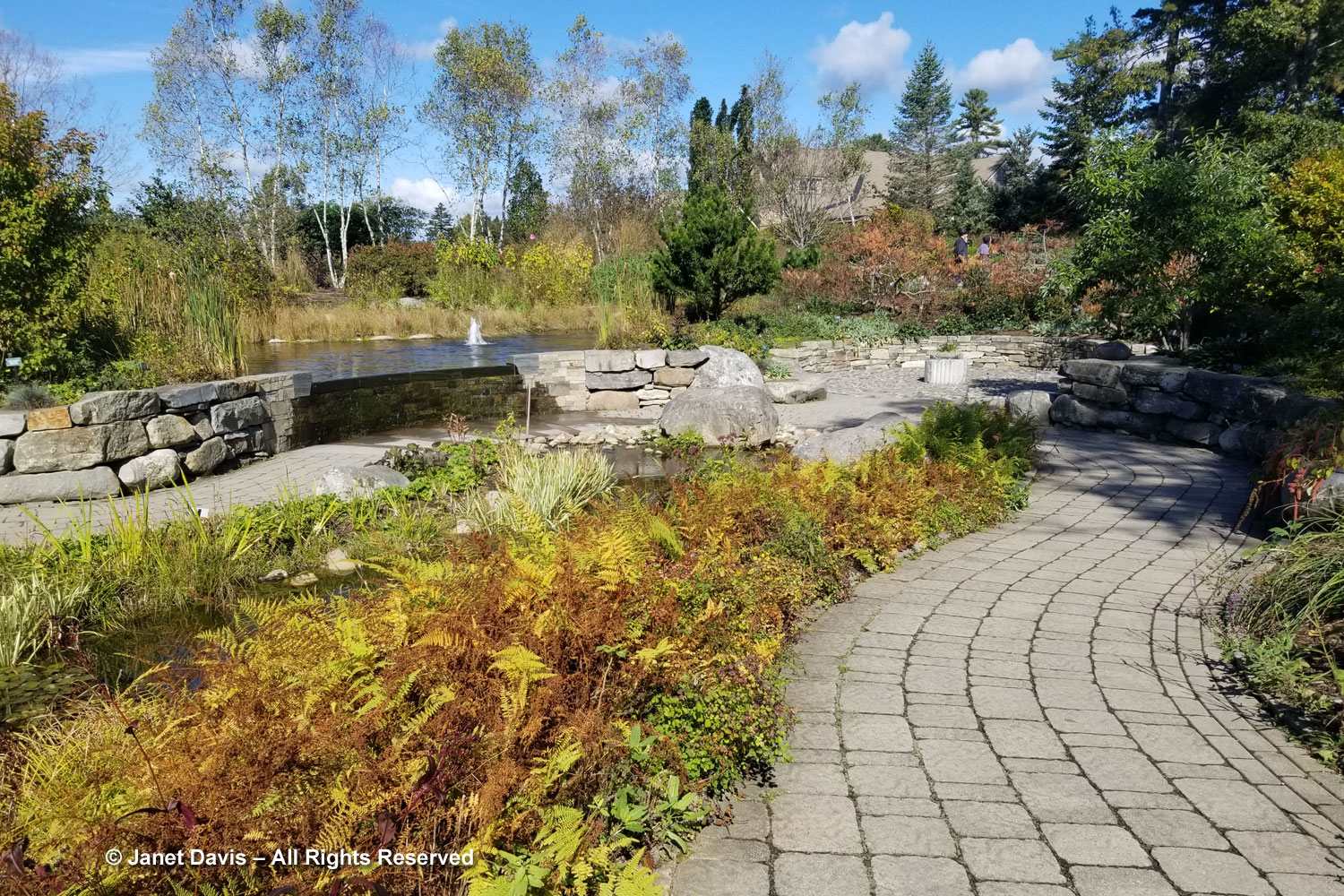
Here, there’s a fascinating sculpture reflected perfectly in the water. It also vibrates in a breeze, creating its own unique music.

George Sherwood’s kinetic ‘Flock of Birds’ sculpture was gleaming in the October sunshine.
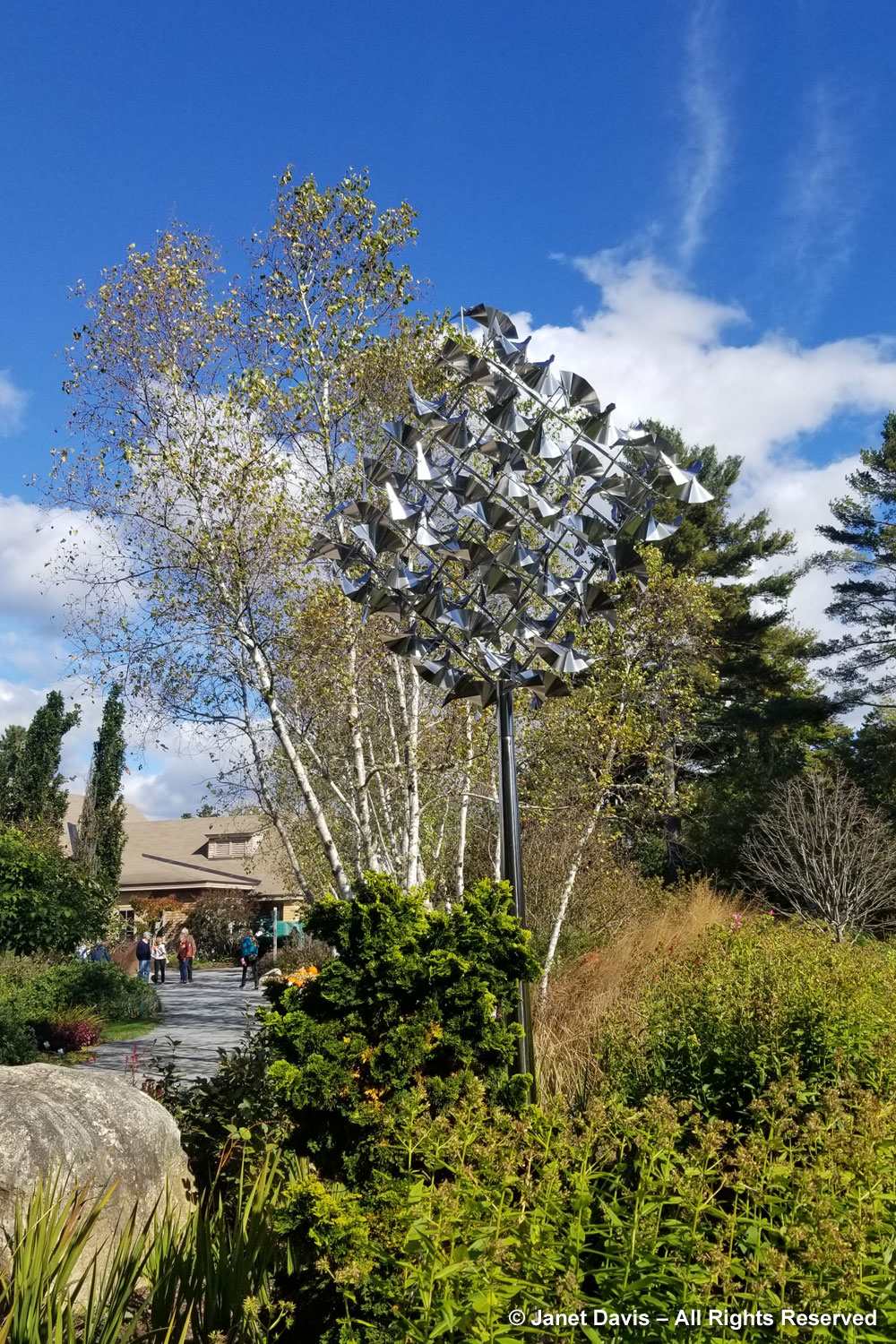
Rocks — smooth river rock, cobbles and cut boulders — are used extensively in the gardens. These ones offer a variety of sensory textures.

We left the Lerner Garden via a cool, shady planting under trees.

But there was still much to see at Coastal Maine Botanical Gardens. Stay tuned for Part Two including the Arbor Garden, the Haney Hillside Garden, the Vayo Meditation Garden and the amazing Bibby and Harold Alfond Children’s Garden!


